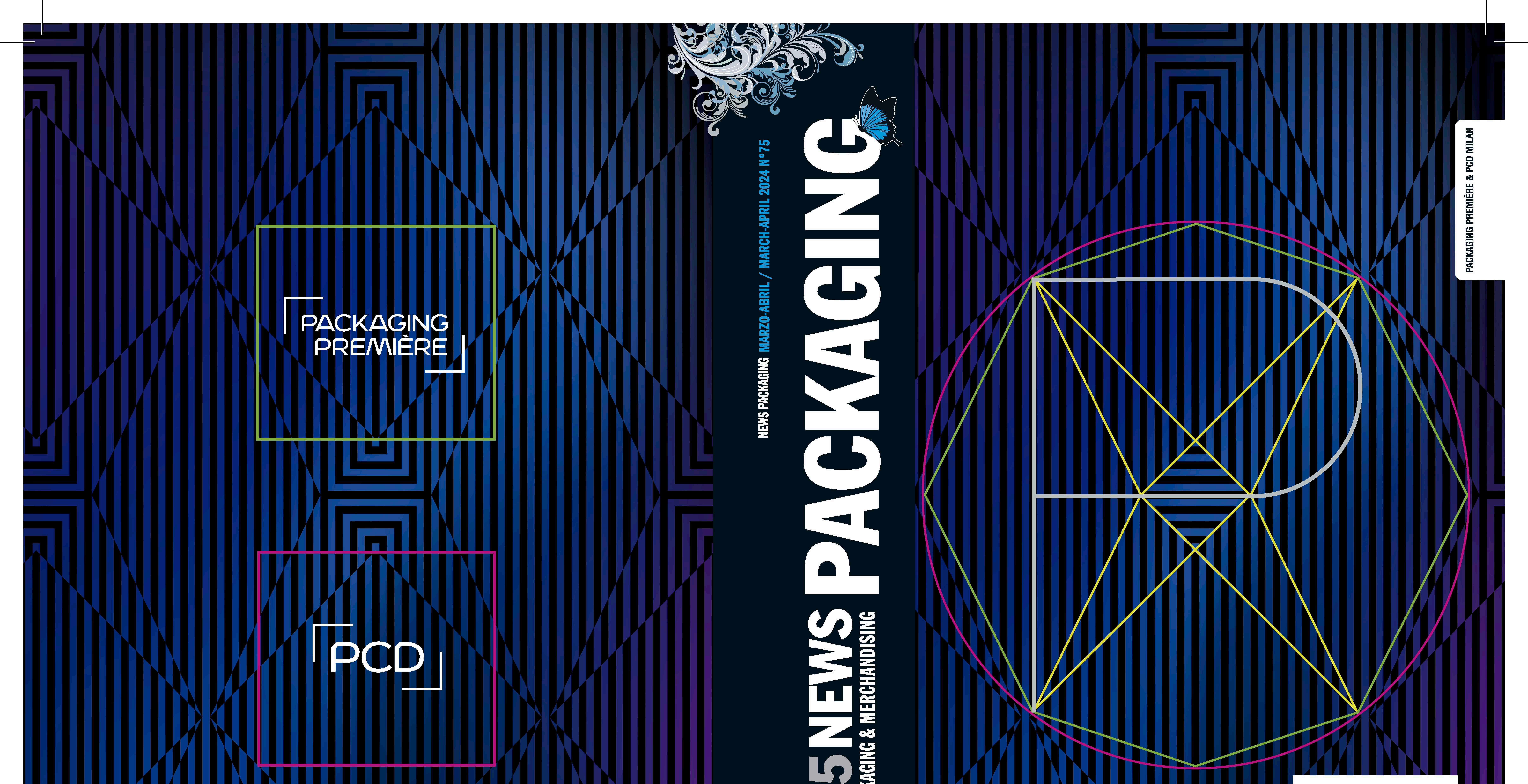


LABELS FOOD PACKAGING E-COMMERCE
PACKAGING PREMIÈRE & PCD MILAN
Packaging Première es el evento exclusivo dedicado a aquellos que diseñan packaging para el sector del lujo, a quienes lo fabrican y a las grandes marcas internacionales que desean confiar la protección de sus productos a "formas" que tengan la marca tangible y reconocible de la alta gama.
PCD es la fuerza motriz de la innovación en envases para el sector de la belleza. Este evento, que se originó en París en 2001, se lanzó en Milán en 2022, coincidiendo con Packaging Première.
Los visitantes de la edición 2024 tendrán la oportunidad de encontrarse con expositores de Italia, Francia, Alemania, España, Portugal, Reino Unido, Turquía, Corea del Sur, Hong Kong, y de asistir a un vasto calendario de conferencias que contarán con oradores de los sectores de belleza, vinos-licores y moda, como Amorepacific, Dom Pérignon, Bally, Pantone, entre otros.
Los visitantes también tendrán la oportunidad de conocer a los protagonistas de Avant-Garde, un concurso dedicado a los packaging más innovadores en términos de diseño, sostenibilidad y materiales innovadores.
Por primera vez, Packaging Première & PCD Milan albergarán un Design Hub, un espacio en el que cinco de las mejores agencias italianas especializadas en diseño de packaging para vinos y licores presentarán sus proyectos y creaciones.
La gráfica de esta portada, que será el hilo conductor de todo el evento, ha sido diseñada por el artista Vincenzo Marsiglia, que junto con sus estudiantes, será el protagonista además en la Art Gallery, una fuente creativa que sirve como prólogo al evento y que en ésta edición explorará el tema del arte digital.
PACKAGING PREMIÈRE & PCD MILAN
Packaging Première is the exclusive event dedicated to those who design packaging for the luxury sector, to those who produce it, and to major international brands that want to entrust the protection of their products to "forms" bearing the tangible and recognizable mark of high-end.
PCD is the driving force behind packaging innovation for the beauty sector. Born in Paris in 2001, the event was launched in Milan in 2022, in co-located with Packaging Première.
Visitors to the 2024 edition will have the opportunity to meet exhibitors from Italy, France, Germany, Spain, Portugal, the United Kingdom, Turkey, South Korea, Hong Kong, and attend a packed schedule of conferences featuring speakers from the beauty, wine & spirits, and fashion sectors, such as Amorepacific, Dom Pérignon, Bally, Pantone, and many others.
Visitors will also have the opportunity to meet the protagonists of Avant-Garde, a contest dedicated to the most innovative packaging in terms of design, sustainability, and innovative materials.
For the first time, Packaging Première and PCD Milan will host a Design Hub, a space where five of the best Italian agencies specialized in wine & spirits packaging design will present their projects and creations.
The graphic art for this cover – which will be the common thread throughout the event – was created by artist Vincenzo Marsiglia, who will be featured, along with his students, in the Art Gallery. This creative forge serves as a prologue to the event and, in this edition, will explore the theme of digital art.
Register for free with code 1208
Scan the QR-code and register online
www.packagingpremiere.it
Pasión, visión ecológica y funcionalidad
A las puertas de Alimentaria, que se celebra en Barcelona del 18 al 21 de marzo, dedicamos nuestro tema central al packaging para productos de alimentación Envases compostables e incluso comestibles, más fáciles de reciclar y con menor huella de carbono, que contribuyan a la economía circular, son las principales tendencias.
La sostenibilidad es también uno de los pilares fundamentales para el futuro de la industria de las etiquetas, impulsando la integración de tecnologías avanzadas y prácticas respetuosas con el medio ambiente. La innovación seguirá siendo clave para crear valor añadido a través de etiquetas que no solo informen y decoren, sino que también ofrezcan soluciones prácticas y ecológicas.
Este número cuenta también con un artículo especial dedicado al packaging de e-commerce, que se diferencia del tradicional en varios aspectos, como el hecho de priorizar la optimización del espacio disponible, lo que implica aplicar una mayor resistencia al embalaje y, por lo tanto, encarecer el precio de compra en comparación con el de un envío paletizado.
La funcionalidad y la sostenibilidad se unen a la creatividad, tal como se ejemplifica con los productos premiados por su packaging en los PCD/ADF/PLD Innovation Awards, los Pharmapack Awards, los Anuaria y los WordlStar. Con ocho galardones, España se mantiene, un año más, entre los diez países con más trofeos en los WorldStar Awards 2024, el concurso mundial de packaging que organiza anualmente la World Packaging Organisation (WPO), al que optan los trabajos ya galardonados en certámenes reconocidos por la WPO que, en el caso de España, son los Premios Liderpack convocados por Graphispack Asociación e Hispack de Fira de Barcelona, un salón que se celebrará entre el 7 y el 10 de mayo. Por último, queremos recomendarles la entrevista a Mireia Ruiz, una artista plástica que se dedica a su pasión artística, abordando el uso del color como herramienta comunicativa, que también ha colaborado con diferentes marcas en la creación de originales envases.
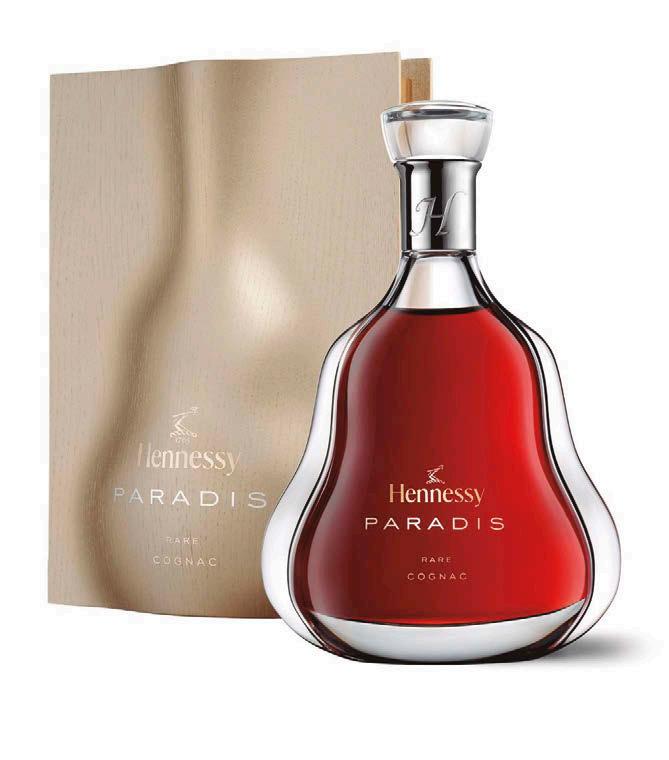
Passion, ecological vision and functionality
As we begin Alimentaria, which is held in Barcelona from March 18 to 21, we dedicate our central theme to packaging for food products Compostable and even edible packaging, easier to recycle and with a lower carbon footprint, which contribute to the circular economy, are the main trends.
Sustainability is also one of the fundamental pillars for the future of the label industry, promoting the integration of advanced technologies and environmentally friendly practices. Innovation will continue to be key to creating added value through labels that not only inform and decorate, but also offer practical and ecological solutions.
This issue also has a special article dedicated to e-commerce packaging, which differs from traditional packaging in several aspects, such as prioritizing the optimization of available space, which implies applying greater resistance to packaging and, therefore, making it more expensive. the purchase price compared to that of a palletized shipment. Functionality and sustainability come together with creativity, as exemplified by the products awarded for their packaging at the PCD/ADF/PLD Innovation Awards, the Pharmapack Awards, the Anuaria and the WordlStar. With eight awards, Spain remains, once again, among the ten countries with the most trophies in the WorldStar Awards 2024, the global packaging competition organized annually by the World Packaging Organization (WPO), to which works already awarded in competitions are eligible. recognized by the WPO which, in the case of Spain, are the Liderpack Awards organized by the Graphispack Association and Hispack of Fira de Barcelona, a show that will be held between May 7 and 10.
Finally, we would like to recommend the interview with Mireia Ruiz, a plastic artist who is dedicated to her artistic passion, addressing the use of color as a communicative tool, who has also collaborated with different brands in the creation of original packaging.

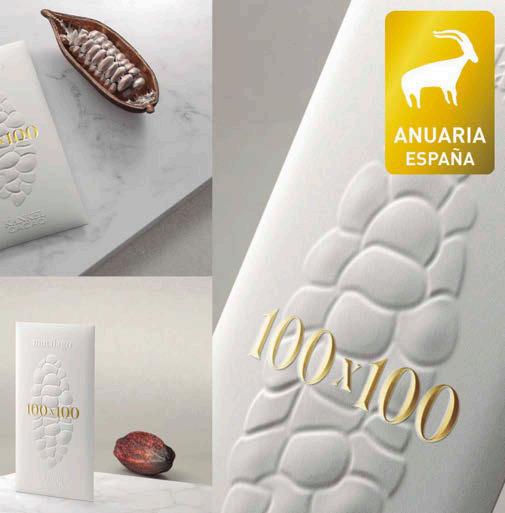

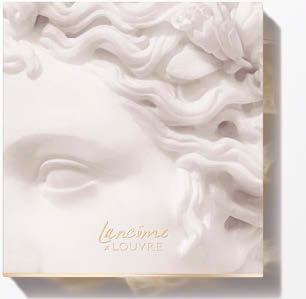
03
2
CHOICE
EDITOR’S
59 3
Anuaria Awarda . P.
1
PCD/ADF/PLD Awards. P. 82
4 Lancôme/Texen P. 10
Mireia Ruiz. P. 14

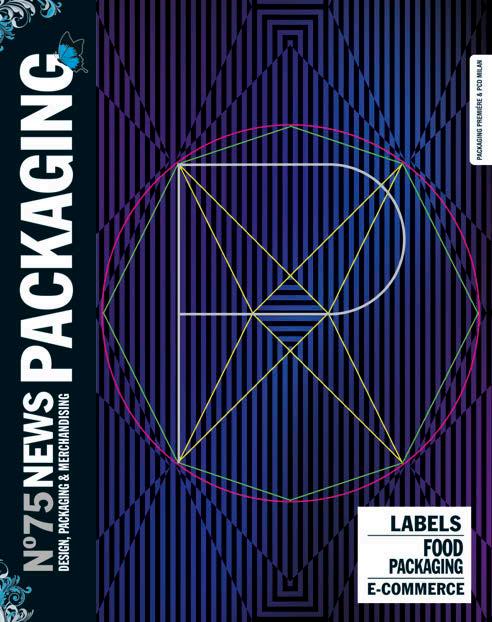

06
INNOVACIÓN INNOVATION
Aptar Beauty >Jean Paul Gaultier
TNT Group >Westman Atelier
G.Pivaudran >Chanel
Cosmogen >Horace Lumson >Sisley
Texen >Lancôme
Guerlain
TNT Group >Loubiworld
14
ENTREVISTA INTERVIEW
Mireia Ruiz - Artista
20
CREATIVIDAD CREATIVITY
Cabello x Mure
Rául Sauz
Narrow House
Javie Garduño
22
NOTICIAS NEWS
Etiquetas, un sector estable Labels, a stable sector
Colaborador Contributor
José Carrasquer - AIFEC
26
NOTICIAS NEWS
El e-commerce crece a nivel global E-commerce is growing globally Colaborador Contributor
Alfonso Moncasi - Asocommerce

30
TRENDS TENDENCIAS
Ecodiseño y prevención, de la intención a la acción por una economía circular real Ecodesign and prevention, from intention to action for a real circular economy, byr Laura García, Ecovidrio
34
TEMA CENTRAL MAIN TOPIC
Alimentación saludable y packaging sostenible Healthy food and sustainable packaging packaging
Colaboradores Contributors
Dr. Concha Bosch Navarro - AINIA Lucio Grether - Eurecat
42
CLÚSTER DEL PACKAGING
Actualidad Latest news
Entrevista al socio Member interview
Miquel Fontbona Puig - Inka Palet S.L.
46 NOTICIAS NEWS
Actualidad del mundo del packaging News in the world of packaging
63 SOSTENIBILIDAD SUSTAINABILITY
Noticias sobre sostenibilidad y packaging News about sustainability and packaging
69 NP FOOD
FOODIES Nuevos productos New products NOTICIAS NEWS
SOSTENIBILIDAD SUSTAINABILITY
79 FERIAS Y EVENTOS TRADE FAIRS & EVENTS
Packaging Première & PCD Milan Pharmapack Europe
Paris Packaging Week - PCD/ADF/PLD
Food4Future - Pick & Pack
AIFEC
Graphispag
Hispack
90 AGENDA
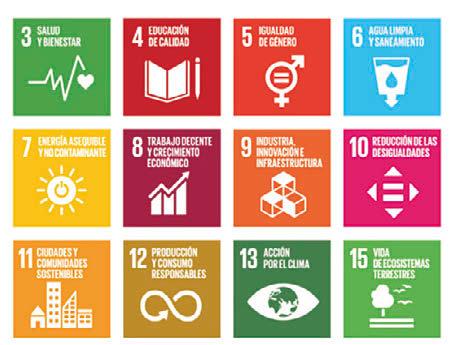




DIRECTORA / EDITOR-IN-CHIEF
Maica García: newspackaging@podiumgm.com Tel.: +34 932531628
DIRECTORA DE ARTE / ART DIRECTOR
Lorena Torres: ltorres@podiumgm.com
DIRECTOR TÉCNICO DE EDICIÓN / TECHNICAL DIRECTOR
Daniel Pérez: dperez@podiumgm.com
DISEÑO Y MAQUETACIÓN / DESIGN AND LAYOUT Òscar Julián: ojulian@podiumgm.com
Daniel Pérez: dperez@podiumgm.com
PUBLICIDAD / ADVERTISING
Carles Solsona: csolsona@podiumgm.com Tel.: +34 629509895
Ada Bergillos: adabergillos@podiumgm.com Tel.: +34 657569277
ENVÍOS Y SUSCRIPCIONES / DELIVERIES AND SUBSCRIPTIONS
Elena Moreno: emoreno@podiumgm.com
Tel.: +34 667496324
D.L.: B-13438-2012
ISSN: 2014-6493
ISSN DIGITAL: 2014-8690
www.newspackaging.es
RESPONSABLE DIGITAL / CHIEF DIGITAL OFFICER
Marc Florensa: mflorensa@podiumgm.com
EMPRESA EDITORA:

Tel.: 93 434 21 21
08009 Barcelona (España) podium@podiumgm.com
05
PODIUM GLOBAL MEDIA, S.L.
Pau Claris, 138, 1º 3ª
Diseño Portada Cover design Podium Global Media
www.newspackaging.es pinterest.com/newspackaging News Packaging Magazine
Podium Global Media inicia en 2020 su planificación y adaptación de los Objetivos de Desarrollo Sostenible. Por ello, queremos compartir los avances y logros obtenidos y fomentar la implantación de estos ODS a nuestros clientes y proveedores para alcanzar los objetivos de la Agenda 2030.
Con su sofisticado aspecto metálico, el dosificador de perfume VP4 SNl15 de Aptar Beauty realza el Eau de Parfum Gaultier Divine, disponible en formatos de 30, 50 y 100ml. Fiable e icónica, la bomba VP4 ofrece un spray eficiente y de alta calidad que realza esta fragancia decididamente femenina. Las bombas cuentan con un cuello de rosca para permitir el llenado. El color fue anodizado para combinar con el tono dorado del icónico corsé de Jean-Paul Gaultier, que adorna el frasco. La parte superior de este dosificador de tornillo está adornada con un anillo dorado que actúa como tapón, que simplemente hay que quitar para activar el spray. El gel de ducha y la loción corporal Gaultier Divine de 200ml se combinan con la bomba Satine de Aptar Beauty, que proporciona una dosis de 500ml.
With its sophisticated metallic appearance, Aptar Beauty's VP4 SNl15 perfume dispenser enhances the Gaultier Divine Eau de Parfum, available in 30, 50 and 100ml formats. Reliable and iconic, the VP4 pump offers an efficient, high-quality spray that enhances this decidedly feminine fragrance. The pumps have a screw neck to allow filling. The color was anodized to match the gold tone of Jean-Paul Gaultier's iconic corset, which adorns the bottle. The top of this screw dispenser is adorned with a gold ring that acts as a cap, which simply needs to be removed to activate the spray. The Gaultier Divine 200ml shower gel and body lotion are combined with Aptar Beauty's Satine pump, which provides a 500ml dose.

APTAR BEAUTY
TNT GROUP

El packaging mejora la aplicación de la fórmula gracias a su aplicador de bola dorada extraíble, junto con un dispositivo recargable y reutilizable. La bola de acero inoxidable extraíble patentada por TNT se sujeta mediante magnetización. Ofrece un movimiento de fluido ilimitado, así como una superficie de contacto con efecto frío. Gracias a un sistema de bomba integrado, basta con presionar el recambio para administrar la fórmula sin riesgo de retorno de aire o contaminación. Después de su uso, la bola extraíble del aplicador se puede limpiar por completo o colocar en el congelador. Reemplazar la recarga es fácil con la llave suministrada, producida por TNT Group. The packaging improves the application of the formula thanks to its removable golden ball applicator, along with a rechargeable and reusable device. TNT's patented removable stainless steel ball is held by magnetization. It offers unlimited fluid movement as well as a cool contact surface. Thanks to an integrated pump system, simply press the refill to administer the formula without the risk of air return or contamination. After use, the removable applicator ball can be cleaned completely or placed in the freezer. Replacing the refill is easy with the supplied key, produced by TNT Group.
06 INNOVACIÓN I INNOVATION
Dispensadores y productos promocionales de Aptar Beauty para Gaultier Divine. Aptar Beauty dispensers and promotional products for Gaultier Divine.
Westman Atelier crea el packaging de Skin Activator Rollerball con TNT Group. Westman Atelier creates the packaging for Skin Activator Rollerball with TNT Group.

Las máscaras cuentan con una proporción de PCR (Reciclado Post Consumo) de entre el 10 % y el 20 % según la decoración del modelo.
El reto de crear un objeto que ya tiene un alto grado de complejidad técnica y utiliza una estampación profunda sobre aluminio estándar, respetando los estándares de calidad de Chanel, se cumplió con éxito.
Hubo tres desafíos: la capacidad técnica de este nuevo material para transformarse mediante estampación profunda y mantener la calidad de decoración lisa o cepillada, en línea con el aspecto mate o brillante de la gama; el comportamiento y resultado estético tras la anodización, y la capacidad de garantizar la estabilidad de la materia prima a pesar de la adición de materiales reciclados.
The masks have a PCR (Post Consumer Recycling) ratio of between 10% and 20% depending on the decoration of the model.
The challenge of creating an object that already has a high degree of technical complexity and uses deep stamping on standard aluminum, respecting Chanel's quality standards, was successfully met.
There were three challenges: the technical ability of this new material to be transformed by deep stamping and maintain the smooth or brushed decoration quality, in line with the matte or glossy look of the range; the behavior and aesthetic result after anodization, and the ability to guarantee the stability of the raw material despite the addition of recycled materials.

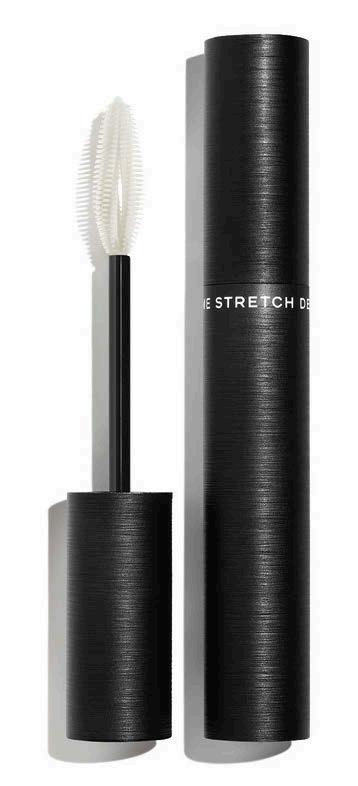

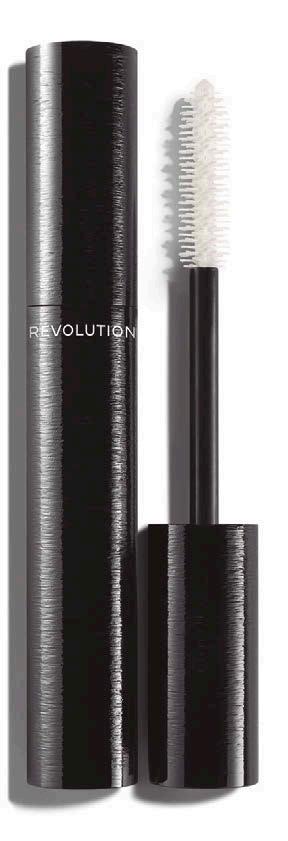
Chanel y G.Pivaudran lanzan la primera máscara de pestañas de aluminio reciclado. Hay tres formatos de Chanel Mascara Volume . Chanel and G.Pivaudran launch the first recycled aluminum mascara. There are three formats of Chanel Mascara Volume: Volume, Volume Revolution and Volume Stretch.

Inspirándose en el tubo patentado Tense, Horace ha imaginado su Contorno de Ojos Hidratante en un tubo con punta de metal, reutilizable con recambio. Esta crema hidrata y suaviza el contorno de ojos. El aplicador metálico reutilizable refresca y descongestiona inmediatamente la zona. Cosmogen Tense Tube es un envase patentado, disponible en plástico reciclado (PCR), con un aplicador extraíble de cerámica o metal, reutilizable en una recarga. Inspired by the patented Tense tube, Horace has imagined his Moisturizing Eye Contour in a tube with a metal tip, reusable with a refill. This cream hydrates and softens the eye contour. The reusable metal applicator immediately refreshes and decongests the area.
Cosmogen Tense Tube is a patented packaging, available in recycled plastic (PCR), with a removable ceramic or metal applicator, reusable in a refill.
COSMOGEN
08 INNOVACIÓN I INNOVATION
Horace embellece los ojos con el tubo Tense de Cosmogen. Horace beautifies the eyes with the Cosmogen Tense tube.
G.PIVAUDRAN

From standard to customized, we provide the best fully integrated packaging solutions for perfumes, make-up and cosmetics. PACKAGING MAKERS FOR BEAUTY www.myapackaging.com sales@myapackaging.com Desde envases standard a desarrollos personalizados, proporcionamos las mejores soluciones de packaging para perfumería, maquillaje y cosmética.
TEXEN
Un envase de vidrio airless con tecnología «pouch», donde reina el oro, con reflejos metálicos que resaltan las líneas del frasco. El surtidor dorado y el tapón recubierto de aluminio dorado de efecto cepillado con el logotipo grabado confieren elegancia al frasco. El lacado efecto espejo en el interior, combinado con un lacado exterior en oro brillante semitransparente sombreado con serigrafía UV en el exterior, completan el diseño. El sistema de bolsa airless mantiene la fórmula totalmente intacta y la protege de cualquier contaminación externa. Y además es sostenible: después de su uso, el vidrio se puede separar del resto de componentes y reciclarse adecuadamente.
An airless glass container with “pouch” technology, where gold reigns, with metallic reflections that highlight the lines of the bottle. The gold spout and the brushed-effect gold aluminum covered cap with the engraved logo give elegance to the bottle. The mirror effect lacquer on the inside, combined with a semi-transparent glossy gold exterior lacquer shaded with UV screen printing on the outside, complete the design.
The airless bag system keeps the formula completely intact and protects it from any external contamination. And it is also sustainable: after use, the glass can be separated from the rest of the components and properly recycled.

Para el envase de Supremÿa La Nuit, Sisley ha recurrido a Lumson, que ha desarrollado un packaging personalizado. For the Supremÿa La Nuit, Sisley has turned to Lumson, which has developed personalized packaging.
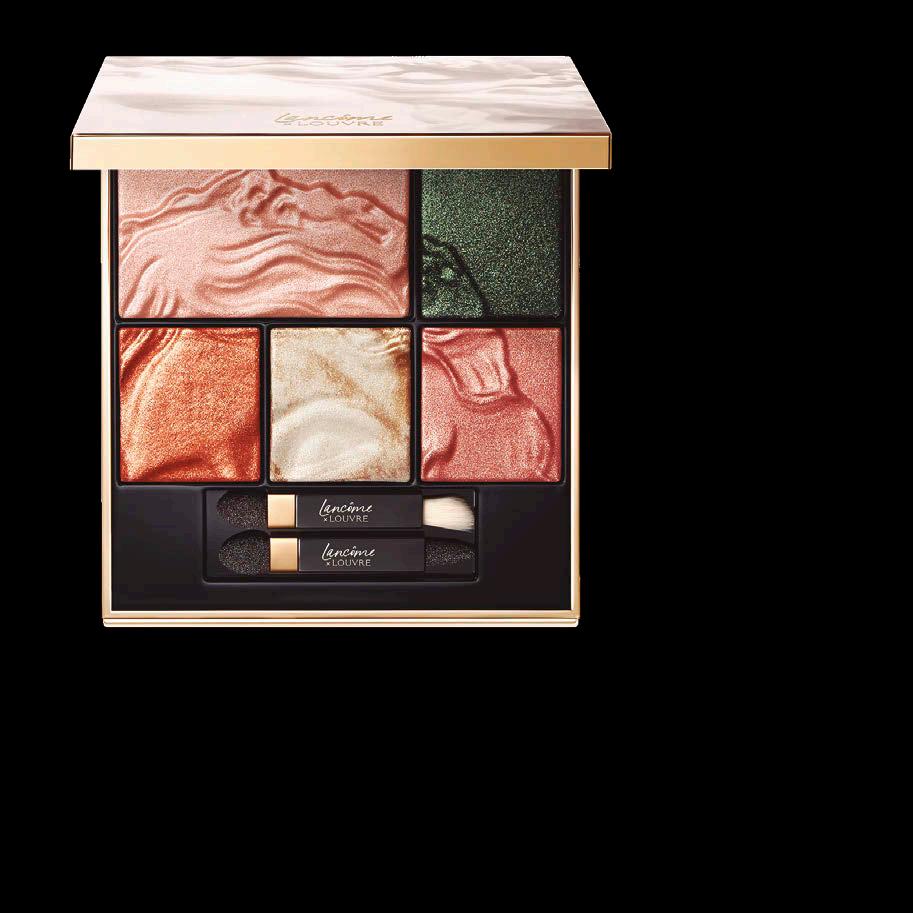
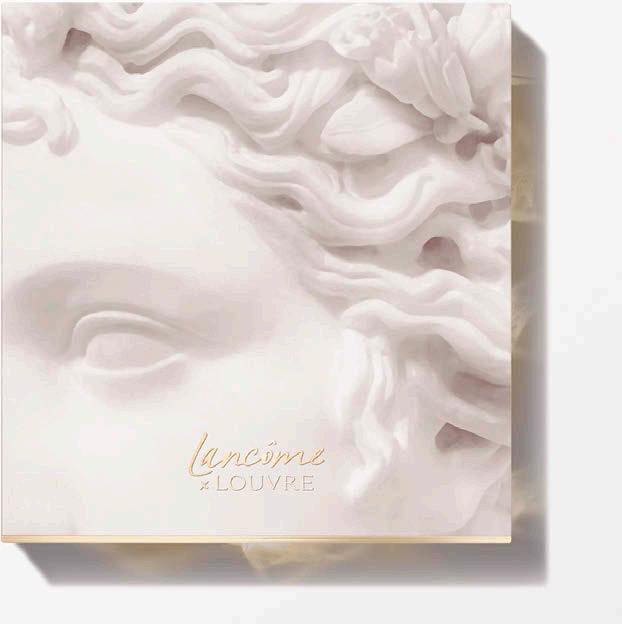
Lancôme eligió una paleta de maquillaje de Texen Beauty Partners de forma cuadrada, simple y minimalista. En el interior de la base, un inserto específico alberga cinco recipientes y huecos para dos cepillos. La fórmula se prensa y se estampa directamente con el motivo gracias a una técnica que resalta los colores y ofrece un brillo mejorado. El compacto muestra un primer plano de la escultura en fotograma completo en la tapa. La caja se metaliza por fuera antes de decorarla y el reto fue restituir una fotografía artística en alta calidad. Para ello, Texen utilizó la técnica de la etiqueta por transferencia de calor.
Lancôme chose a Texen Beauty Partners makeup palette with a square, simple and minimalist shape. Inside the base, a specific insert houses five containers and spaces for two brushes. The formula is pressed and stamped directly with the motif thanks to a technique that highlights colors and offers improved shine. The compact shows a full-frame close-up of the sculpture on the cover. The box is metalized on the outside before being decorated and the challenge was to restore a high-quality artistic photograph. To do this, Texen used the heat transfer label technique.
10 INNOVACIÓN I INNOVATION
LUMSON
Texen da vida a la colaboración de Lancôme (L’Oréal) con el Museo del Louvre, una paleta de maquillaje con la imagen de la poetisa griega Corinna en una obra del escultor francés Etienne Gois, expuesta en el Louvre. Texen brings to life the collaboration of Lancôme (L'Oréal) with the Louvre Museum, a makeup palette with the image of the Greek poetess Corinna in a work by the French sculptor Etienne Gois, exhibited at the Louvre.
7-10 MAYO 2024 RECINTO GRAN VIA - BARCELONA www.hispack.com #hispack
TNT GROUP
Para celebrar el 110º aniversario de su histórica sede parisina en Avenue des Champs-Élysées, el legendario Frasco Tortuga de Guerlain renace con una edición limitada Métier d'Art. Envuelta en un rojo incandescente, Guerlain desvela esta obra maestra de cristal elaborada íntegramente a mano por la Maison Baccarat, que evoca la creación original esculpida por los maestros vidrieros para la apertura de la boutique en 1914. Es de un tono ‘rojo Baccarat’, creado por un vidriero alquimista que descubrió que el cristal transparente infundido con oro de 24 quilates se vuelve rojo con el calor. El frasco tiene forma de tortuga: un caparazón translúcido decorado con motivos en relieve, que evocan las escamas, y minuciosos detalles en las patas, la cabeza y la cola. To celebrate the 110th anniversary of its historic Parisian headquarters on Avenue des ChampsÉlysées, Guerlain's legendary Turtle Flask is reborn with a limited edition Métier d'Art. Wrapped in an incandescent red, Guerlain unveils this crystal masterpiece made entirely by hand by the Maison Baccarat, reminiscent of the original creation sculpted by the master glassmakers for the opening of the boutique in 1914. It is a 'Baccarat red' hue, created by an alchemist glassmaker who discovered that clear glass infused with 24 karat gold turns red with heat. The bottle is shaped like a turtle: a translucent shell decorated with relief motifs, reminiscent of scales, and meticulous details on the legs, head and tail.


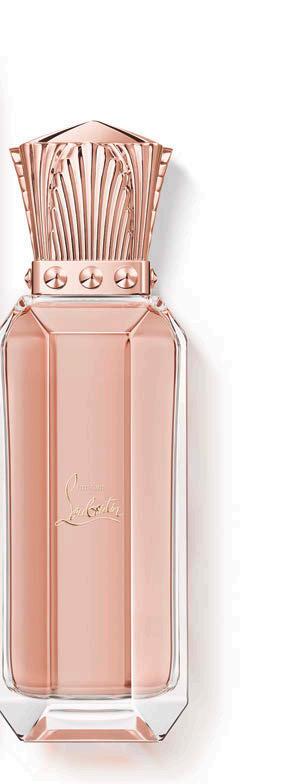

GUERLAIN
El formato de 50ml de la colección Loubiworld adopta un sobrio tapón de zamac de estilo oriental, diseñado y fabricado por TNT Group, así como la tapa del dosificador de aluminio. Se utilizaron tres procesos de acabado para el tapón de zamak: galvanizado al níquel, revestimiento en oro rosa, revestimiento en oro naranja y barniz UV para las tres referencias de la colección Middle East. La tapa de la bomba de aluminio se adapta a los acabados del tapón mediante un proceso de anodizado en plata, oro rosa y oro naranja respectivamente. Un inserto de PP rojo, ensamblado mediante clipaje, asegura el cierre. The 50ml format of the Loubiworld collection adopts a sober oriental-style zamac cap, designed and manufactured by TNT Group, as well as the aluminum dispenser lid. Three finishing processes were used for the zamak cap: nickel electroplating, rose gold coating, orange gold coating and UV varnish for the three references of the Middle East collection. The aluminum pump cover adapts to the finishes of the cap through an anodizing process in silver, rose gold and orange gold respectively. A red PP insert, assembled by clipping, ensures an ideal closure.
12 INNOVACIÓN I INNOVATION
Edición limitada del Frasco Tortuga de Guerlain con el color rojo característico de Baccarat y el perfume Champs-Élysées. Limited edition of the Guerlain Turtle Flask with Baccarat's characteristic red color and the Champs-Élysées perfume.
TNT Group crea nuevos tapones para la colección Loubiworld. TNT Group creates new caps for the Loubiworld collection.


Ha estudiado diseño gráfico, pero es, sobre todo, autodidacta, ¿es así?
Mi formación es en diseño gráfico, pero efectivamente he aprendido de manera autodidacta en varios campos como: la fotografía, la escenografía para producto y las artes plásticas. Me considero una persona curiosa y me gusta aprender nuevas técnicas y herramientas para llevar a cabo mis ideas y proyectos. Como docente me encuentro con alumnos que se estresan por verificar que su elección en los estudios ha sido la correcta, como algo inamovible, yo intento darles mi experiencia como ejemplo. Es normal y no debe dar miedo que una persona a lo largo de su vida
pueda variar su profesión y sumarle nuevos conocimientos.
Ahora imparte clases en IDEP. ¿Cómo se ven las cosas al otro lado?
Observo muchos temores, principalmente desconfianza en sus capacidades creativas. Me centro mucho en reforzar esa parte, intento hacerles ver sus puntos fuertes, no solo los débiles. E insisto en que es una carrera de fondo, la escuela es un entrenamiento para el mundo laboral. Insisto mucho en el autoproyecto para demostrar de qué son capaces de crear sin esperar el encargo perfecto. Esos resultados inesperados y que salen
Mireia Ruiz
«Las emociones también pueden surgir ante un buen diseño»
"Emotions can also arise when faced with good design"
Mireia Ruiz es una artista plástica que vive y trabaja en su estudio en Barcelona. Hoy se dedica a su pasión artística, abordando el uso del color como herramienta comunicativa.
Mireia Ruiz is a plastic artist who lives and works in her studio in Barcelona. Today, she devotes herself to her artistic passion, by dealing with the use of color as a communicative tool.
de la inquietud propia pueden atraer a clientes que se ven seducidos por esa frescura y constancia. La constancia es esencial en el mundo creativo, esa faceta creo que ha provocado lo que he conseguido en mi carrera profesional.
Para usted, el color es muy importante. ¿Por qué? El color es un lenguaje visual que afecta al estado anímico del que lo percibe, por ese motivo me interesa explorar las diferentes gamas cromáticas y cómo la gente reacciona con el color. Sobre todo con los colores más saturados, que exaltan muchas emociones y pueden inquietarte; por el contrario las gamas neutras o análogas relajan, y te
14 ENTREVISTA I INTERVIEW
Artista Artist
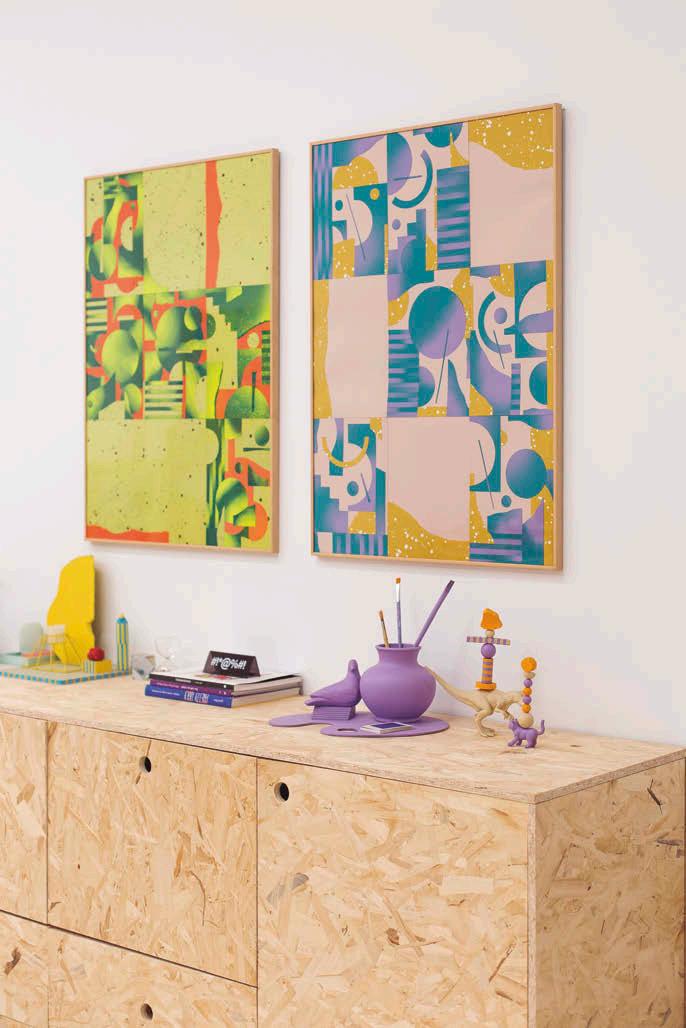
mantienen en un entorno más cómodo.
Me considero una niña de los 80 y la explosión del color causó un gran impacto para mi, desde el mundo de la moda, el grafismo o el mobiliario. Guardo con cariño un libro del grupo Memphis, fundado en 1981, diseñadores, arquitectos y grafistas de Milán que se reunieron en torno al gran Ettore Sttsass. Ellos marcaron esa explosión de colores vivos, uniendo formas y materiales inusuales que te hacen soñar en un entorno provocador y creativo.
Y de manera mucho más particular y personal, el color marcó toda mi infancia, ya que mi madre me obsesionó con las combinaciones en mi vestimenta. Tenía zapatillas de casi todos los colores que encajaban con ciertas prendas de mi armario. Para mi el color era un juego diario, y en mi adolescencia tuve épocas que vestía totalmente de azul, de rojo, de rosa…
Todas esas experiencias e influencias se vuelcan en mi trabajo. La elección cromática en mis proyectos es fundamental, suelo pensarlo mucho, y después de esa elección soy fiel hasta finalizarlos, le llamo «el pacto de color». Creo que la clave es no tenerle miedo al color y sentirlo, dejando a un lado el significado que nuestra cultura le pueda otorgar, ya que nos puede condicionar. «Cualquier color por mucho que lo odies, si lo practicas puedes acabar amándolo». Esta reflexión es de Josef Albers, un referente en la práctica del color, que
menciona en su libro ‘Interacción del color’, y que no le falta razón.
Estamos envueltos en diseño continuamente, pero el arte es más personal. ¿Cree que el arte siempre debe despertar emociones?
El diseño nos ayuda a comunicar un mensaje, nos ayuda a encontrar soluciones y tiene una función concreta, se ve limitado al brief, a las necesidades comunicativas del cliente y a la comprensión del receptor, es el cable de unión y debe funcionar. En cambio el arte se estructura en base al mensaje del artista, pero, al contrario que el diseño, puede ser menos explicito, con lo cual mucho más libre. Es decir, hay mensaje, pero el medio para transmitirlo puede ser tan poco evidente que por eso hablamos de «sentir». Si lo pensamos, los sentimientos son más complejos, y pueden ser subjetivos, al mismo tiempo el arte puede despertar sentimientos distintos dependiendo del receptor, e incluso puede llevarte a reflexiones personales a partir de la obra del artista. Para mí, el arte y el diseño tienen un mensaje, pero en el diseño es más evidente y en el arte es más intuitivo, el artista te deja cierta libertad de interpretación, que es donde pueden nacer los sentimientos o emociones. Creo que no se trata de dejar las emociones limitadas en el mundo del arte, las emociones también pueden surgir ante un buen diseño. Pero para explicar ciertas obras de arte es más fácil hablar de ellas con sentimientos, sobre todo si hablamos del arte abstracto.
Es un tema bastante complejo, sabiendo que aunque arte y diseño no son lo mismo, sí se interpelan en muchas ocasiones. Y la libertad que goza el arte le hace experimentar en nuevos lenguajes visuales más fácilmente, algo que nutre el mundo del diseño.
Si trabajaran más de la mano: arte, diseño, ingeniería y ciencia, se resolverían de manera más creativa, funcional y emocional muchos proyectos. Hago referencia a esto ya que siempre se tiende a separar a los perfiles profesionales, algo que sí se practica en el Mit Media Lab de Massachusetts.
En su bio, dice que su principal motivación es «pintar mis obras con color para transmitir un mensaje positivo y desarrollar un universo paralelo». ¿Cómo sería este universo utópico?
Un universo utópico sería empático, amable, respetuoso, pacífico... todas aquellas características que nos hacen buenos. Ese lugar se construye en nuestra mente, podemos mejorar el presente y
La elección cromática en mis proyectos es fundamental, suelo pensarlo mucho, y después de esa elección soy fiel hasta finalizarlos, le llamo «el pacto de color»
‘The chromatic choice in my projects is fundamental, I usually think about it a lot, and after that choice I am faithful until they are finished, I call it "the color pact"
acercarlo a la utopía. Aunque la realidad es tan compleja y dura que cuesta imaginarlo, creo que por ese motivo construyo mi propio lugar a través de mis obras. El color es la herramienta visual que transmite esa positividad, que nace de la naturaleza limpia y auténtica, que me aleja de la os-
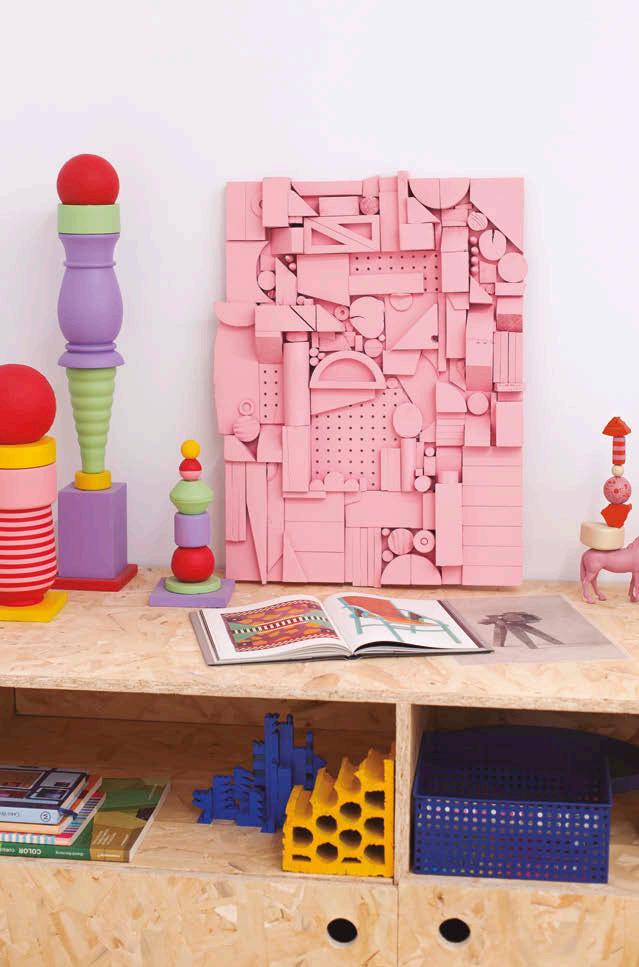
15 ENTREVISTA I INTERVIEW
curidad que llevamos dentro. Vivimos el sufrimiento, la codicia, el individualismo, y un largo etcétera de miserias que nos hacen al mismo tiempo humanos. Somos el bien y el mal, ejercemos el bien y el mal, esa lucha de fuerzas tiene un fin. No tengo la solución, no soy científica, no soy política, no tengo un cargo destacable en el tablero, pero sí puedo proyectar cierta energía a través de mi trabajo.
Su trabajo es sobre todo pictórico, acrílico sobre lienzo, pero también sobre papel o madera. ¿Hasta qué punto son importantes los materiales?
La materia es importante porque es tangible y es limitada. Siempre me ha gustado trabajar con la pintura porque tiene un poder transformador. Pinto objetos que me encuentro o rescato y les doy otra oportunidad. Tendemos a desechar muchos materiales y no podemos permitirnos ese lujo. Una labor que me encanta es trabajar con retales, trozos o descartes de maderas. La madera es un material noble, finito y que necesita su tiempo de crecimiento. Me duele ver sillas, tablones, muebles en la basura, así que intento recolectarlos y transformarlos en collages. Es una manera como tantas otras de reutilizar el material, ya que, a diferencia del lienzo donde establezco qué quiero y
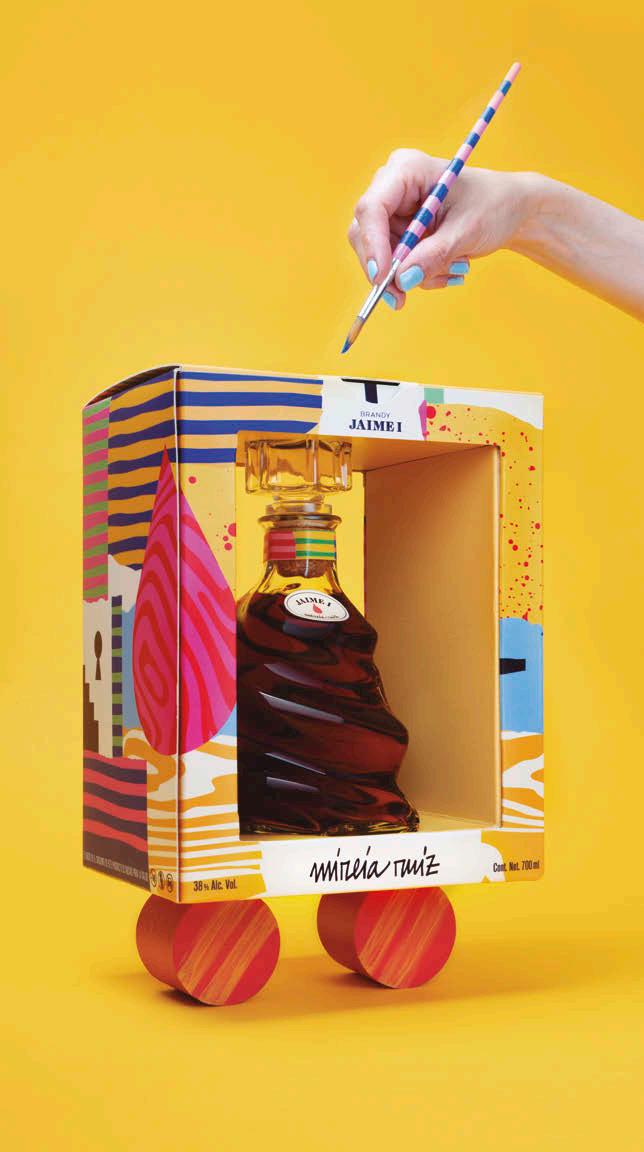
Si trabajaran más de la mano arte, diseño, ingeniería y ciencia, se resolverían de manera más creativa, funcional y emocional muchos proyectos If art, design, engineering and science worked more hand in hand, many projects would be resolved in a more creative, functional and emotional way
cómo lo quiero, con este otro proceso no es lo que quiero, sino lo que tengo, lo que se me ofrece. Por ese motivo no sé cómo será la obra finalmente, tiene un efecto sorpresa para mí, no decido parte de la obra, ella se va construyendo con mis decisiones pero no puedo controlarla totalmente. Eso también hace que de alguna manera luche con las premisas de la perfección, no error, no experimentar y controlar... que pueden resultar asfixiantes.
Ha expuesto, sobre todo, en muestras colectivas. Para un artista, ¿es difícil exponer su obra individualmente?
Realmente las propuestas que he recibido han sido colectivas, y por otro lado, no he propuesto hacer una exposición individual. Es un asunto más personal, creo que por falta de confianza y tiempo, ya que siempre he combinado mi faceta artística con la del diseño o la fotografía, por ese motivo no he conseguido concentrarme en crear una exposición que se centre en un tema y un conjunto de obras que lo expresen. Las buenas noticias son que este año lo quiero lograr y, si todo va bien, a finales de año haré mi segunda exposición individual en Barcelona.
¿Cree que el arte no se valora suficientemente? Es decir, a nivel escolar, por ejemplo... O a nivel social, ciertas manifestaciones artísticas como el street art… El dibujo es la primera herramienta comunicativa
que realizamos de pequeños, antes que el lenguaje. A medida que creces se tiende a valorar la técnica, dejando un lado la libertad y la experimentación. Por eso siempre escuchas a la gente decir «no sé dibujar», creo que sería más correcto decir: no me gusta o sí me gusta. Académicamente y socialmente te enseñan a que, si no reproduces bien las proporciones o la luz, el realismo en concreto, ya no sirves. Para mí eso es un error que personalmente me condicionó, hay muchas formas de expresarte artísticamente. El arte no es la profesión que tiene mejor fama, todos conocemos las vidas de miseria de muchos artistas, aún conociendo las exitosas trayectorias de algunos de los más famosos. Cosa que seguro que pasa en otras profesiones, pero el arte, como apunta, no tiene el mismo valor.
Quizás es algo relacionado con el valor que se le da a lo cultural, cuando sabemos que todos necesitamos sentir, ver, interpretar y disfrutar del arte. Hablando del street art, que puede molestar si no se ejerce con permiso, creo que si se fomentase el muralismo en las ciudades podríamos tener un museo al aire libre, para todos, podría llenar de vida y reflexión las calles grises.
De sus clientes y colaboraciones, ¿recuerda alguna en especial?
La colaboración que recuerdo de manera especial es la que hice con la marca australiana Gorman Clothing. Cada temporada colabora con un artista, y a partir de su obra elabora una colección limitada. Ver cómo mis cuadros pasaban de estar en la pared, reposados, se transformaban en estampados y cobraban vida con la moda, fue increíble. Una experiencia que me enamoró y he seguido colaborando con otras marcas de ropa, es una sensación emocionante vestirte con tu propio arte. Pude visitar Melbourne y conocer a todo el equipo que lo hizo posible, ver las tiendas con mi nombre rotulado en los escaparates, me sentí muy respetada y valorada. Esta colaboración me abrió las puertas para muchas otras.
¿Cómo aborda las colaboraciones?
Cuando trabajo para colaboraciones, independientemente del producto a tratar, todo parte de mi trabajo previo. Antes de empezar, a mis clientes les digo que se revisen mi trabajo, porque me expreso de diversas maneras, y me manden aquellas obras que les emocionan más. Y a continuación empiezo a trabajar con esa base, luego les mando las propuestas y así nos vamos acercando a un resultado común. Parte de mi trabajo es cre-
16 ENTREVISTA I INTERVIEW
‘
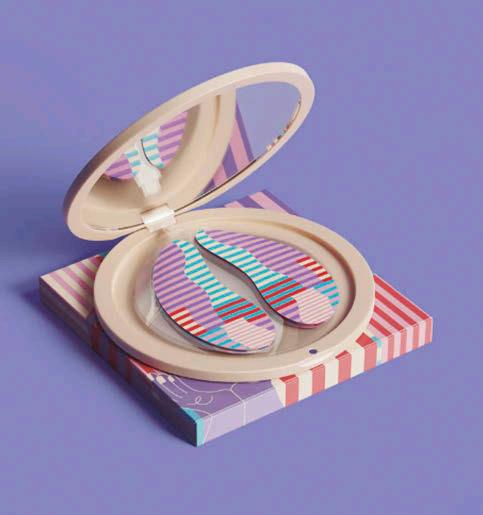
ar para mostrar qué puedo hacer.
Todos mis proyectos están muy relacionados con mi imaginario, así que para mí no es muy diferente aplicarlo en cualquier formato.
En packaging, destaca la edición limitada de Torres Brandy Jaime I, con un estuche basado en la pintura de la barrica donde envejece el brandy. ¿Nos puede hablar de esta colaboración?
La colaboración para Torres Brandy ha sido un encargo muy interesante por la intención y el forma-

to. Que una marca de prestigio ponga en valor a artistas en activo es una acción muy gratificante para ambas partes. Como me encanta pintar, en cuanto me explicaron que el reto era pintar una barrica me emocioné enseguida, y al saber que formaría parte de una colección especial de muchos otros artistas, no dudé en unirme al proyecto. Para inspirarme, hice una visita guiada a sus instalaciones y me explicaron con detalle todo el proceso de elaboración del brandy Jaume I, un trabajo que requiere paciencia y tiempo.
Lo primero que vi fueron los campos de viñedos, la tierra y su textura, las uvas y sus formas, una hormiga que se cruzaba en mi camino... Suelo fijarme en ese tipo de detalles. Como la textura de la madera en la barrica, el brandy y su color, los reflejos en una botella tan especial, con curvas y giros. Pero había algo que nos unía especialmente, el tiempo. Para hacer ese brandy Torres, se necesita tiempo, constancia y un lugar donde mimarlo, por ese motivo en mi interpretación aparece el reloj de arena, la escalera como símbolo de esfuerzo y una cerradura, un lugar cerrado para que se elabore. Todos estos elementos, junto a las texturas y los campos de viñedos, se entrelazan en mi obra para Torres.
¿Ha hecho algún otro trabajo de packaging? ¿Le gustaría?
Recientemente he colaborado con la marca estadunidense Jaime Makeup, para el packaging de unos parches para el contorno de ojos. La propuesta era muy interesante porque diseñaba el estuche y la caja que lo acompaña. Además ellos ya habían colaborado con un ilustrador para otros productos y respetaron mucho mi estilo, por mi parte, trabajé con su gama cromática corporativa. Un lenguaje que entiendo, el de las marcas y el branding, ya que mi formación como grafista me permite orgánicamente aplicar mi arte de manera que encaje con la marca.
Me encanta establecer este tipo de colaboraciones, me enriquece que mi arte se adapte a diferentes formatos, ya sea el packaging o el textil u otra propuesta. Al final un cuadro queda colgado en una pared, las colaboraciones te permiten llegar a más públicos y me hacen salir de la monotonía.
¿Cuáles son sus próximos proyectos?
Tengo un proyecto que cruzo lo dedos para que salga, porque me haría feliz, pero no puedo hablar de ello todavía. Justo empezamos el año y ya hay propuestas, pero de momento son colaboraciones
que no están cerradas. Como comentaba, mientras tanto, me concentraré en mi exposición individual y en elaborar un conjunto de obra importante para hablar del hecho fortuito del encuentro, no entre personas, sino entre personas y cosas, cómo los objetos influyen en tu entorno.
You have studied graphic design, but I think you are, above all, self-taught, is that correct?
My training is in graphic design, but I have actually learned self-taught in various fields such as: photography, product scenography, and plastic arts. I consider myself a curious person and I like to learn new techniques and tools to carry out my ideas and projects. As a teacher I encounter students who are stressed about verifying that their choice in studies has been the correct one, as something immovable, I try to give them my experience as an example. It is normal and should not be scary that a person throughout their life can change their profession and add new knowledge.
Now you teach classes at IDEP. What do things look like on the other side?
I observe many fears, mainly distrust in their creative abilities. I focus a lot on reinforcing that part, I try to make them see their strong points, not just their weaknesses. And I insist that it is a long-distance race, school is training for the world of work. I insist a lot on self-projects to demonstrate what they are capable of creating without waiting for the perfect assignment. These unexpected results that come from one's own restlessness can attract clients who are seduced by that freshness and constancy. Consistency is essential in the creative world, I believe that facet has caused what I have achieved in my professional career.
For you, color is very important. Why?
Color is a visual language that affects the mood of the person who perceives it, for this reason I am interested in exploring the different chromatic ranges and how people react to color. Especially with the most saturated colors, which exalt many emotions and can worry you; On the contrary, neutral or analogous ranges relax, and keep you in a more comfortable environment.
I consider myself a child of the 80s, and the explosion of color had a great impact on me, from the world of fashion, graphics or furniture. I fondly keep a book by the Memphis group, founded in 1981, designers, architects and graphic artists from Milan who gathered around the great Ettore Sttsass. They marked that explosion of bright co-
17 ENTREVISTA I INTERVIEW
lors, uniting unusual shapes and materials that make you dream in a provocative and creative environment.
And in a much more particular and personal way, color marked my entire childhood, since my mother obsessed me with combinations in my clothing. She had sneakers in almost every color that matched certain items in my closet. For me, color was a daily game, and in my adolescence I had times when I dressed completely in blue, red, pink... All those experiences and influences are poured into my work. The chromatic choice in my projects is fundamental, I usually think about it a lot, and after that choice I am faithful until they are finished, I call it “the color pact”. I think the key is not to be afraid of color and feel it, leaving aside the meaning that our culture may give it, since it can condition us. “Any color, no matter how much you hate it, if you practice it you can end up loving it.” This reflection is from Josef Albers, a reference in the practice of color, which he mentions in his book Color Interaction, and who is right.
We are involved in design continually, but art is more personal. Do you think art should always awaken emotions?
Design helps us communicate a message, helps us find solutions and has a specific function, it is limited to the brief, the client's communication needs and the understanding of the receiver, it is the connecting cable and it must work. On the other hand, art is structured based on the artist's message, but unlike design, it can be less explicit, making it much freer. That is to say, there is a message, but the means of transmitting it may be so inconspicuous that that is why we talk about “feeling.” If we think about it, feelings are more complex, and can be subjective, at the same time art can awaken different feelings depending on the recipient, and can even lead to personal reflections based on the artist's work. For me, art and design have a message, but in design it is more evident, and in art it is more intuitive, the artist leaves you a certain freedom of interpretation, which is where feelings or emotions can be born. I think it's not about leaving emotions limited in the world of art, emotions can also arise in the face of good design. But to explain certain works of art it is easier to talk about them with feelings, especially if we talk about abstract art.
It is a quite complex topic, knowing that although art and design are not the same, they do interpellate on many occasions. And the freedom that art enjoys makes it easier to experiment in new visual languages, something that nourishes the world of design.
If art, design, engineering and science worked more hand in hand, many projects would be resolved in a more creative, functional and emotional way. I refer to this since there is always a tendency to separate professional profiles, something that is practiced at the Mit Media Lab in Massachusetts.
In your bio, you say that your main motivation is “to paint my works with color to convey a positive message and develop a parallel universe.” What would this utopian universe be like?
A utopian universe would be empathetic, kind, respectful, peaceful... all those characteristics that make us good. That place is built in our minds, we can improve the present and bring it closer to utopia. Although reality is so complex and hard that it is difficult to imagine, I think that is why I build my own place through my works. Color is the visual tool that transmits that positivity, which is born from clean and authentic nature, which distances me from the darkness that we carry inside. We live suffering, greed, individualism, and a long etcetera of miseries that make us human at the same time. We are good and evil, we exercise good and evil, this struggle of forces has an end. I don't have the solution, I'm not a scientist, I'm not a politician, I don't have a notable position on the board, but I can project a certain energy through my work
Your work is mostly pictorial, acrylic on canvas, but also on paper or wood. To what extent are materials important?
Matter is important because it is tangible and limi-
Ver cómo mis cuadros pasaban de estar en la pared, se transformaban en estampados y cobraban vida con la moda, fue increíble See how my paintings went from being on the wall, transformed into prints and came to life with fashion, it was incredible
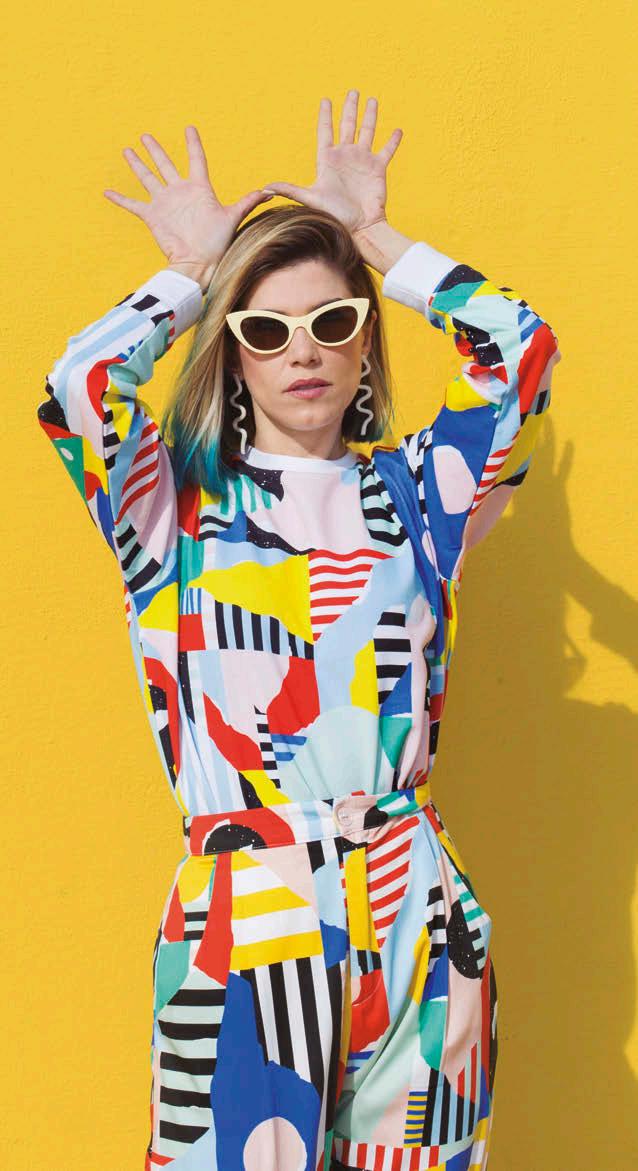
ted. I have always liked working with paint because it has a transformative power. I paint objects that I find or rescue and give them another chance. We tend to throw away a lot of materials and we cannot afford that luxury. A task that I love is working with scraps, pieces or scraps of wood. Wood is a noble, finite material that needs time to grow. It hurts me to see chairs, planks, furniture in the trash, so I try to collect them and transform them into collages. It is a way like so many others of reusing the material, since unlike the canvas where I establish what I want and how I want it, with this other process: it is not what I want, but what I have, what is offered to me. For that reason I don't know what the work will be like in the end, it has a surprise effect for me, I don't decide part of the work, it is built with my decisions but I can't totally control it. That also makes me somehow struggle with the premises of perfection, no error, no experimenting, and control... which can be suffocating.
You have exhibited, above all, in group exhibitions. For an artist, is it difficult to exhibit his work individually? Actually the proposals I have received have been collective, and on the other hand, I have not proposed doing an individual exhibition. It is a more personal matter, I think due to lack of confidence
18 ENTREVISTA I INTERVIEW
‘
and time, since I have always combined my artistic side with that of design or photography, for that reason I have not been able to concentrate on creating an exhibition that focuses on a theme and a set of works that express it. The good news is that this year I want to achieve it, and if everything goes well at the end of the year I will have my second individual exhibition in Barcelona.
Do you think art is not valued enough? That is, at the school level, for example... Or at the social level, certain artistic manifestations such as street art...
Drawing is the first communicative tool that we use as children, before language. As you grow up, you tend to value technique, leaving freedom and experimentation aside. That's why you always hear people say “I don't know how to draw”, I think it would be more correct to say: I don't like it or I do like it. Academically and socially they teach you that if you do not reproduce the proportions or the light well, realism in particular, you are no longer useful. For me that is a mistake that personally conditioned me, there are many ways to express yourself artistically.
Art is not the profession that has the best reputation, we all know the lives of misery of many artists, even knowing the successful careers of some of the most famous. Which surely happens in other professions, but art, as you point out, does not have the same value.
Perhaps it is something related to the value given to culture, when we know that we all need to feel, see, interpret and enjoy art. Speaking of street art, which can be annoying if it is not exercised with permission, I think that if muralism were encouraged in cities we could have an open-air museum, for everyone, it could fill the gray streets with life and reflection.
Among your clients and collaborations, do you remember any in particular?
The collaboration that I especially remember is the one I did with the Australian brand, Gorman Clothing. Each season he collaborates with an artist, and from his work he creates a limited collection. See how my paintings went from being on the wall, resting, transformed into prints and came to life with fashion, it was incredible. An experience that I fell in love with and I have continued collaborating with other clothing brands, it is an exciting feeling to dress in your own art. I was able to visit Melbourne and meet the entire team that made it possible, see the stores with my name on the windows, I felt very respected and valued. This collaboration opened the doors for many others.
How do you approach collaborations?
When I work for collaborations, regardless of the product to be treated, everything starts from my previous work. Before starting, I tell my clients to review my work, because I express myself in different ways, and send me those works that excite them the most. And then I start working with that base, then I send them the proposals and thus we get closer to a common result. Part of my job is to create to show what I can do.
All my projects are closely related to my imagination, so for me it is not very different to apply it in any format.
In packaging, the limited edition of Torres Brandy Jaime I stands out, with a case based on the paint of the barrel where the brandy ages. Can you tell us about this collaboration?
The collaboration for Torres Brandy has been a very interesting commission due to the intention and the format. That a prestigious brand highlights active artists is a very gratifying action for both parties. Since I love to paint, as soon as they explained to me that the challenge was to paint a barrel I was immediately excited, and knowing that I would be part of a special collection of many other artists, I did not hesitate to join the project.
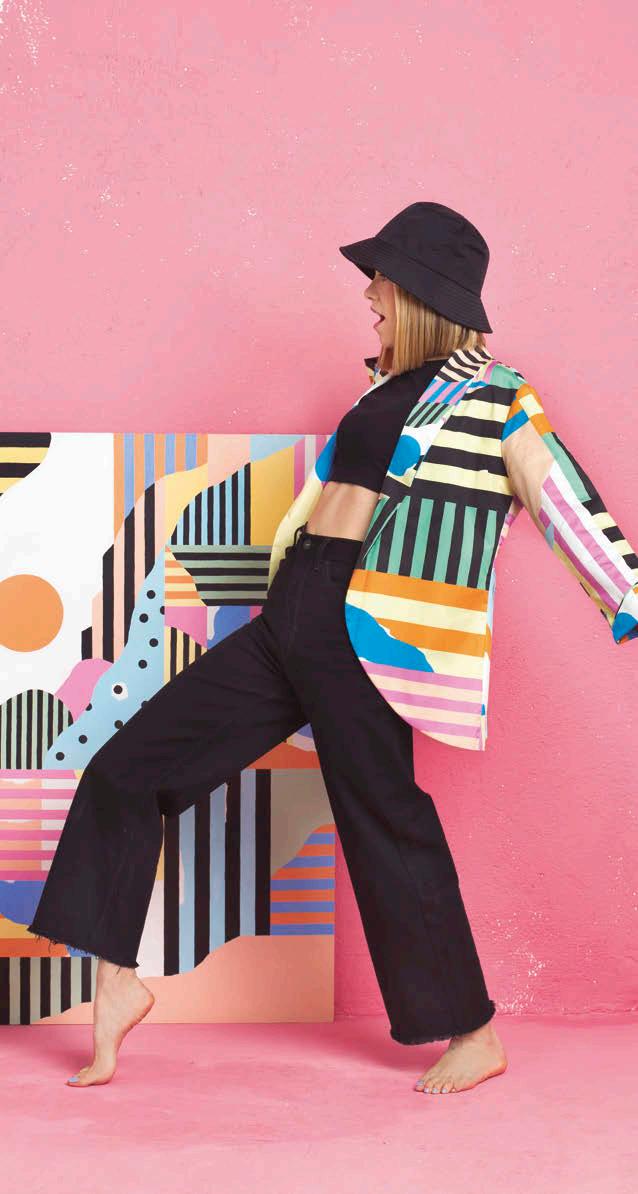
To get inspired, I took a guided tour of their facilities and they explained to me in detail the entire process of making Jaume I brandy, a job that requires patience and time.
The first thing I saw were the vineyard fields, the earth and its texture, the grapes and their shapes, an ant that crossed my path... I usually pay attention to those types of details. Like the texture of the wood in the barrel, the brandy and its color, the reflections in such a special bottle, with curves and twists. But there was something that united us especially, time. To make that Torres brandy, you need time, perseverance and a place to pamper it, for that reason in my interpretation the hourglass appears, the ladder as a symbol of effort and a lock, a closed place for it to be made. All these elements, along with the textures and the vineyard fields, are intertwined in my work for Torres.
Have you done any other packaging work? Would you like it?
I have recently collaborated with the American brand Jaime Makeup, for the packaging of some eye contour patches. The proposal was very interesting because it designed the case and the box that accompanies it. Furthermore, they had already collaborated with an illustrator for other products and they greatly respected my style. For my part, I worked with their corporate color range. A language that I understand, that of brands and branding, since my training as a graphic artist allows me to organically apply my art in a way that fits with the brand.
I love establishing this type of collaborations, it enriches me that my art adapts to different formats, be it packaging or textiles or another proposal. In the end a painting hangs on a wall, collaborations allow you to reach more audiences and make me get out of the monotony.
What are your next projects?
I have a project that I'm crossing my fingers to see happen, because it would make me happy, but I can't talk about it yet. We have just started the year and there are already proposals, but at the moment they are collaborations that are not closed. As I mentioned, in the meantime, I will concentrate on my individual exhibition and develop a body of important work to talk about the fortuitous fact of the encounter, not between people, but between people and things, how objects influence your environment.
19 ENTREVISTA I INTERVIEW
INFLORESCENCE. Cabello x Mure recibió de Manter el encargo de imaginar un diseño para la promoción de sus nuevos papeles para etiquetas. Para ello crearon el concepto Inflorescence Extra Virgin. La inflorescencia, en la botánica, es la disposición de las flores sobre las ramas o la extremidad del tallo. A través de este concepto, hicieron un paralelismo entre la forma de crecimiento que puede tener una planta con la evolución o madurez interior que cada persona o equipo va adquiriendo. El papel adhesivo sobre el que realizaron la composición está realizado con material reciclado. El diseño se ha creado con una sola tinta en color fluorescente y hot stamping duocolor. En la oscuridad, recuerda el efecto de bioluminiscencia que se produce en la naturaleza o las luces de una gran ciudad.
INFLORESCENCE. Cabello x Mure was commissioned by Manter to imagine a design for the promotion of its new label papers. For this they created the Inflorescence Extra Virgin concept. The inflorescence, in botany, is the arrangement of the flowers on the branches or the end of the stem. Through this concept, they made a parallel between the form of growth that a plant can have with the evolution or inner maturity that each person or team acquires. The adhesive paper on which they made the composition is made with recycled material. The design has been created with a single fluorescent color ink and duocolor hot stamping. In the dark, it is reminiscent of the bioluminescence effect that occurs in nature or the lights of a big city.
CABELLO X MURE


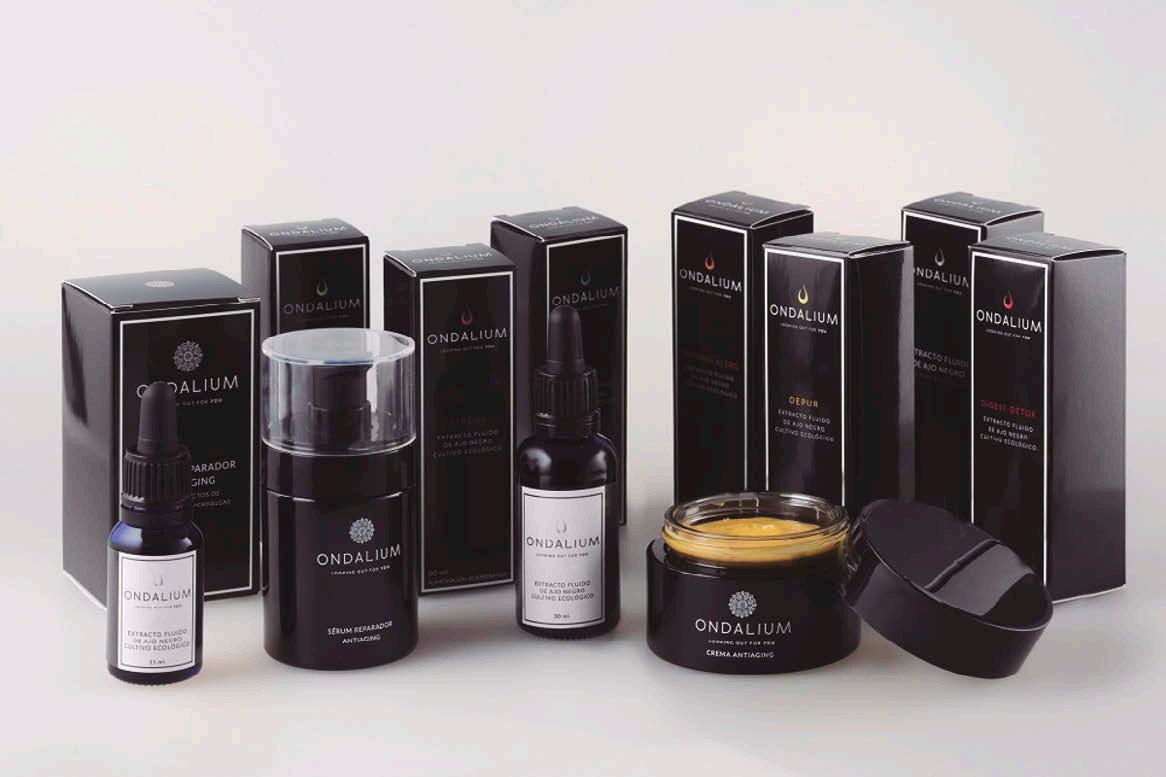
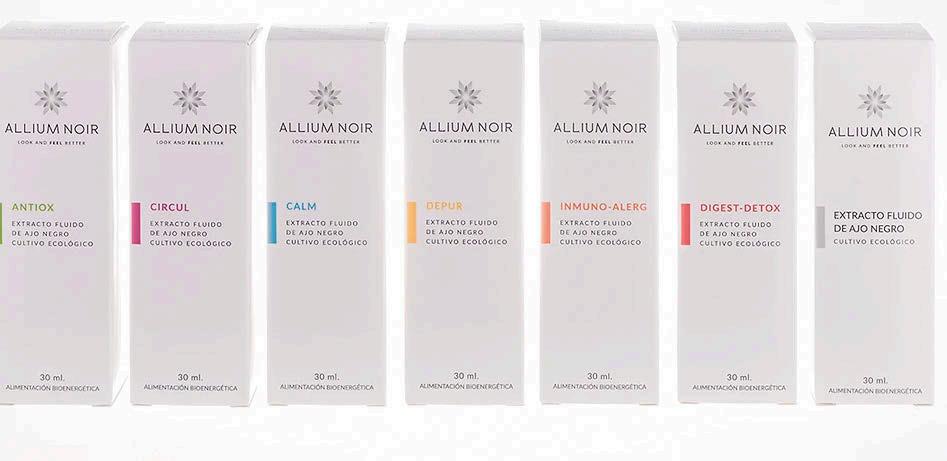

ONDALIUM. Rául Sauz, director creativo y director de arte, ha desarrollado la gama completa de productos de las dos marcas de la compañía Ondalium: Ondalium y Allium Noir, la primera distribuida a través del canal farmacia y la segunda para el resto de canales, principalmente grandes superficies. El packaging de ambas líneas tiene una variante en el logotipo para los productos de cosmética vegana: crema de día antiaging y sérum de noche.
Ondalium investiga y desarrolla remedios naturales para mejorar la salud y el bienestar de las personas, con foco en la depuración del organismo. Cuentan con un laboratorio en Toledo y de su investigación surgió el Extracto Fluido Concentrado de Ajo Negro Ecológico.
ONDALIUM. Rául Sauz, creative director and art director, has developed the complete range of products of the two brands of the company Ondalium: Ondalium and Allium Noir, the first distributed through the pharmacy channel and the second for the rest of the channels, mainly large surfaces. The packaging of both lines has a variant in the logo for the vegan cosmetic products: antiaging day cream and night serum.
Ondalium researches and develops natural remedies to improve the health and well-being of people, with a focus on purifying the body. They have a laboratory in Toledo and from their research the Organic Black Garlic Concentrated Fluid Extract emerged.
20 CREATIVIDAD I CREATIVITY
>HOMENAJE A LA EVOLUCIÓN Y LA EXCELENCIA TRIBUTE TO EVOLUTION AND EXCELLENCE >DOS GAMAS DE COSMÉTICA TWO RANGES OF COSMETICS INFLORESCENCE - Packaging www.cabelloxmure.com/ ONDALIUM - Packaging Ondalium & Allium Noir www.raulsauz.com RÁUL SAUZ
SANTA RITA. Narrow House ha diseñado el packaging para diferentes gamas de harinas Santa Rita. Para las harinas instantáneas, “milagrosas”, preparadas para realizar una bechamel rápida, como metáfora, las alas blancas simbolizan el concepto de “milagro” además de expresar la rapidez con que el producto se elabora. Para las harinas especiales para cocinar, el diseño recoge todos los elementos que nos remiten al mundo de la cocina tradicional: mantel, cuchara, batidora… Para las harinas utilizadas en platos orientales, el diseño nos traslada a un mundo de reminiscencias exóticas.
SANTA RITA. Narrow House has designed the packaging for different ranges of Santa Rita flours. For instant, “miracle” flours, prepared to make a quick bechamel, as a metaphor, the white wings symbolize the concept of “miracle” in addition to expressing the speed with which the product is made. For the special flours for cooking, the design brings together all the elements that take us to the world of traditional cooking: tablecloth, spoon, mixer... For the flours used in oriental dishes, the design takes us to a world of exotic reminiscences.
NARROW HOUSE

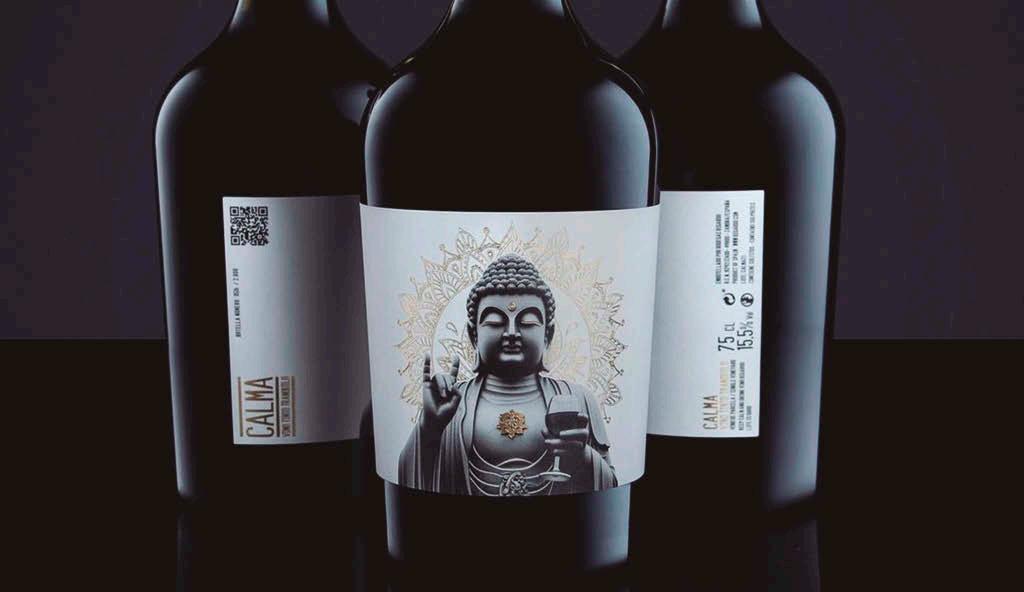




CALMA. Diseño de packaging para el nuevo vino de Bodegas Bigardo, Calma. El nombre se debe a que en la reunión con el cliente les dijo que era un vino "tranquilo". Para la etiqueta crearon una imagen de un buda, símbolo de paz y tranquilidad, haciendo el gesto de los cuernos (logotipo e imagen de la bodega) y por detrás un mandala en oro para potenciar la idea de tranquilidad. En el collarín, hay una cinta de color stamping oro para unificar con todos los vinos de la bodega.
CALMA. Packaging design for Bodegas Bigardo's new wine, Calma. In the meeting with the client he told us that it was a "calm" wine, hence its name. For the label we created an image of a Buddha, a symbol of peace and tranquility, making the gesture of the horns (logo and image of the winery) and behind it a gold mandala to enhance the idea of tranquility. On the collar there is a gold stamping ribbon to match all the wines in the winery.
>TODO TIPO DE HARINAS ALL TYPES OF FLOUR >UN VINO TRANQUILO A CALM WINE SANTA RITA - Packaging http://narrow-house.com BODEGAS BIGARDO - Packaging Calma www.javiergarduno.com
GARDUÑO 21 CREATIVIDAD I CREATIVITY
JAVIER
Etiquetas, un sector estable Labels, a stable sector
El sector de las etiquetas en España y Portugal emplea a más de 6.000 personas y cuenta con más de 170 empresas. Los pronósticos son de estabilidad, con constantes volúmenes de trabajo, destacando un mayor optimismo en términos de facturación para las empresas. The label sector in Spain and Portugal employs more than 6,000 people and has more than 170 companies. The forecasts are for stability, with constant volumes of work, highlighting greater optimism in terms of turnover for companies.
El sector crece en facturación, pero reduce sus márgenes y los metros cuadrados procesados. En España, experimentó un crecimiento del 6,7 % en 2022 en facturación, llegando hasta los 775 millones de euros. El crecimiento de los metros cuadrados transformados de papeles térmicos y film fue de 556 millones, para las 136 principales empresas fabricantes de etiquetas. Los resultados en Portugal marcan una tendencia similar, con 153 millones de facturación y 66 millones de metros cuadrados procesados por 40 empresas.
Sostenibilidad y tecnologías digitales
La búsqueda de una mayor sostenibilidad marca la innovación en etiquetado y packaging flexible, con materiales más sostenibles, como son el film 100 % biodegradable y el papel reciclado y FSC® y la reducción del espesor, tanto en plástico como en papel. También predominan las etiquetas monomateriales y los sleeves con precortes para facilitar y mejorar el reciclaje. En cuanto al diseño, hay muchas tendencias, destacando las etiquetas transparentes; el minimalismo, centradas en líneas limpias, combinaciones de colores simples y formas geométricas, fáciles de leer; las ilustraciones de colores vivos; las etiquetas que solo muestran texto sobre un fondo neutro, muchas con tipografía en negrita, para destacarse en medio de la simplicidad; etiquetas personalizadas, que cuenten una historia (story teller); el estilo vintage y las monocolor, sin olvidarnos de las etiquetas inteligentes, que permiten conectar el smartphone con la web de la marca, recetas, consejos, curiosidades... Las etiquetas inteligentes que incorporan tecnología RFID y NFC permiten el seguimiento, la autenticación y la interacción con los consumidores en tiempo real. Por su parte, las tecnologías de impresión digital, como la inyección de tinta y el láser, ofrecen mayor flexibilidad y personalización, lo que permite crear etiquetas dinámicas y de alta calidad, con plazos de entrega más cortos. Las tecnologías digitales facilitan una mayor sinergia entre los sistemas de etiquetado y otras tecnologías como la gestión de inventario, la automatización de almacenes y las plataformas de comercio electrónico. Este enfoque integrado
garantiza un flujo de información fluido en toda la cadena de suministro.
The sector grows in turnover, but reduces its margins and the square meters processed. In Spain, it experienced a growth of 6.7% in 2022 in turnover reaching 775 million euros. The growth in square meters transformed from thermal papers and film was 556 million, for the 136 main label manufacturing companies. The results in Portugal mark a similar trend, with 153 million in turnover and 66 million square meters processed by 40 companies.
Sustainability and digital technologies
The search for greater sustainability marks innovation in labeling and flexible packaging, with more sustainable materials, such as 100% biodegradable film and recycled paper and FSC® and the reduction of thickness in both plastic and paper. Monomaterial labels and sleeves with precuts also predominate to facilitate and improve recycling.
In terms of design, there are many trends, highlighting transparent labels; minimalism, inspired by clean lines, simple color combinations and geometric shapes, easy to read; the brightly colored illustrations; labels that only show text on a neutral background, many with bold typography, to stand out amidst the simplicity; personalized labels that tell a story (story teller); the vintage style and the monochrome ones, without forgetting the smart labels, which allow you to connect the smartphone with the brand's website, recipes, tips, curiosities...
Smart tags incorporating RFID and NFC technology enable real-time tracking, authentication and interaction with consumers. For their part, digital printing technologies, such as inkjet and laser, offer greater flexibility and customization, allowing the creation of dynamic, high-quality labels, with shorter delivery times.
Digital technologies facilitate greater synergy between labeling systems and other technologies such as inventory management, warehouse automation and e-commerce platforms. This integrated approach ensures a smooth flow of information throughout the supply chain.
22 NOTICIAS I NEWS
Sector alimentario: 10 principios para una etiqueta nutricional en la parte frontal del envase
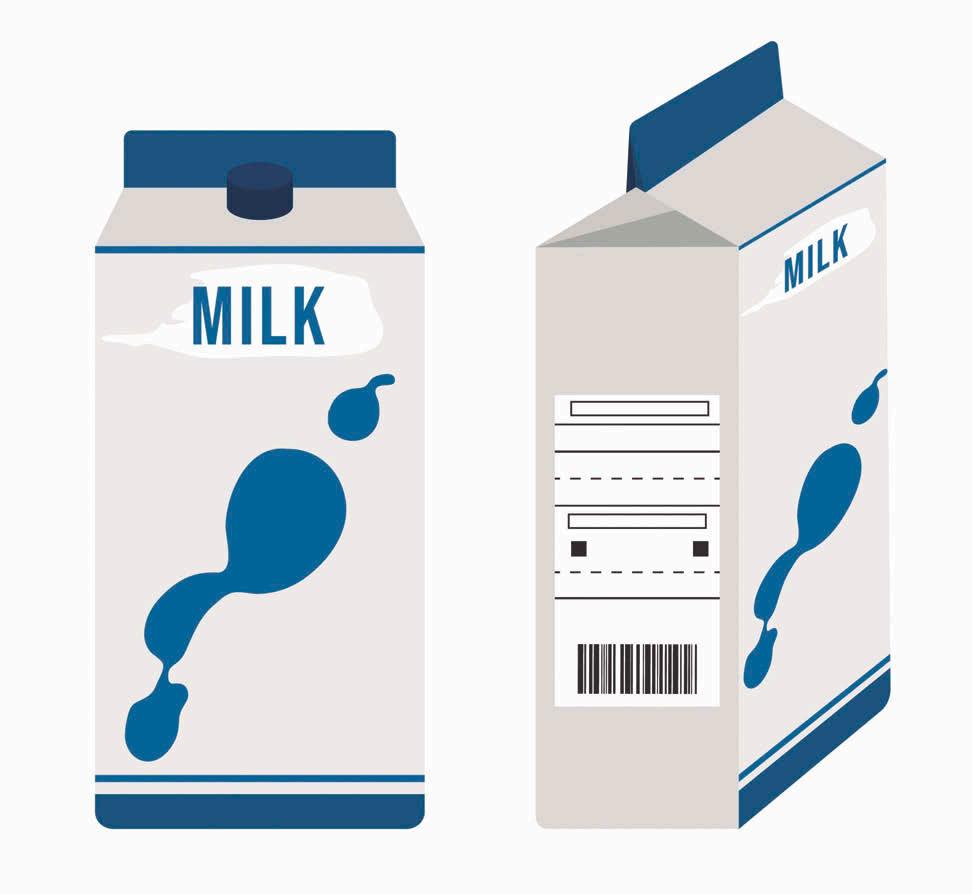
Científicos italianos y españoles han elaborado una lista de 10 principios, o decálogo, que idealmente debería poseer una etiqueta nutricional en la parte frontal del envase para crear una base común y ayudar a los consumidores a tomar decisiones informadas hacia dietas más saludables. El acuerdo entre investigadores de ambos países se firmó durante la reunión «Principios para la definición de etiquetas nutricionales en la parte frontal del envase (FOPNL) - Taller de investigadores italianos y españoles», celebrada en la Universidad de la Sapienza de Roma y organizada por la Unidad de Investigación en Ciencias de la Alimentación del Departamento de Medicina Experimental de la Universidad de la Sapienza y el Comité Nacional de Bioseguridad, Biotecnología y Ciencias de la Vida (CNBBSV) de la Presidencia del Gobierno.
Las limitaciones de las etiquetas en la parte frontal del envase son:
1. La arbitrariedad del algoritmo: los sistemas ‘prescriptivos’ (y en particular el Nutriscore) suelen evaluar el valor nutricional de los alimentos mediante algoritmos arbitrarios o mal definidos.
2. Norma de referencia no real: los sistemas ‘prescriptivos’ se basan en una cantidad estándar de alimento (100g o 100ml) que casi nunca se corresponde con las raciones que se consumen habitualmente.
3. Limitaciones del algoritmo: el resultado final (color o letra) es la combinación (desconocida) de varios datos.
4. Pérdida de información, especialmente para los grupos más vulnerables.
5. Se considera la limitación de los parámetros, con prevalencia de los considerados negativos.
6. Bajo potencial educativo: las indicaciones
llevan a evitar el consumo de un determinado alimento en lugar de a adquirir un comportamiento alimentario ‘correcto’.
7. Disminución de la eficacia de los mensajes ‘negativos’ con el paso del tiempo.
8. Efecto halo con sobreestimación del efecto positivo de los alimentos etiquetados como ‘verdes’.
9. Un enfoque simplista que basa el razonamiento en los alimentos que hay que comer o evitar y es incapaz de promover patrones dietéticos de eficacia probada para prevenir enfermedades crónicas degenerativas.
10. Falta de pruebas científicas sobre la eficacia real: las pruebas actuales muestran un efecto sobre el consumo de ciertos alimentos, pero no sobre su impacto en la salud de los consumidores.
Food sector: 10 principles for a nutritional label on the front of the package Italian and Spanish scientists have drawn up a list of 10 principles, or decalogue, which should ideally have a nutritional label on the front of the packaging to create a common basis and help consumers make informed decisions towards healthier diets. The agreement between researchers from both countries
was signed during the meeting "Principles for the definition of nutritional labels on the front of the package (FOPNL) - Workshop of Italian and Spanish researchers", held at the Sapienza University of Rome and organized by the Food Sciences Research Unit of the Department of Experimental Medicine of the Sapienza University and the National Committee for Biosafety, Biotechnology and Life Sciences (CNBBSV) of the Presidency of the Government.
The limitations of front-of-package labels are:
1. The arbitrariness of the algorithm: "prescriptive" systems (and in particular Nutriscore) usually evaluate the nutritional value of foods using arbitrary or poorly defined algorithms.
2. Non-real reference standard: "prescriptive" systems are based on a standard quantity of food (100g or 100ml) that almost never corresponds to the rations that are usually consumed.
3. Limitations of the algorithm: the final result (color or letter) is the (unknown) combination of several data.
4. Loss of information, especially for the most vulnerable groups.
5. The limitation of the parameters is considered, with a prevalence of those considered negative.
6. Low educational potential: the instructions lead to avoiding the consumption of a certain food instead of acquiring "correct" eating behavior.
7. Decreased effectiveness of "negative" messages over time.
8. Halo effect with overestimation of the positive effect of foods labeled "green".
9. A simplistic approach that bases reasoning on foods to eat or avoid and is unable to promote dietary patterns of proven effectiveness in preventing chronic degenerative diseases.
10. Lack of scientific evidence on actual effectiveness: Current evidence shows an effect on the consumption of certain foods, but not on their impact on the health of consumers.
23 NOTICIAS I NEWS

A lo largo de este artículo, se desarrollan aspectos claves del sector de las etiquetas, desde los tipos más utilizados hasta las tendencias emergentes y los desafíos tecnológicos a los que se enfrenta la industria. Las etiquetas están presentes en muchos sectores y existen etiquetas determinadas según cada división. En la industria alimentaria, en especial, alimentos frescos y envasados, predominan las etiquetas de imagen de productos en papel y las etiquetas de información y trazabilidad en materiales térmicos directos. Siempre con adhesivos compostables o con declaración de conformidad para envasado alimentario. En productos como vinos y bebidas alcohólicas, las etiquetas desempeñan principalmente una función decorativa, mientras que, en el sector logístico alimentario, se prefieren etiquetas no adhesivas de papeles térmicos o adhesivas térmicas. Pero, siempre teniendo en cuenta la sostenibilidad, elemento crucial dentro del sector.
En relación con las tendencias futuras a las cuales se enfrenta el sector, cabe destacar la importancia de la funcionalidad y la sosteni-

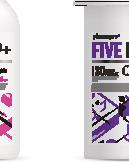

Perspectivas y desafíos en el mundo de las etiquetas:
AIFEC Perspectives and challenges in the world of labels: AIFEC por José Carrasquer, presidente de la asociación AIFEC
by José Carrasquer,
president of the AIFEC association
bilidad, mencionada anteriormente. La integración de tecnologías como Realidad Aumentada, RFID, NFC, materiales y tintas inteligentes, así como tecnologías de trazabilidad, se encuentran en el horizonte para ofrecer etiquetas más versátiles y respetuosas con el medio ambiente.
El mercado español de etiquetas ha experimentado un ligero crecimiento en facturación en 2023, pero con un descenso en el volumen de material procesado. Los costes elevados de materias primas y energía han impactado en los precios del material de packaging, y como consecuencia, las etiquetas.
La demanda de innovación varía según el sector y sus necesidades específicas. Sin embargo, la apuesta por la innovación está presente en el sector. Es un factor importante para el desarrollo de etiquetas funcionales que añadan valor al producto, ya sea mediante nuevos materiales, formas o acabados. Existen varios factores a considerar a la hora de elegir un sistema de etiquetado: el producto, el formato del envase, el mercado objetivo y los volúmenes previstos. La asesoría del proveedor de etiquetas es crucial para decisiones informadas, proporcionando perspectivas sobre tendencias de mercado y alternativas.
En términos de tecnologías de producción de etiquetas, la tecnología más utilizada es la impresión flexográfica, seguida de tecnologías digitales como tóner húmedo, tóner seco, e ink-jet, junto con offset, serigrafía y tipografía.
En resumen , el sector de las etiquetas continúa evolucionando, adaptándose a las demandas cambiantes y explorando nuevas fronteras tecnológicas. La funcionalidad y
sostenibilidad se han convertido en pilares fundamentales para el futuro de la industria, impulsando la integración de tecnologías avanzadas y prácticas respetuosas con el medio ambiente. La innovación seguirá siendo clave para agregar valor a través de etiquetas que no solo informen y decoren, sino que también ofrezcan soluciones prácticas y ecológicas.
Throughout this article, key aspects of the label sector are developed, from the most used types to emerging trends and technological challenges facing the industry. Labels are present in many sectors, and there are specific labels according to each division. In the food industry, especially fresh and packaged foods, product image labels on paper and information and traceability labels on direct thermal materials predominate. Always with compostable adhesives or with a declaration of conformity for food packaging. In products such as wines and alcoholic beverages, labels mainly play a decorative role, while in the food logistics sector, nonadhesive labels made of thermal papers or thermal adhesives are preferred. But, always taking into account sustainability, a crucial element within the sector.
In relation to the future trends facing the sector, it is worth highlighting the importance of functionality and sustainability, mentioned above. The integration of technologies such as Augmented Reality, RFID, NFC, smart materials and inks, as well as traceability technologies, are on the horizon to offer more versatile and environmentally friendly labels. The Spanish label market has experienced slight growth in turnover in 2023, but with a
24 NOTICIAS I NEWS
decrease in the volume of material processed. The high costs of raw materials and energy have impacted the prices of packaging material, and as a consequence, labels.
The demand for innovation varies depending on the sector and its specific needs. However, the commitment to innovation is present in the sector. It is an important factor for the development of functional labels that add value to the product, whether through new materials, shapes or finishes.
There are several factors to consider when choosing a labeling system: the product, the packaging format, the target market and the expected volumes. Label supplier advice is crucial for informed decisions, providing perspectives on market trends and alternatives.
In terms of label production technologies, the most used technology is flexographic printing, followed by digital technologies such as wet toner, dry toner, and ink-jet, along with offset, screen printing, and letterpress.
In short, the label industry continues to evolve, adapting to changing demands and exploring new technological frontiers. Functionality and sustainability have become fundamental pillars for the future of the industry, promoting the integration of advanced technologies and environmentally friendly practices. Innovation will continue to be key to adding value through labels that not only inform and decorate, but also offer practical and ecological solutions.

GET YOUR TICKET NOW!
El comercio electrónico o e-commerce no deja de crecer. A nivel mundial, se prevé que sus ventas alcanzarán el 24 % en 2026 y la tendencia en España es similar. Actualmente, hay más de 135.000 e-commerce activos en España y la facturación de las tiendas online creció en 2022 un 25,3 % interanual hasta los 15.627 millones de euros. Electronic commerce or ecommerce does not stop growing. Globally, its sales are expected to reach 24% in 2026 and the trend in Spain is similar. Currently, there are more than 135,000 active e-commerce in Spain and the turnover of online stores grew by 25.3% yearon-year in 2022 to 15,627 million euros.
El e-commerce crece a nivel global E-commerce is growing globally
En 2022, el 19,9 % del total de las compras realizadas en España fueron en comercios online (en 2008, eran del 9,6 %), según datos de un estudio elaborado por Qonto (facilitado por E-Show).
En cuanto al perfil del consumidor español por edad, los usuarios entre 35 y 44 años fueron los que realizaron más compras (5,5 millones de compras), seguidos por la franja entre 45 y 55 años (5,4 millones de compras).
Por sectores, las tres industrias que más facturaron en España en 2022 fueron: moda (4700 millones de euros), servicios auxiliares e intermediación financiera (3500 millones de euros), agencias de viajes y operadores turísticos (2700 millones).
Los productos de moda también fueron los preferidos de los usuarios, pero en segundo y tercer lugar compraron artículos de ocio y calzado. Las cinco marcas de e-commerce que más vendieron en 2022 fueron: Amazon, El Corte Inglés, PC Componentes, Mediamarkt y Shein.
Tendencias en compras
Es un hecho que las compras con dispositivos móviles no paran de crecer, sobre todo entre los jóvenes: el 78 % de las personas que compran con dispositivos móviles tienen entre 18 y 34 años. En Europa y España, el pago mediante wallet o medios digitales es el preferido (27 %). Además, integrar las redes sociales con el ecommerce generará ventas (según Capterra, el 66 % de los usuarios españoles ha comprado por redes sociales o está interesado en hacerlo.
La seguridad es la principal preocupación de los usuarios, especialmente un medio de pago seguro, pero también valoran la sostenibilidad, por lo que los envases sostenibles son primordiales.
También es importante la UX (User Experience), proporcionar experiencias personalizadas y poner al usuario en el centro.
Asimismo, los negocios con tienda online pueden ofrecer un mejor servicio en menos tiempo gracias a las actuales tecnologías digitales, como la inteligencia artificial (IA) y la realidad virtual (RA).
También cabe señalar, respecto al usuario, que se observa, en relación con la sostenibilidad, un auge del recommerce (un neologismo nacido de
los conceptos resale y commerce), basado en la venta de productos de segunda mano. No se trata solo de aplicaciones como Vinted; H&M y Zara ya tienen programas para dar nueva vida a prendas usadas, un negocio que se prevé moverá más de 30.000 millones de euros en 2024. Otro concepto unido a la sostenibilidad es el upcycling, aprovechar materiales reciclables para crear nuevos objetos y así dar una segunda vida a productos destinados a la basura.
La onmicanalidad, una estrategia comercial integrada para acceder al comprador a través de distintos soportes complementarios, también se impone, de modo que se da continuidad a la marca, se pueden sincronizar productos y promociones y se consigue más cercanía al cliente. Por último, otra tendencia en auge son las compras a través de las redes sociales, al igual que el social proof, el antiguo «boca-oreja», una de las fuentes principales para generar confianza y lograr más ventas, donde son clave las reseñas y testimonios positivos de usuarios.
Distribución y logística
El 4º Congreso AECOC de Smart Distribution, celebrado el año pasado, trató el impacto de las nuevas normativas sobre el desarrollo del ecommerce. La directora del proyecto de proximity de Ontime, Nadie Uceda, recordó que «los ciudadanos reclaman entornos más saludables, con menos contaminación, pero hacen crecer la demanda de e-commerce». Para equilibrar estos dos ejes, Uceda considera que las empresas «deben buscar soluciones para reducir el impacto de nuestra actividad manteniendo la competitividad en precio y rentabilidad».
En relación a las perspectivas de crecimiento del e-commerce, la directora de public policy de Amazon, Eva Pérez, recordó que «España aún está cuatro puntos por debajo de la penetración mundial del e-commerce, por lo que hay un gran recorrido, que debe ser complementario a la evolución de las tiendas físicas».
Por su parte, el director de estrategia de Ikea en España, Diego Aparicio, destacó «la importancia que está adquiriendo la última milla en la cadena
26 NOTICIAS I NEWS
de suministro, a nivel social y de regulación. Estamos en plena transformación, tanto en la parte sostenible como en la digitalización de los procesos». Las ventas online de la compañía en España actualmente son del 22 %.
Finalmente, el director de operaciones de Ahorramas, Daniel Dieste, destacó la transformación de muchas tiendas «en hubs logísticos, que operan desde el centro de las ciudades y que nos permiten ser muy eficientes».
El packaging
El e-commerce implica la necesidad de un envase apropiado para prevenir daños del producto transportado y adaptados a los canales de distribución. De ahí que se busque la integración de los envases primarios y secundarios, facilitando la automatización, mejorando la rapidez y la productividad.
El tamaño del packaging tiene que estar adaptado al producto para minimizar los elementos de amortiguación, como son las almohadillas de aire, un producto del que se ya se ofrecen versiones en materiales bio-basados, reciclables y/o procedentes de material reciclado.
En cuanto al diseño, el packaging de productos de e-commerce destaca por los colores neutros y naturales, con pocos detalles y elementos superfluos, bastante minimalistas, pero que identifiquen claramente la marca.
Respecto a los materiales, el preferido es el cartón, gracias a su versatilidad y su sosteniblidad, porque puede reciclarse y reutilizarse.
In 2022, 19.9% of total purchases made in Spain were in online stores (in 2008, they were 9.6%), according to data from a study prepared by Qonto (provided by E-Show).
Regarding the profile of the Spanish consumer by age, users between 35 and 44 years old were the ones who made the most purchases (5.5 million purchases), followed by the group between 45 and 55 years old (5.4 million purchases).
By sectors, the three industries that generated the most turnover in Spain in 2022 were: fashion (4.7 billion euros), auxiliary services and financial intermediation (3.5 billion euros), travel agencies and tour operators (2.7 billion). Fashion products were also preferred by users, but in second and third place they bought leisure items and footwear.
The five e-commerce brands that sold the most in 2022 were: Amazon, El Corte Inglés, PC Componentes, Mediamarkt and Shein.
Shopping trends
It is a fact that purchases with mobile devices do not stop growing, especially among young people: 78% of people who buy with mobile devices are between 18 and 34 years old. In Europe and Spain, payment via wallet or digital means is preferred (27%). Furthermore, integrating social networks with e-commerce will generate sales (according to Capterra, 66% of Spanish users have purchased through social networks or are interested in doing so.
Security is the main concern of users, especially a secure means of payment, but they also value sustainability, so sustainable packaging is paramount.
UX (User Experience) is also important, providing personalized experiences and putting the user at the center.
Likewise, businesses with an online store can offer a better service in less time thanks to current digital technologies, such as artificial intelligence (AI) and virtual reality (AR).
It is also worth noting, with respect to the user, that, in relation to sustainability, there is a boom in recommerce (a neologism born from the concepts resale and commerce), based on the sale of second-hand products. It's not just about apps like Vinted; H&M and Zara already have programs to give new life to used clothing, a business that is expected to move more than 30 billion euros in 2024.
Another concept linked to sustainability is upcycling, taking advantage of recyclable materials to create new objects and thus give a second life to products destined for the trash.
Omnichannel, an integrated commercial strategy to access the buyer through different complementary media, is also imposed, so that the brand is given continuity, products and promotions can be synchronized and greater proximity to the customer is achieved.
Finally, another growing trend is purchases through social networks, as well as social proof, the old "word of mouth", one of the main sources to generate trust and achieve more sales, where reviews are key and positive user testimonials.
Distribution and logistics
The 4th AECOC Smart Distribution Congress, held last year, discussed the impact of new regulations on the development of e-commerce. The director of Ontime's proximity project, Nadie Uceda, recalled that "citizens demand healthier environments, with less pollution, but they increase the demand for e-commerce." To balance these two axes, Uceda believes that companies "must look for solutions to reduce the impact of our activity while maintaining competitiveness in price and profitability."
In relation to the growth prospects of e-commerce, Amazon's public policy director, Eva Pérez, recalled that "Spain is still four points below the global penetration of e-commerce, so there is a long way to go, "which must be complementary to the evolution of physical stores."
For his part, Ikea's strategy director in Spain, Diego Aparicio, highlighted "the importance that the last mile is acquiring in the supply chain, at a social and regulatory level. We are in full transformation, both in the sustainable part and in the digitalization of processes."
The company's online sales in Spain are currently 22%.
Finally, the director of operations of Ahorramas, Daniel Dieste, highlighted the transformation of many stores "into logistics hubs, which operate from the city centers and which allow us to be very efficient."
The packaging
E-commerce implies the need for appropriate packaging to prevent damage to the transported product and adapted to the distribution channels. Hence, the integration of primary and secondary packaging is sought, facilitating automation, improving speed and productivity.
The size of the packaging must be adapted to the product to minimize cushioning elements, such as air cushions, a product of which versions are already offered in bio-based, recyclable and/or materials from recycled materials.
In terms of design, the packaging of e-commerce products stands out for its neutral and natural colors, with few details and superfluous elements, quite minimalist, but that clearly identify the brand.
Regarding materials, the preferred one is cardboard, thanks to its versatility and sustainability, because it can be recycled and reused.
27 NOTICIAS I NEWS
Características del embalaje para el sector e-commerce
Packaging characteristics for the e-commerce sector
por Alfonso Moncasi, secretario de Asocommerce* by Alfonso Moncasi, secretary of Asocommerce*

Internet se ha convertido en un canal en pleno crecimiento en España que además disfruta de una creciente popularidad entre los consumidores. Así, observamos cómo en los tres primeros meses de 2023, el comercio electrónico superó en nuestro país los 19.000 millones de euros, facturando un 22,7 % más que el año anterior.1
Según el estudio E-commerce IAB 2023, el 77 % de los internautas españoles utiliza internet como canal de compra. Además, la frecuencia de compra se encuentra en constante ascenso, alcanzando en la actualidad la cifra de 3,4 veces al mes.
A día de hoy, los españoles ya hacen el 40 % del total de sus compras en internet. Asimismo, es de destacar el auge de los Marketplaces como plataforma de compra, de modo que cuatro de cada cinco consumidores españoles creen que son la forma más cómoda para comprar online. Además, un notable 79 % de los consumidores encuestados por Mirakl esperan aumentar su gasto en ecommerce en los próximos 12 meses.2
Tendencias de e-commerce
El canal online se encuentra en constante evolución siendo habituales la aparición de nuevas funcionalidades y canales que sorprenden y motivan a los usuarios. Las ten-
dencias más relevantes en e-commerce para los próximos meses son:
-Retail Media, la publicidad se ha introducido en las tiendas o aplicaciones de los retailers mostrando anuncios relevantes en función del comportamiento de cada consumidor.
-Inteligencia Artificial, que ayuda al usuario a encontrar productos de forma intuitiva basándose en su comportamiento y preferencias.
-Venta en redes sociales, es una realidad en países como Estados Unidos y en España están muy avanzadas las pruebas de comercialización a través de canales de chat como Whtastapp.
-Live commerce, venta mientras se emiten shows en vivo a través de redes sociales u otras plataformas haciendo de la compraventa una actividad lúdica y divertida.
El embalaje en e-commerce
Las características del embalaje usado para envíos de comercio electrónico son sensiblemente diferentes a las de los embalajes tradicionales. La principal diferencia se basa en la logística, ya que las cajas de envío por los
canales tradicionales se transportan paletizadas ordenadamente unas sobre otras. Sin embargo, las de la venta online se introducen en el camión en cualquier posición al dar prioridad a la optimización del espacio disponible. Esta característica exige aplicar una mayor resistencia al embalaje en cada una de sus seis caras y, por lo tanto, encarecer el precio de compra en comparación con el de un envío paletizado.
Otro requerimiento del embalaje de venta online es su versatilidad para poder contener productos de variadas dimensiones y en diferentes cantidades en función del pedido realizado por cada cliente. Asimismo, es necesario que puedan montarse y cerrarse con facilidad para agilizar el proceso de envasado manual, por lo que suelen incorporar cintas de pegado. Por último, la caja de envío tiene que facilitar la apertura por parte del consumidor, lo que a menudo implica la inclusión de precortados que hacen más sencillo el rasgado.
Dadas las peculiaridades del canal online, los fabricantes se han lanzando a proponer soluciones ingeniosas como cajas telescópicas

Smurfit Kappa consiguió un WorldStar por TUPack, un estuche para la venta online de botellas de vino. Smurfit Kappa got a WorldStar for TUPack, a case for online sales of wine bottles.
28 NOTICIAS I NEWS
y adaptables a diferentes contenidos, fuelles laterales para una mayor rapidez de envasado o doble cinta de pegado para facilitar la devolución del producto, garantizando así la seguridad del contenido y la inviolabilidad de la caja.
The Internet has become a rapidly growing channel in Spain that also enjoys growing popularity among consumers. Thus, we observe how in the first three months of 2023, electronic commerce in our country exceeded 19,000 million euros, billing 22.7% more than the previous year.1
According to the E-commerce IAB 2023 study, 77% of Spanish Internet users use the Internet as a purchasing channel. Furthermore, the frequency of purchases is constantly increasing, currently reaching 3.4 times a month.
Today, Spaniards already make 40% of their total purchases on the internet. Likewise, it is worth highlighting the rise of Marketplaces as a purchasing platform, so that four out of every five Spanish consumers believe that they are the most convenient way to buy online. Additionally, a notable 79% of consumers surveyed by Mirakl expect to increase their ecommerce spending in the next 12 months.2
E-commerce trends
The online channel is constantly evolving, with the appearance of new features and channels that surprise and motivate users. The most relevant trends in e-commerce for the coming months are:
-Retail Media, advertising has been introduced in retailers' stores or applications, showing relevant ads based on the behavior of each consumer.
-Artificial Intelligence, which helps the user find products intuitively based on their behavior and preferences.
Debido a la logística, en las cajas de la venta online se prioriza la optimización del espacio disponible, lo que exige aplicar una mayor resistencia al embalaje en cada una de sus seis caras y, por lo tanto, encarecer el precio de compra en comparación con el de un envío paletizado
‘Due to logistics, in online sales boxes priority is given to optimizing the available space, which requires applying greater resistance to the packaging on each of its six sides and, therefore, making the purchase price more expensive compared to that of a palletized shipment
-Selling on social networks is a reality in countries like the United States and in Spain, marketing tests through chat channels like Whtastapp are very advanced.
-Live commerce, sales while live shows are broadcast through social networks or other platforms, making buying and selling a playful and fun activity.
Packaging in e-commerce
The characteristics of the packaging used for e-commerce shipments are significantly different from those of traditional packaging. The main difference is based on logistics, since shipping boxes through traditional channels are transported on pallets neatly on top of each other. However, those for online sales are inserted into the truck in any position by prioritizing the optimization of the available space. This characteristic requires applying greater resistance to the packaging on each of its six sides and, the-
refore, increasing the purchase price compared to that of a palletized shipment.
Another requirement for online sales packaging is its versatility to be able to contain products of various dimensions and in different quantities depending on the order placed by each customer. Likewise, it is necessary that they can be easily assembled and closed to speed up the manual packaging process, which is why they usually incorporate adhesive tapes. Finally, the shipping box has to make it easy for the consumer to open. which often involves the inclusion of pre-cuts that make tearing easier.
Given the peculiarities of the online channel, manufacturers have launched to propose ingenious solutions such as telescopic boxes adaptable to different contents, side gussets for faster packaging or double gluing tape to facilitate the return of the product, thus guaranteeing the safety of the product. contents and inviolability of the box.
*Asocommerce es una asociación sin ánimo de lucro que reúne a las empresas españolas de comercio electrónico de todos los sectores de actividad. Asocommerce is a non-profit association that brings together Spanish e-commerce companies from all sectors of activity.
1 https://www.cnmc.es/prensa/ecommerce-1T23-20231006
2 https://www.mirakl.com/es-es/noticias/nuevo-estudio-de-mirakl-los-espanoles-ya-hacen-el-40-por-ciento-del-total-de-sus-compras-en-internet
29 NOTICIAS I NEWS
Ecodiseño y prevención, de la intención a la acción por una economía circular real
Ecodesign and prevention, from intention to action for
a
real
circular economy
Ecovidrio es la entidad sin ánimo de lucro encargada de la gestión del reciclado de residuos de envases de vidrio en España. Además de garantizar el reciclado a través del contenedor, entre otras acciones, promueve la prevención y el ecodiseño de los envases. Ecovidrio is the non-profit entity in charge of managing the recycling of glass packaging waste in Spain. In addition to guaranteeing recycling through the container, among other actions, promotes prevention and eco-design of packaging.


Decía William McDonough -arquitecto estadounidense y pionero en la práctica de la economía circular en este arte- que «el diseño es la primera señal de la intención humana». Esta poderosa afirmación nos insta a comprender que el diseño trasciende la mera creatividad y representa una auténtica expresión de
nuestras intenciones sobre cómo queremos interactuar con el mundo que nos rodea.
Apostar por un diseño consciente nos capacita para elegir la huella que genera en nuestro entorno y, en definitiva, nos ayuda a ir por delante y prevenir su
impacto. Según los estudios de la Fundación Ellen MacArthur, la etapa de diseño del envase puede suponer hasta el 80 % del impacto ambiental que va a generar. Esta cifra subraya la razón por la que el ecodiseño se ha convertido en la piedra angular para reducir el impacto medioambiental y
51
30 TENDENCIAS I TRENDS
Laura García, directora técnica de operaciones Ecovidrio
Laura García, technical director of operations Ecovidrio
protagonista en la Ley de Residuos y Suelos Contaminados para una Economía Circular. La prevención, junto a la correcta gestión de los residuos al final de la vida útil del envase, resulta imprescindible para alcanzar una verdadera circularidad y cumplir con la normativa actual. Una ambiciosa regulación que establece que, en tan solo seis años, para 2030, todos los envases puestos en el mercado deben ser reciclables y, siempre que sea posible, reutilizables.
Afortunadamente, el histórico compromiso de la industria envasadora con sus obligaciones ambientales les sitúa en una posición aventajada para hacer frente a los nuevos requerimientos que el nuevo marco exige a la industria que envasa sus productos en vidrio en el ámbito de la prevención de generación de residuos o la exhaustividad de información a compartir con las autoridades competentes. Su firme compromiso con la circularidad y la sostenibilidad se refleja, desde hace años, en las inversiones realizadas y en sus ejes de negocio, donde la prevención y el ecodiseño llevan tiempo ocupando una posición destacada. Una responsabilidad con el impacto ambiental de sus envases que también queda patente en los resultados obtenidos en los últimos Planes
Empresariales de Prevención (PEPs) 2020-2022 de Ecovidrio, donde se ha registrado una participación de 366 empresas envasadoras, un 40 % más que en los planes del trienio anterior y cuya cifra esperamos superar en los nuevos Planes
Empresariales de Prevención 2023-2027.
‘
La prevención, junto a la correcta gestión de los residuos al final de la vida útil del envase, resulta imprescindible para alcanzar una verdadera circularidad Prevention, together with the correct management of waste at the end of the packaging's useful life, is essential to achieve true circularity
Reducir el peso de los envases de vidrio; eliminar elementos superfluos en ocasiones, como etiquetas de papel, collarines, cápsulas o separadores de cartón; optimizar los formatos de los envases para que incrementar la cantidad de producto; optar por alternativas más reciclables o utilizar materiales con alto contenido en reciclaje para los envases, son algunas de las medidas que se han llevado a cabo en los últimos años. Las más de 650 medidas de ecodiseño implantadas por las empresas que envasan en vidrio entre 2020 y 2022 permitieron evitar la generación de más de 8.000 toneladas de residuos. Pequeños cambios con gran impacto.
En Ecovidrio llevamos más de dos décadas acompañando a la industria envasadora en el cumplimiento de las obligaciones de gestión de sus residuos de envases de vidrio de la manera más económica, sostenible y eficiente. Una vocación de servicio de atención personalizada e integral que se ha reforzado con nuevos mecanismos y herramientas de apoyo.
Sabemos que el mejor residuo es aquel que no se genera, por eso les ofrecemos un servicio de asesoramiento personalizado donde un equipo de expertos en ecodiseño visita las plantas de envasado y les asesora sobre el impacto ambiental de sus envases y las posibles medidas de mejora; ofrecemos un servicio de atención permanente 24/7 para resolver sus dudas y ponemos a su disposición un amplio programa formativo, webinars
El ecodiseño se ha convertido en la piedra angular para reducir el impacto medioambiental Ecodesign has become the cornerstone to reduce environmental impact
y materiales para acercarles los nuevos requisitos y obligaciones que exige la nueva legislación y en materia medioambiental.
Un trabajo sobre el terreno con la industria envasadora y en colaboración con asociaciones sectoriales como la Federación Española del Vino; Stanpa, la Asociación Nacional de Perfumería y Cosmética; Cerveceros de España y Espirituosos de España; junto a quienes elaboramos unas guías ecodiseño, en las que unimos tendencias, análisis de las mejores prácticas del mercado y fuentes internacionales para reducir el impacto ambiental del envase y de sus elementos asociados. A estas alturas ya no podemos excusarnos en que «la intención es lo que cuenta». Si queremos dejar atrás el obsoleto modelo de extraer, producir, consumir y desechar, debemos irnos al origen de
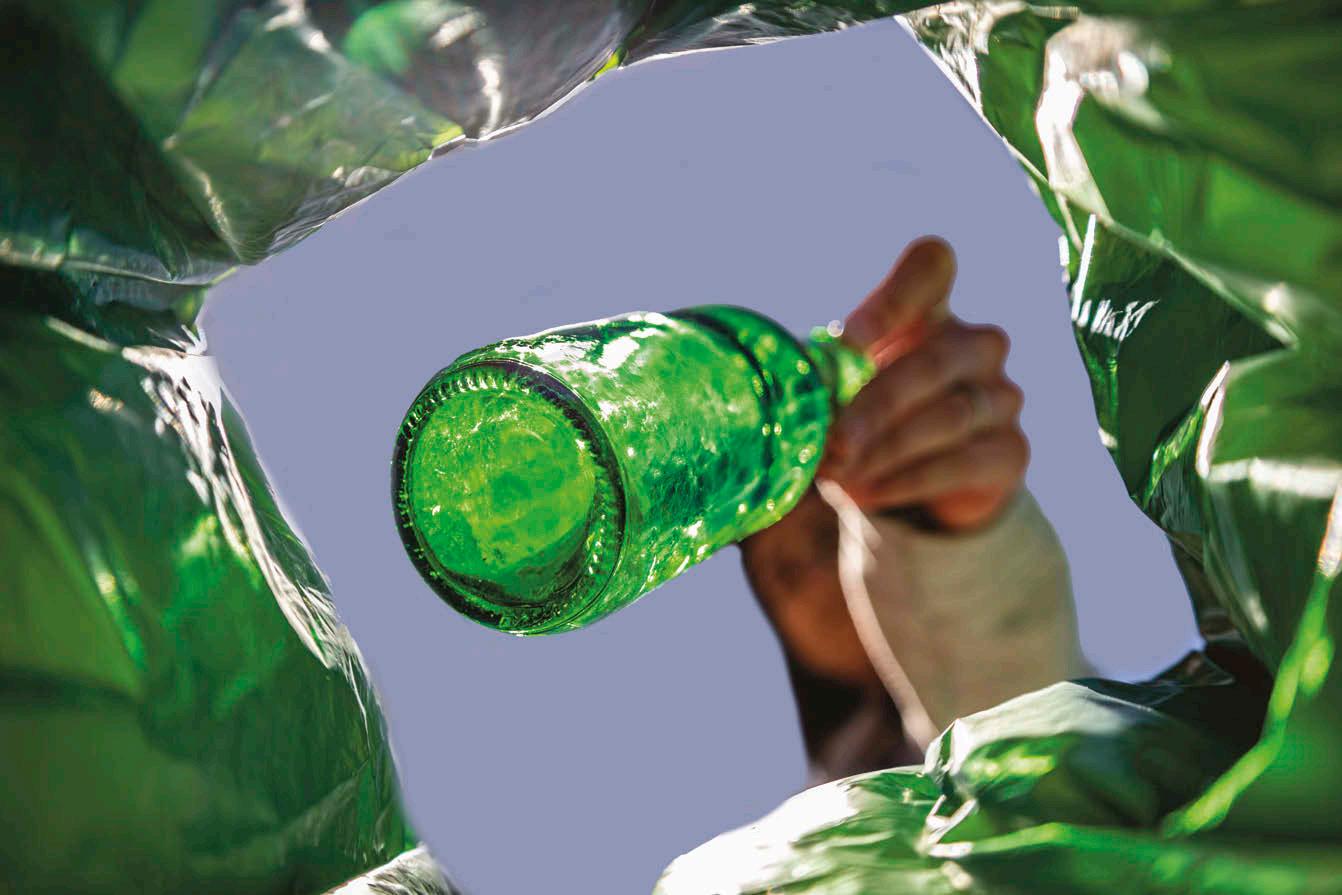
31 TENDENCIAS I TRENDS
‘

los envases, a su diseño, para actuar desde la intención y pasar a la acción, a la circularidad.
William McDonough - American architect and pioneer in the practice of circular economy in this art - said that "design is the first sign of human intention." This powerful statement urges us to understand that design transcends mere creativity and represents an authentic expression of our intentions for how we want to interact with the world around us.
Committing to conscious design enables us to choose the footprint it generates in our environment and, ultimately, helps us stay ahead and prevent its impact. According to studies by the Ellen MacArthur Foundation, the packaging design stage can account for up to 80% of the environmental impact it will generate. This figure underlines the reason why ecodesign has become the cornerstone to reduce environmental impact and the protagonist in the Law on Waste and Contaminated Soils for a Circular Economy. Prevention, together with the correct management of waste at the end of the packaging's useful life, is essential to achieve true circularity and comply with current regulations. An ambitious regulation that establishes that, in just six years, by 2030, all packaging placed on the market must be recyclable and, whenever possible, reusable.
Fortunately, the historical commitment of the packaging industry to its environmental obligations places it in an advantageous position to face the new requirements that the new framework demands of the in-
dustry that packages its products in glass in the field of waste generation prevention. or the exhaustiveness of information to share with the competent authorities. Its firm commitment to circularity and sustainability has been reflected, for years, in the investments made and in its business axes, where prevention and eco-design have been occupying a prominent position for some time. A responsibility with the environmental impact of its packaging that is also evident in the results obtained in the latest Business Prevention Plans (PEPs) 2020-2022 of Ecovidrio, where a participation of 366 packaging companies has been registered, 40% more than in the plans of the previous three-year period and whose figure we hope to exceed in the new Business Prevention Plans 2023-2027.
Measures such as reducing the weight of glass containers; eliminate sometimes superfluous elements, such as paper labels, collars, capsules or cardboard dividers; optimize packaging formats to increase the quantity of product; opting for more recyclable alternatives or using materials with a high recycling content for pa ckaging are some of the measures they have carried out in recent years. The more than 650 ecodesign measures implemented by companies that package in glass between 2020 and 2022 made it possible to avoid the generation of more than 8,000 tons of waste. Small changes with big impact.
At Ecovidrio we have been accompanying the packaging industry for more than two decades in fulfilling their obligations to manage their glass packaging waste in the most economical, sustainable and efficient way. A vocation for personalized and compre -
Más de 650 medidas de ecodiseño implantadas por las empresas que envasan en vidrio entre 2020-2022 permitieron evitar la generación de más de 8.000 t de residuos More than 650 measurements ecodesign implemented by companies that package in glass between 2020-2022 allowed the generation of more than 8,000 t of waste to be avoided
‘
hensive care service that has been reinforced with new support mechanisms and tools.
We know that the best waste is that which is not generated, which is why we offer a personalized advisory service where a team of eco-design experts visits the packaging plants and advises them on the environmental impact of their packaging and possible improvement measures; We offer a permanent 24/7 customer service to resolve your doubts and we put at your disposal an extensive training program, webinars and materials to bring you closer to the new requirements and obligations demanded by the new legislation and environmental matters.
Work on the ground with the packaging industry and in collaboration with sector associations such as the Spanish Wine Federation; Stanpa, the National Perfumery and Cosmetic Association; Brewers of Spain and Spirits of Spain; Together with those we prepare eco-design guides, in which we combine trends, analysis of the best market practices and international sources to reduce the environmental impact of the packaging and its associated elements.
At this point we can no longer excuse ourselves that “the intention is what counts.” If we want to leave behind the obsolete model of extracting, producing, consuming and discarding, we must go to the origin of the packaging, to its design, to act from intention and move on to action, to circularity.
32 TENDENCIAS I TRENDS
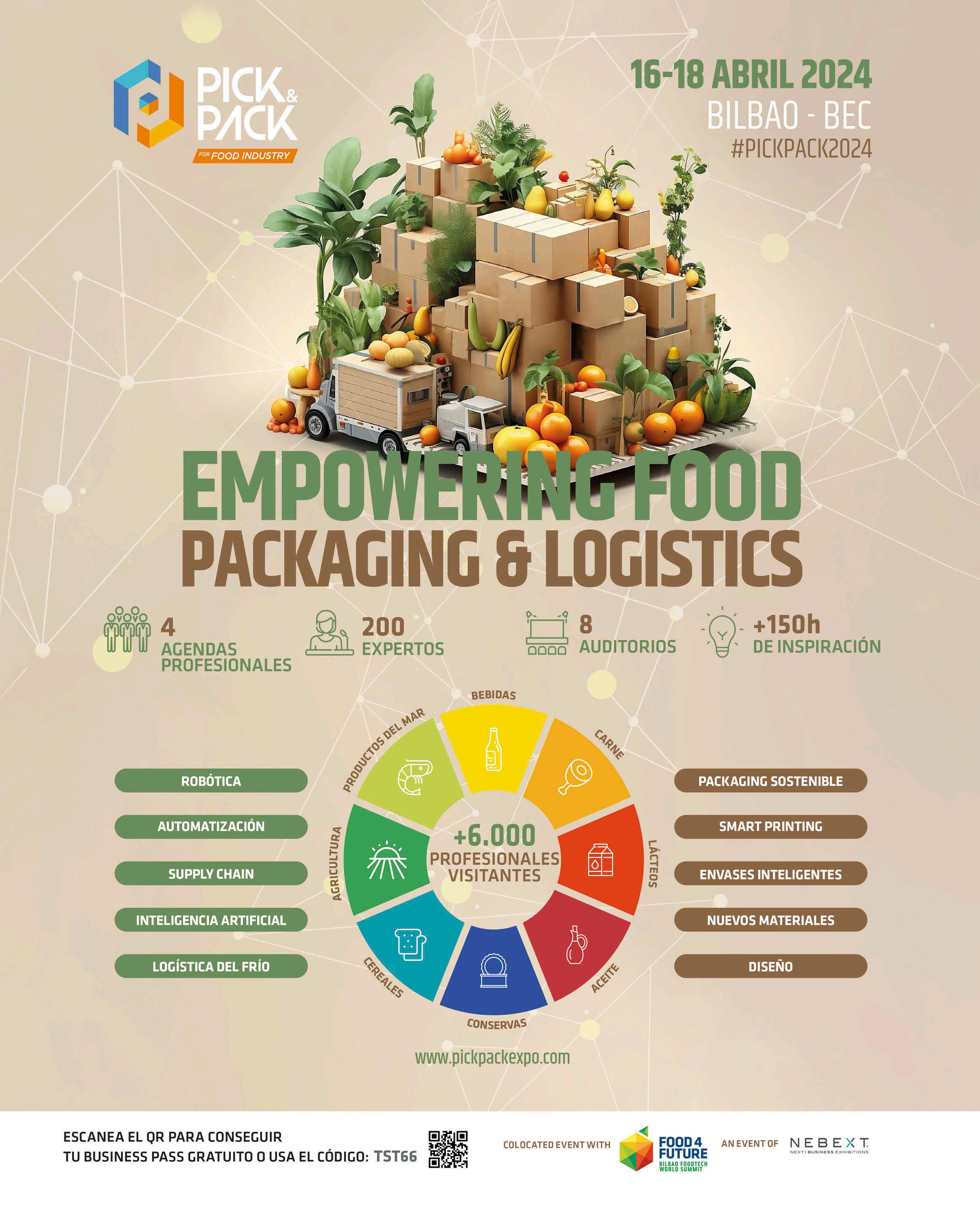
Alimentación saludable y packaging sostenible Healthy food and sustainable packaging
Envases compostables e incluso comestibles, más fáciles de reciclar y con menor huella de carbono, que contribuyan a la economía circular, es el objetivo de la investigación en packaging alimentario.
Este año, las tendencias en alimentación apuntan a una mayor concienciación sobre la alimentación, la apuesta por referencias más saludables o la creación de dietas más variadas son algunas de las preferencias en consumo, que entroncan con envases más sostenibles.
Calcular la huella de carbono Las 202 bodegas catalanas adscritas a la Denominación de Origen (DO) Catalunya contarán próximamente con una herramienta en línea personalizada para calcular su huella de carbono, gracias a un proyecto de la empresa Inèdit y la DO Catalunya. Se trata de una iniciativa pionera dentro de todas las denominaciones de origen de España. El objetivo de este proyecto es «poner a disposición de las bodegas de la DO Catalunya un sistema de medición que les facilite tanto como sea posible el diseño de planes de descarbonización», afirma Carles Gasol, director de Desarrollo de Negocio de Inèdit.
La herramienta en línea que se les proporcionará es la èdit®, desarrollada por el estudio de ecoinnovación estratégica. Permite medir el impacto ambiental de las organizaciones de forma personalizada, continua y autosuficiente, según normativas como la ISO 14064 y la ISO 14046, entre otras.
«El cálculo de la huella de carbono de la actividad de una empresa es el primer paso imprescindible para definir e implementar estrategias de reducción del impacto ambiental y evaluar su efectividad», comenta Gasol. Permite conocer el valor absoluto de la contribución de las bodegas a las emisiones de gases de efecto invernadero, además de proporcionar conocimiento sobre cómo estas emisiones se distribuyen entre las actividades directas e indirectas de las bodegas, como las emitidas por el productor de la energía que requiere la bodega, los proveedores y las generadas por el propio cultivo de la vid.
Estructuras alternativas de envase flexible
El centro tecnológico ITENE está trabajando en la creación de estructuras de envases flexible alternativas, basadas en poliolefinas, diseñadas específicamente para el sector de la alimentación, con el fin de optimizar y potenciar sus propiedades mecánicas y de barrera. Estas investigaciones se están desarrollando en el marco del proyecto NEFLEXAR, a través de dos líneas de trabajo. En primer lugar, se centra en la
aplicación de recubrimientos, mediante técnicas de impresión como flexografía y huecograbado basados en soluciones comerciales, así como la mejora de sus propiedades finales, incorporando aditivos y cargas que mejorarán sus propiedades. Asimismo, se trabaja en la formulación de grados de extrusión con el fin de mejorar las propiedades de matrices termoplásticas convencionales mediante el uso de aditivos. De este modo, se persigue reducir o eliminar la necesidad de emplear capas y adhesivos, para el diseño de estructuras de menor complejidad y con propiedades mecánicas y de barrera mejoradas.
Estas estructuras podrán utilizarse como materiales de envasado en sectores específicos como el de snacks y frutos secos, puré de frutas y productos loncheados, entre otras aplicaciones. La ventaja radica en su facilidad de reciclaje sin comprometer los requisitos técnicos ni la vida útil del producto envasado.
Recubrimientos y envases comestibles
AIINIA está trabajando en el desarrollo de recubrimientos comestibles para alimentos frescos, con el objetivo de reducir los residuos de envases y evitar el desperdicio alimentario. En este sentido, en el marco del proyecto PREVENCPACK, se está trabajando en el diseño de estructuras biobasadas que ayuden a alargar la vida útil de los productos envasados, a través del uso de recubrimientos y envases comestibles.
Este reto se abordará desde una doble perspectiva: por un lado, se trabajará con recubrimientos comestibles sobre alimentos y envases y por otro, con envases comestibles para su uso directamente sobre el producto. De este modo, PREVENCPACK desarrollará soluciones innovadoras biobasadas que logren mejoras combinadas de envasado más sostenibles (envases comestibles y nuevas presentaciones de materiales) y la protección y la conservación del alimento (recubrimientos comestibles con funcionalidades activas).
Promover la circularidad
Sustainable Innovations, una consultora española especializada en sostenibilidad, participa en el proyecto STOPP. Financiado por la UE, está orientado a promover la circularidad y crear nuevos modelos sostenibles en la cadena de valor del envasado alimentario.
Durante 36 meses, 14 socios de 7 países colaborarán para establecer las bases de un nuevo modelo basado en las llamadas 5 Rs: rechazar, reducir, rediseñar, reusar y reciclar. En línea con el compromiso de la Unión Europea de promover prácticas sostenibles y reducir la contaminación
34 TEMA CENTRAL I MAIN TOPIC
plástica, STOPP busca reducir significativamente la huella ambiental atribuida a la basura plástica en la industria alimentaria. Su enfoque incluye a todos los eslabones de la cadena de valor del envasado de alimentos.
Sustainable Innovations dirigirá la divulgación, la comunicación y la explotación del proyecto STOPP. La consultora creará una estrategia para implantar los resultados al final del proyecto, teniendo en cuenta la preparación del mercado y la transferencia tecnológica, y asegurando que estos tienen impacto y son realmente sostenibles.
Compostable and even edible packaging, easier to recycle and with a lower carbon footprint, that contribute to the circular economy, is the objective of research in food packaging.
This year, food trends point to greater awareness about food, the commitment to healthier references or the creation of more varied diets are some of the consumer preferences, which are linked to more sustainable packaging.
Calculate carbon footprint
The 202 Catalan wineries attached to the Denomination of Origin (DO) Catalunya will soon have a personalized online tool to calculate their carbon footprint, thanks to a project by the company inèdit and the DO Catalunya. This is a pioneering initiative within all the denominations of origin in Spain. The objective of this project is "to make available to DO Catalunya wineries a measurement system that makes it as easy as possible for them to design decarbonization plans," says Carles Gasol, Business Development Director at Inèdit.
The online tool that will be provided is èdit®, developed by the strategic eco-innovation study, and allows you to measure the environmental impact of organizations in a personalized, continuous and self-sufficient way, according to regulations such as ISO 14064 and ISO 14046, among others. others.
"Calculating the carbon footprint of a company's activity is the first essential step to define and implement strategies to reduce environmental impact and evaluate their effectiveness," says Gasol. It allows knowing the absolute value of the contribution of wineries to greenhouse gas emissions, in addition to providing knowledge about how these emissions are distributed between the direct and indirect activities of the wineries, such as those emitted by the producer of the energy that requires the winery, the suppliers and those issued by the cultivation of the vine itself.
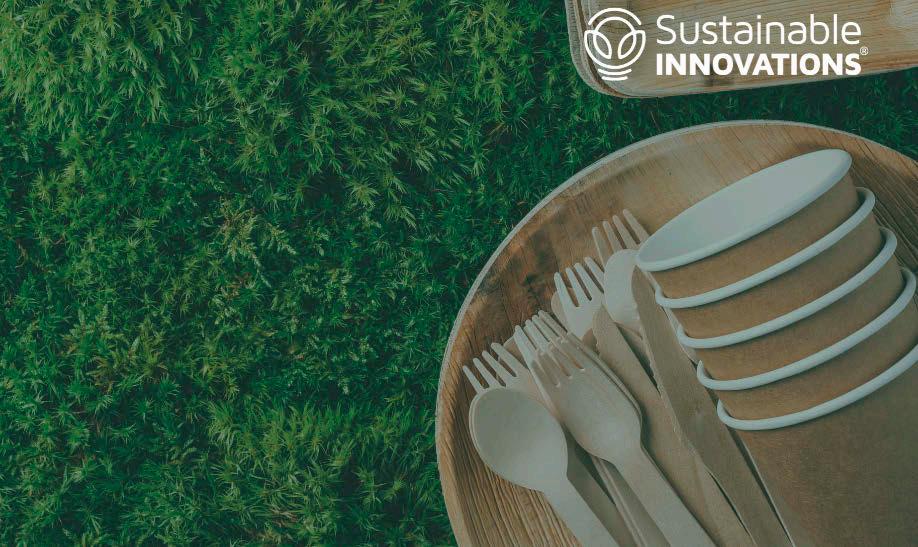
Alternative flexible packaging structures
The ITENE technology center is working on the creation of alternative flexible packaging structures, based on polyolefins, designed specifically for the food sector, in order to optimize and enhance their mechanical and barrier properties.
These investigations are being developed within the framework of the NEFLEXAR project, through two lines of work. Firstly, it focuses on the application of coatings, using printing techniques such as flexography and gravure based on commercial solutions, as well as the improvement of their final properties, incorporating additives and fillers that will improve their properties.
Likewise, work is being done on the formulation of extrusion grades in order to improve the properties of conventional thermoplastic matrices through the use of additives. In this way, the aim is to reduce or eliminate the need to use layers and adhesives, for the design of less complex structures and with improved mechanical and barrier properties.
These structures may be used as packaging materials in specific sectors such as snacks and nuts, fruit puree and sliced products, among other applications. The advantage lies in its ease of recycling without compromising the technical requirements or the useful life of the packaged product.
Edible coatings and packaging
AIINIA is working on the development of edible coatings for fresh foods, with the aim of reducing packaging waste and avoiding food waste. In this sense, within the framework of the PREVENCPACK project, work is being done on the
design of biobased structures that help extend the useful life of packaged products, through the use of edible coatings and packaging.
This challenge will be addressed from a double perspective: on the one hand, we will work with edible coatings on food and packaging and on the other, with edible packaging for use directly on the product. In this way, PREVENCPACK will develop innovative bio-based solutions that achieve combined improvements in more sustainable packaging (edible packaging and new material presentations) and the protection and preservation of food (edible coatings with active functionalities).
Promote circularity
Sustainable Innovations, a Spanish consulting firm specialized in sustainability, participates in the STOPP project. Funded by the EU, it is aimed at promoting circularity and creating new sustainable models in the food packaging value chain. For 36 months, 14 partners from 7 countries will collaborate to establish the foundations of a new model based on the so-called 5 Rs: reject, reduce, redesign, reuse and recycle. n line with the European Union's commitment to promote sustainable practices and reduce plastic pollution, STOPP seeks to significantly reduce the environmental footprint attributed to plastic waste in the food industry. Its approach includes all links in the food packaging value chain.
Sustainable Innovations will lead the dissemination, communication and exploitation of the STOPP project. The consultancy will create a strategy to implement the results at the end of the project, taking into account market readiness and technology transfer, and ensuring that these have impact and are truly sustainable.
35 TEMA CENTRAL I MAIN TOPIC
Innovación y sostenibilidad en packaging alimentario - Retos y soluciones
Dra. Concha Bosch Navarro, Tecnologías de envase en AINIA
En la industria alimentaria, la relevancia de los envases trasciende su función básica de contención y protección, convirtiéndose en un elemento crucial para la seguridad alimentaria y la calidad de los productos. En este sentido, los envases barrera son esenciales, ya que garantizan la conservación y frescura de los alimentos, y contribuyen al aumento de la vida útil de los mismos. De manera tradicional, los envases barrera se componen de materiales multicapa en los que cada uno de los materiales integrantes del mismo cumplen una función específica relacionada, por ejemplo, con la barrera a oxígeno, resistencia a humedad o capacidad de sellado, entre otros. Esta complejidad de materiales hace que, en muchos casos, la gestión del residuo sea compleja, y la capacidad de reciclarse se vea mermada. Así pues, existe un gap entre la funcionalidad que debe ofrecer el material para contribuir a la lucha contra el desperdicio alimentario y la sostenibilidad del mismo.

en relación a barrera a gases, resistencia térmica o procesabilidad. En este sentido, podemos destacar el proyecto VULCANO en el que IAN e Interal, apoyados por AINIA, han estado trabajando en el desarrollo de envases biodegradables capaces de soportar procesos retort sin que se produzcan procesos de hidrólisis. Asimismo, ACESUR ha estado trabajando en el proyecto OLIVEPACK en el que, apoyado por centros tecnológicos, está desarrollando la puesta a punto de un proceso de biorrefinería orientado a la obtención de microfibras de celulosa a partir de subproductos procedentes de la extracción del aceite de oliva que, al incorporarse como carga en bioplásticos, contribuye a la mejora de las propiedades barrera y mecánicas de botellas finales, de modo que éstas puedan usarse en el envasado de aceite de oliva.
En los últimos años, se han ido sucediendo una serie de cambios normativos para tratar de minimizar el impacto ambiental que tanto el empleo de envases como el desperdicio alimentario tienen sobre el medio ambiente. La convergencia de la funcionalidad de los envases barrera con prácticas sostenibles presenta un desafío significativo, pero también abre oportunidades para innovaciones que no solo preserven la calidad y seguridad alimentaria, sino que también respeten y protejan nuestro planeta. A continuación, se hace una revisión sobre tendencias en el desarrollo de envases alimentarios, orientadas a hacer frente a los cambios normativos y las exigencias de la UE.
Materiales innovadores para la producción de envases sostenibles
El empleo de materiales innovadores y sostenibles para la fabricación de envases alimentarios es cada vez más habitual. Materiales como bioplásticos obtenidos de subproductos de la industria agroalimentaria, papel, madera, y plásticos biobasados están ganando terreno. Estos materiales no solo reducen la dependencia de fuentes fósiles, sino que, en muchos casos, también ofrecen opciones biodegradables, reciclables o con menor impacto ambiental. Se plantean retos muy importantes y es que este tipo de materiales a veces no presentan las propiedades necesarias
Otra tendencia a destacar es el desarrollo de envases comestibles como estrategia para tratar de alcanzar residuo cero. En este sentido, el Proyecto PREVENCPACK, liderado por AINIA, está trabajando en la formulación de materiales en base a ingredientes naturales (proteínas, polisacáridos…) que puedan ser aplicados en contacto directo con el alimento, contribuyendo a aumentar la vida útil sin la necesidad de recurrir a envases adicionales. Este tipo de soluciones pueden usarse también en forma de recubrimientos. El uso de recubrimientos, sean comestibles o no, es una tendencia en alza ya que una vez aplicados sobre envases sean de plástico, papel… pueden complementar las propiedades ofrecidas por el material base sin necesidad de recurrir a envases multimaterial difíciles de gestionar una vez llega su fin de vida.
Tendencias en envases rígidos y flexibles sostenibles
Pese a la irrupción de materiales alternativos, como pueden ser los bioplásticos o el papel, el material plástico sigue siendo fundamental para el diseño y fabricación de envases alimentarios.
La multitud de opciones que existen ofrecen un abanico de propiedades que se adapta a las necesidades de envasado de muchos productos, y para las que a día de hoy todavía no existe una alternativa. Además, a nivel costes, el plástico sigue siendo el líder indiscutible en el mercado. Cierto es que muchas empresas
36 TEMA CENTRAL I MAIN TOPIC
Innovation and sustainability in food packaging - Challenges and solutions
Dr. Concha Bosch Navarro, Packaging Technologies at AINIA
El futuro del packaging alimentario está marcado por un enfoque hacia la seguridad alimentaria y la sostenibilidad
The future of food packaging is marked by a focus on food safety and sustainability
están apostando por el uso de materiales alternativos para la puesta en el mercado de sus productos. Por ejemplo, recientemente, Flora ha lanzado al mercado el primer envase para mantequilla en tarrina de celulosa libre de plástico. Sin embargo, la tendencia más extendida es el desarrollo de envases plásticos monomaterial. En este sentido, empresas importantes del sector de los envases flexibles, como pueden ser Enplater, SP Group, Grupo Lantero o Sealed Air, han estado desarrollando nuevas estructuras monomaterial con capacidad de termoformado, termosellado y adaptables a las necesidades de alimentos concretos.
En lo que respecta a envase rígido, la simplificación de los envases para hacerlos más reciclables es un aspecto importante a destacar. Un ejemplo es la botella de polietileno de alta densidad, sin etiqueta y tapa de aluminio, que mejora la reciclabilidad y reduce el contenido de plástico, desarrollada por Danone para su producto Danacol y galardonada con el primer premio de Innovación en packaging rígido en los premios MeetingPack 2022.
Procesos de reciclado innovadores
En lo que respecta al reciclado de envases, o la gestión de residuos de envase en general, hay que destacar la irrupción de los SCRAPS (Sistema Colectivo de Responsabilidad Ampliada del Productor), cuya figura empezó a tener relevancia tras la aprobación de la ley 7/2022 de residuos y suelos contaminados, y que su motivación radica en promover mejoras en los procesos de producción, consumo y gestión de residuos con el fin de convertirlo en uno más circular, innovador y respetuoso con el medio
ambiente. A raíz de esto, se han acentuado más si cabe la necesidad de innovación en lo que se refiere a procesos de reciclado, entre otros.
En lo que respecta al uso de material reciclado, el PET sigue siendo el material por excelencia, ya que es el único que presenta procesos de reciclado mecánicos aprobados por EFSA para su uso en la fabricación de envases en contacto con alimentos. Pero la problemática de gestión de residuos afecta mucho a otro tipo de materiales, como pueden ser las poliolefinas y para las que a día de hoy no existe todavía una solución muy clara. Por un lado, se está tratando de innovar hacia el establecimiento de sistemas cerrados que permitan disponer de residuos de envases controlados para poder aplicar procesos de reciclado mecánico a los mismos y, por otro lado, en el desarrollo de procesos de reciclado químico.
Los procesos de reciclado químico son, sin duda, una tendencia en la que varias empresas y centros de investigación están invirtiendo muchos recursos. A diferencia del reciclado mecánico, los procesos de reciclado químico permiten volver a obtener materiales de calidad virgen y, por tanto, aptos para contacto alimentario. Aun así quedan muchos aspectos por resolver relacionados con la clasificación y trazabilidad de los residuos o la mejora de la eficiencia energética y rendimientos de los procesos, entre otros.
El reciclado químico, además, también se está explorando para su aplicación sobre envases y materiales biodegradables. El objetivo es contribuir a mejorar el impacto ambiental derivado de la obtención de estos materiales, y contribuir a generar un stock que permita a futuro una implementación de mercado de estos materiales con las ventajas medioambientales que ello supondría. En este sentido, podemos destacar el proyecto REVALORIZA, en el que AINIA está investigando procesos de hidrólisis y solvólisis aplicados a diferentes biomateriales como alternativa a su obtención, bien sea por procesos fermentativos o biotecnológicos.
Reutilización de envases
El Real Decreto 1055/2022 de envases y residuos de envase establece que las empresas deben promover el uso de envases reutilizables y facilitar su devolución y tratamiento adecuado. El
37 TEMA CENTRAL I MAIN TOPIC
‘
sector alimentación todavía se muestra reacio a incorporar muchas referencias a través de este nuevo concepto, ya que hay aspectos claves que preocupan, por ejemplo, en lo relativo a seguridad alimentaria o en la gestión y acondicionamiento de los envases. Así pues, no son fáciles de encontrar en los lineales de los supermercados, pero sí que existen empresas como puede ser BUMERANG o RETOORNADO que están estableciendo circuitos de reutilización en establecimientos como hospitales, caterings, colegios o incluso empresas.
El futuro del packaging alimentario está, por tanto, marcado por un enfoque hacia la seguridad alimentaria y la sostenibilidad. La innovación es la clave para poder avanzar hacia nuevas soluciones capaces de hacer frente a los retos medioambientales, pero sin dejar de lado la funcionalidad que debe aportar un envase para poder hacer frente al desperdicio alimentario. En MeetingPack 2024 «Soluciones en envases barrera: un reto para la economía circular», que tiene lugar los días 10-11 abril de 2024 en el palacio de congresos de Valencia, se hará una revisión de las últimas innovaciones que empresas del sector han estado desarrollando para lidiar con los retos planteados.
In the food industry, the relevance of packaging transcends its basic function of containment and protection, becoming a crucial element for food safety and product quality. In this sense, barrier packaging is essential, since it guarantees the conservation and freshness of food, and contributes to increasing its useful life. Traditionally, barrier packaging is made up of multi-layer materials in which each of the component materials fulfills a specific function related, for example, to the oxygen barrier, humidity resistance or sealing capacity, among others. This complexity of materials makes waste management complex in many cases, and the ability to recycle is reduced. Thus, there is a gap between the functionality that the material must offer to contribute to the fight against food waste and its sustainability.
In recent years, a series of regulatory changes have been made to try to minimize the environmental impact that both the use of packaging and food waste have on the environment. The convergence of barrier packaging functionality with sustainable practices presents a significant challenge, but also opens opportunities for innovations that not only preserve food quality and safety, but also respect and protect our planet. Next, a review is made of trends in the development of food packaging aimed at addressing regulatory changes and EU requirements.
Innovative materials for the production of sustainable packaging
The use of innovative and sustainable materials for the manufacture of food packaging is increasingly common. Materials such as bio -
plastics obtained from by-products of the agri-food industry, paper, wood, and bio-based plastics are gaining ground. These materials not only reduce dependence on fossil sources, but, in many cases, also offer options that are biodegradable, recyclable, or have less environmental impact. In this sense, very important challenges arise and that is that this type of materials sometimes do not have the necessary properties in relation to gas barrier, thermal resistance or processability. In this sense, we can highlight the VULCANO project at the IAN and Interal, supported by AINIA, have been working on the development of biodegradable packaging capable of withstanding retort processes without hydrolysis processes occurring. Likewise, ACESUR has been working on the OLIVEPACK project in which, supported by technological centers, it is working on the development of a biorefinery process aimed at obtaining cellulose microfibers from byproducts from the extraction of olive oil that , when incorporated as a filler in bioplastics, contributes to the improvement of the barrier and mechanical properties of final bottles so that they can be used in the packaging of olive oil.
Another trend worth highlighting is the development of edible packaging as a strategy to try to achieve zero waste. In this sense, the PREVENCPACK Project led by AINIA is working on the formulation of materials based on natural ingredients (proteins, polysaccharides...) that can be applied in direct contact with food, contributing to increasing shelf life without the need to resort to additional packaging. These types of solutions can also be used in the form of coatings. The use of coatings, whether edible or not, is a growing trend since once applied to containers, whether plastic or paper, they can complement the properties offered by the base material without the need to resort to multimaterial packaging that is difficult to manage once it arrives. his end of life.
Trends in sustainable rigid and flexible packaging
Despite the emergence of alternative materials, such as bioplastics or paper, plastic material continues to be essential for the design and manufacture of food packaging. The multitude of options that exist offer a range of properties that adapt to the packaging needs of many products, and for which today there is still no alternative. Furthermore, in terms of costs, plastic continues to be the undisputed leader in the market. It is true that many companies are betting on the use of alternative materials to market their products, for example, recently Florea has launched the first packaging for butter in a plastic-free cellulose tub. However, the trend The most widespread is the development of single-material plastic packaging.In this sense, important companies in the flexible packaging sector such as Enplater; SP group, Grupo Lantero or Sealed Air have been developing new single-material
38 TEMA CENTRAL I MAIN TOPIC
structures with thermoforming, heat-sealing capacity and adaptable to the needs of specific foods. Regarding rigid packaging, the simplification of packaging to make it more recyclable is an important aspect to highlight. An example of this is the highdensity polyethylene bottle, without a label and an aluminum lid, which improves recyclability and reduces plastic content, which Danone developed for its Danacol product and which was awarded the first prize for Innovation in rigid packaging at the MeetingPack 2022 awards.
Innovative recycling processes
With regard to packaging recycling, or packaging waste management in general, we must highlight the emergence of SCRAPS (Collective System of Extended Producer Responsibility) whose figure began to have relevance after the approval of law 7 /2022 of waste and contaminated soils, and whose motivation lies in promoting improvements in the production, consumption and waste management processes in order to make it more circular, innovative and respectful of the environment. As a result of this, the need for innovation has become even more accentuated in regards to recycling processes, among others.
Regarding the use of recycled material, PET continues to be the material par excellence since it is the only one that has mechanical recycling processes approved by EFSA for use in the manufacture of packaging in contact with food. But the problem of waste management greatly affects other types of materials, such as polyolefins, for which today there is still no clear solution. On the one hand, we are trying to innovate towards the establishment of closed systems that allow controlled packaging waste to be available in order to apply mechanical recycling processes to them and, on the other hand, in the development of chemical recycling processes.
Chemical recycling processes are undoubtedly a trend in which several companies and research centers are investing many resources. Unlike mechanical recycling, chemical recycling processes allow materials of virgin quality to be obtained again and, therefore, suitable for food contact. Even so, there are many aspects to be resolved related to the classification and traceability of waste or the improvement of energy efficiency and process performance, among others.
Chemical recycling is also being explored for its application on packaging and biodegradable materials. The objective is to contribute to improving the environmental impact derived from obtaining these materials, and to contribute to generating a stock that allows a future market implementation of these materials with the environmental advantages that they would entail. In this

sense we can highlight the REVALORIZA project, in which AINIA is investigating hydrolysis and solvolysis processes applied to different biomaterials as an alternative to obtaining them either through fermentative or biotechnological processes.
Packaging reuse
Royal Decree 1055/2022 on packaging and packaging waste establishes that companies must promote the use of reusable packaging and facilitate their return and appropriate treatment. The food sector is still reluctant to incorporate many references through this new concept since there are key aspects of concern, for example, regarding food safety or the management and conditioning of packaging. Thus, they are not easy to find on supermarket shelves, but there are companies such as BUMERANG or RETOORNADO that are establishing reuse circuits in establishments such as hospitals, catering establishments, schools or even companies.
The future of food packaging is, therefore, marked by a focus on food safety and sustainability. Innovation is the key to moving forward towards new solutions capable of addressing environmental challenges, but without leaving aside the functionality that a packaging must provide in order to address food waste. At MeetingPack 2024 “Solutions in barrier packaging: a challenge for the circular economy” that will take place on April 10-11, 2024 at the Valencia Conference Center, there will be a review of the latest innovations that companies in the sector have been developing to deal with the challenges posed.
39 TEMA CENTRAL I MAIN TOPIC
Tendencias y retos en la industria del packaging
Lucio Grether Packaging Business Developer del centro tecnológico Eurecat
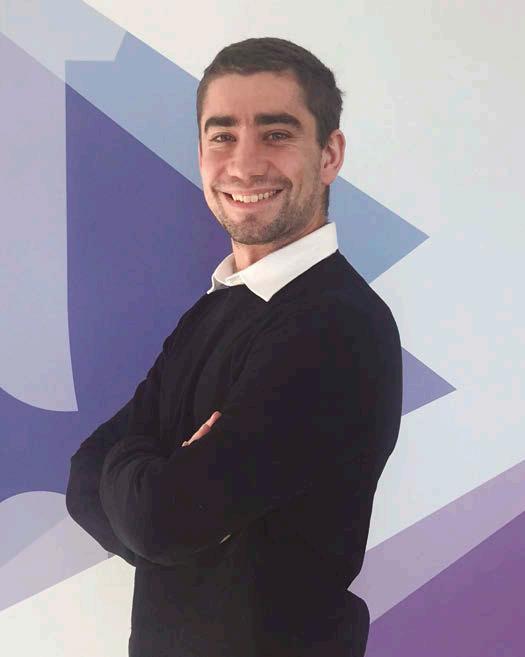
En el entorno empresarial vertiginoso de hoy en día, mantenerse en la vanguardia tecnológica es fundamental para mantener la competitividad. El sector del packaging se encuentra en constante evolución, con una tendencia en torno a la digitalización de la industria y hacia soluciones más sostenibles.
Desde el centro tecnológico Eurecat, destacamos las principales tendencias tecnológicas, retos y oportunidades que serán los vectores de transformación de las empresas del sector en los próximos años y que, en definitiva, definirán su competitividad y rol en el mercado:
-IA aplicada a procesos industriales. La inteligencia artificial está transformado la industria al mejorar la eficiencia, la calidad, la seguridad y la personalización de los productos y servicios. Estas aplicaciones ayudan a las empresas a mantenerse competitivas y a adaptarse a un entorno empresarial en constante evolución. Estas herramientas nos permiten predecir cuándo es necesario el mantenimiento de equipos y maquinaria. Los sistemas de monitoreo en tiempo real y los algoritmos de aprendizaje automático pueden identificar signos tempranos de desgaste o fallos, evitando costosos tiempos de inactividad no planificados. También se utilizan para mejorar el control de calidad en la producción. Los sistemas de visión por computadora y el aprendizaje automático, a su vez, pueden identificar y corregir defectos de manera más precisa y rápida. El principal requisito asociado es contar con una base de datos completa y de calidad que permita realizar la analítica pertinente.
-Lightweighting. Se busca reducir la cantidad de material empleado tanto para la fabricación de los envases como para la fabricación de la maquinaria. Como resultado, se tiende a reducir los costes de fabricación, de logística y el impacto ambiental. Plantea naturalmente el reto de preservar las propiedades mecánicas y robustez del diseño original, buscando mejorar los costos totales. Este proceso se lleva a cabo, entre otras metodologías, a través de herramientas de simulación avanzada para refinar e iterar rápidamente propuestas de mejora
-Monomaterialidad. Es tendencia aplicar esta estrategia de ecodiseño en todo tipo de envases. Consiste en fabricar los envases en un único material con el fin de mejorar su reciclabilidad. El reto intrínseco es mantener las propiedades deseadas del producto priorizando la seguridad alimentaria. Estas propiedades pueden ser tanto de preservación del contenido como mecánicas. Para transformar el catálogo de productos bajo esta metodología, se requiere un análisis exhaustivo tanto del material final como de los requisitos técnicos.
-Nuevos materiales. Ante las crecientes tendencias de los consumidores a optar y demandar envases más sostenibles, han crecido las opciones de nuevos materiales para la industria del envase. El desafío de evitar la migración de sustancias se suma al de la escalabilidad industrial del mismo y al de mejorar la resiliencia de la maquinaria para que pueda adaptarse a los cambios, conservando su eficiencia y velocidad. Además, es importante dimensionar la mejora en el impacto ambiental con respecto a los materiales tradicionales, mediante análisis de ciclo de vida como argumento de venta, y para reducir cargas impositivas en algunas regiones.
-Aumento del contenido reciclado. En complemento a la tendencia anterior, es creciente la orientación a incorporar mayores proporciones de material reciclado en los envases. Para ello, es importante mantener un control de los posibles contaminantes y los requisitos de color o transparencia. En base a las necesidades técnicas del producto final, se busca maximizar la proporción de material reciclado y optimizar los parámetros de producción, minimizando la degradación. -Smart Packaging. Dotar a los envases de sistemas de captación o emisión de datos permite contar con capacidades ampliadas para los envases. Permite a los mismos contar con sensórica de parámetros de conservación, trazabilidad de los productos, autenticación y hasta interactuar con el usuario o consumidor brindando una experiencia de consumo aumentada. Este tipo de iniciativas son más frecuentes en el packaging de lujo por la valoración del coste añadido, aunque no es una regla inflexible. Las tecnologías empleadas son Blockchain, realidad aumentada, electrónica impresa y NFCs, entre otras.
En conjunto, estos desafíos y tendencias subrayan la importancia de la innovación constante en la industria del packaging y el ritmo de los paradigmas tecnológicos. La innovación en el packaging no es solo un imperativo comercial, sino además es un catalizador para un cambio positivo en la forma en que producimos, consumimos y preservamos nuestro entorno: un cambio de modelo que no es otra cosa que un ámbito de retos de innovación.
40 TEMA CENTRAL I MAIN TOPIC
Trends and challenges in the packaging industry
Grether
El sector del packaging se encuentra en constante evolución, con tendencia a la digitalización de la industria y soluciones más sostenibles
‘The packaging sector is constantly evolving, with a tendency towards the digitalization of the industry and more sustainable solutions
In today's fast-paced business environment, staying on the cutting edge of technology is critical to staying competitive. The packaging sector is constantly evolving, with a trend towards the digitalization of the industry and towards more sustainable solutions.
From the Eurecat technology center, we highlight the main technological trends, challenges and opportunities that will be the vectors of transformation of companies in the sector in the coming years and that, ultimately, will define their competitiveness and role in the market:
- AI applied to industrial processes: Artificial intelligence is transforming the industry by improving efficiency, quality, safety and personalization of products and services. These applications help companies stay competitive and adapt to an ever-evolving business environment. These tools allow us to predict when maintenance of equipment and machinery is necessary. Real-time monitoring systems and machine learning algorithms can identify early signs of wear or failure, avoiding costly unplanned downtime. They are also used to improve quality control in production. Computer vision systems and machine learning, in turn, can identify and correct defects more accurately and quickly. The main associated requirement is to have a complete and quality database that allows pertinent analysis to be carried out.
- Lightweighting: The aim is to reduce the amount of material used both for the manufacture of containers and for the manufacture of machinery. As a result, manufacturing and logistics costs and environmental impact tend to be reduced. It naturally poses the challenge of preserving the mechanical properties and robustness of the original
design, seeking to improve total costs. This process is carried out, among other methodologies, through advanced simulation tools to quickly refine and iterate improvement proposals.
- Monomateriality: It is a trend to apply this eco-design strategy in all types of packaging. It consists of manufacturing the containers in a single material in order to improve their recyclability. The intrinsic challenge is to maintain the desired properties of the product while prioritizing food safety. These properties can be both content preservation and mechanical. To transform the product catalog under this methodology, an exhaustive analysis of both the final material and the technical requirements is required.
- New materials: Given the growing trends of consumers to choose and demand more sustainable packaging, the options for new materials for the packaging industry have grown. The challenge of avoiding the migration of substances is added to its industrial scalability and to improving the resilience of the machinery so that it can adapt to changes while maintaining its efficiency and speed. Furthermore, it is important to measure the improvement in environmental impact with respect to traditional materials through life cycle analysis as a sales argument and to reduce tax burdens in some regions.
- Increase in recycled content: In addition to the previous trend, there is a growing trend towards incorporating greater proportions of recycled material in packaging. To do this, it is important to maintain control of possible contaminants and color or transparency requirements. Based on the technical needs of the final product, we seek to maximize the proportion of recycled material and optimize production parameters, minimizing degradation.
- Smart Packaging: Providing packaging with data capture or emission systems allows for expanded packaging capabilities. It allows them to have sensors for conservation parameters, product traceability, authentication and even interact with the user or consumer, providing an increased consumption experience. These types of initiatives are more frequent in luxury packaging due to the assessment of the added cost, although it is not an inflexible rule. The technologies used are Blockchain, augmented reality, printed electronics and NFCs, among others.
Together, these challenges and trends underline the importance of constant innovation in the packaging industry and the pace of technological paradigms. Innovation in packaging is not only a commercial imperative, but is also a catalyst for positive change in the way we produce, consume and preserve our environment: a change in model that is nothing more than an area of innovation challenges.
Lucio
Packaging Business Developer at the Eurecat technology center
41 TEMA CENTRAL I MAIN TOPIC
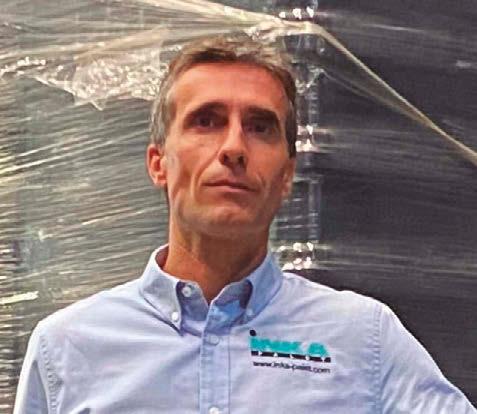
Miquel Fontbona Puig Director comercial Commercial Director Inka Palet S.L.
Inka Palet está especializada en palets en distintos materiales. ¿Cuáles son y qué caracteriza a cada uno de ellos? En plástico, palets aptos para todos los sectores de la industria, disponibles en distintos formatos y medidas, en plástico reciclado y plástico virgen de primera fusión, aptos para uso alimentario y para todo tipo de exportaciones. Son de fácil limpieza y manipulación y de tara menor que los palets tradicionales de madera. Preparados también para altas capacidades de carga y para sistemas de pooling, lavables y de larga vida útil.
En madera, son palets robustos que se pueden fabricar a medida, en formato, en espesor y en cantidad de tablas, aparte de las medidas estándares como el palet EUR homologado, a modo de ejemplo. Disponibles en madera nueva y usada. Preparados también para altas capacidades de carga y para sistemas de pooling y con tratamiento a calor HT, aptos para exportaciones donde se aplica la normativa ISPM15. Reparables durante su ciclo de vida.
En fibra de madera prensada, tanto nueva como reciclada, son palets producidos a partir de subproductos de la industria maderera que se fabrican a alta presión y temperatura. De tara menor a los palets tradicionales de madera y aptos para exportaciones a todo el mundo sin necesidad de tratamientos adicionales.
En aglomerado y mdf, en formato de palet tradicional producidos en medida estándar y especiales, son de base lisa y aptos para exportaciones sin necesidad de tratamientos adicionales.
En aluminio, están disponibles en medidas estándares y a medida, preparados también para altas capacidades de carga y para uso interno, de fácil lavado y secado.
De un solo uso y disponibles en medidas estándares y a medida, en cartón y EPS son de tara reducida y sin clavos ni astillas, lo que facilita su manipulación. También son reciclables una vez terminado su ciclo de vida.
En metal, están disponibles en medidas estándares y a medida, preparados para altas capacidades de carga y rendimiento, así como para ser manipulados
con elementos mecánicos para su exigente tara.
¿Se necesitan palets específicos según su uso?
Los de plástico son reciclados y reciclables una vez terminado su ciclo de vida. Ideales para el sector alimentario, farmacéutico y gran distribución.
En fibra de madera prensada, al tener formato encajable, son ideales para el ahorro de espacio y manipulación en cualquier cadena logística.
Los palets de aluminio están pensados para la industria farmacéutica y de alimentación, por sus altas propiedades y larga durabilidad e higiene. En cartón y EPS, son ideales para el transporte aéreo y para cargas de poco peso.
En metal, son ideales para la industria pesada (automoción y metalúrgica), por sus altas propiedades y larga durabilidad.
Además de palets, también ofrecen complementos de paletizado para el sector del embalaje y la logística. ¿De qué tipo de accesorios se trata? Si, ofrecemos complementos para el paletizado y en distintos materiales también. Es el caso de cuñas y falcas para la fijación de bobinas encima del palet, tanto en madera como en plástico y cartón. También, tapas intercaladoras para el apilamiento de palets a distintos niveles. Disponibles en madera, fibra aglomerada, mdf y plástico.
Asimismo, cercos, contenedores, box palets y jaulas de grandes dimensiones, en madera, aglomerado, plástico y aluminio. Y cajas rígidas y plegables en muchos formatos para distintos sectores de la industria.
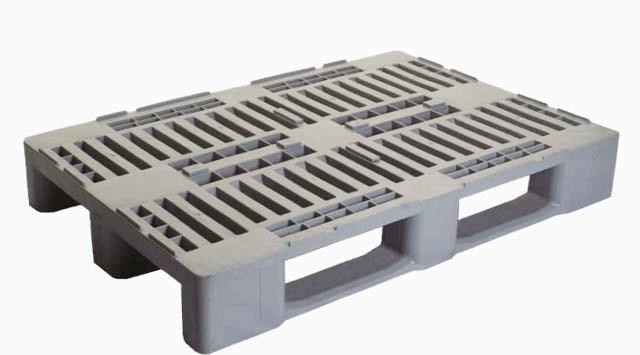
42 CLÚSTER DEL PACKAGING
Entrevista al socio Member interview
Trabajan directamente con empresas del sector del packaging. ¿Cuáles son sus principales demandas?
Palets y complementos aptos para exportaciones; resistentes para sistemas de racking y automatizados; producidos con materiales sostenibles y reciclables. También nos piden estudios sobre cómo optimizar el uso de palets en función de las necesidades de cada cliente.
¿Qué beneficios les aporta pertenecer al Clúster del Packaging?
Estar al día de nuevas normativas y regulaciones por lo que se refiere al embalaje, así como estar informado de novedades y avances referentes a este sector. También, posibilidad de realizar networking y proyectos colaborativos con otros socios y tener información sobre ayudas y subvenciones para nuestro sector.
Inka Palet is specialized in pallets in different materials. What are they and what characterizes each of them?
In plastic, pallets suitable for all sectors of the industry, available in different formats and sizes, in recycled plastic and first-melt virgin plastic, suitable for food use and for all types of exports. They are easy to clean and handle and have a smaller tare than traditional wooden pallets. Also prepared for high load capacities and for pooling systems, washable and long-lasting.
In wood, they are robust pallets that can be made to measure, in format, thickness and number of boards, apart from standard measurements such as the approved EUR pallet, as an example. Available in new and used wood. Also prepared for high load capacities and for pooling systems and with HT heat treatment suitable for exports where ISPM15 regulations apply. Repairable during their life cycle.
In pressed wood fiber, both new and recycled, they are pallets produced from byproducts of the wood industry that are manufactured at high pressure and temperature. Lower tare than traditional wooden pallets and suitable for exports to the whole world without the need for additional treatments.
Made of chipboard and MDF, in traditional pallet format, produced in standard and special sizes, they have a smooth base and are suitable for export without the need for additional treatments.
In aluminum, they are available in standard and custom sizes, also prepared for high load capacities and for internal use, easy to wash and dry.
Single-use and available in standard and custom sizes, in cardboard and EPS, they have a reduced tare and no nails or splinters, making

them easier to handle. They are also recyclable once their life cycle has ended.
In metal, they are available in standard and custom sizes, prepared for high load capacities and performance, as well as to be manipulated with mechanical elements for their demanding tare.
Are specific pallets needed depending on their use?
Plastic ones are recycled and recyclable once their life cycle has ended.
Ideal for the food, pharmaceutical and large distribution sectors. Made of pressed wood fibre, as they have a nestable format, they are ideal for saving space and handling in any logistics chain.
Aluminum pallets are designed for the pharmaceutical and food industries, due to their high properties and long durability and hygiene. Made of cardboard and EPS, they are ideal for air transport and for light loads.
In metal, they are ideal for heavy industry (automotive and metallurgical), due to their high properties and long durability.
In addition to pallets, you also offer palletizing accessories for the packaging and logistics sector. What type of accessories are?
Yes, we offer accessories for palletizing and in different materials as well. This is the case of wedges and falcas for fixing coils on top of the pallet, both in wood, plastic and cardboard.
Also, interleaving covers for stacking pallets at different levels. Available in wood, chipboard, MDF and plastic.
Likewise, fences, containers, box pallets and large cages, in wood, chipboard, plastic and aluminum. And rigid and folding boxes in many formats for different industry sectors.
Inka works directly with companies in the packaging sector. What are its main demands?
Pallets and accessories suitable for exports; resistant for racking and automated systems; produced with sustainable and recyclable materials. They also ask us for studies on how to optimize the use of pallets based on the needs of each client.
What benefits does belonging to the Packaging Cluster bring you?
Be up to date with new rules and regulations regarding packaging, as well as be informed of news and advances regarding this sector. Also, the possibility of networking and collaborative projects with other partners and having information about aid and subsidies for our sector.
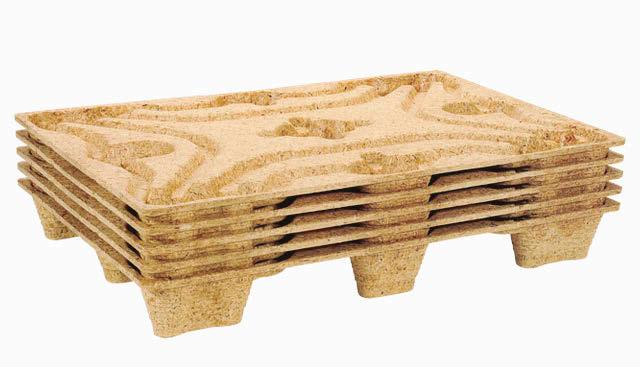
43 CLÚSTER DEL PACKAGING
Proyectos Projects
Aprobado el proyecto SPBack SPBack project approved
La Agencia de Residuos de Cataluña ha publicado la resolución definitiva de las propuestas presentadas a la convocatoria de proyectos de fomento a la economía circular del año 2022. El Packaging Cluster acompañó a tres empresas asociadas ( Controlpack, Ecogots e IP Triana ) en la preparación y presentación de propuestas.
Uno de estos proyectos es SPBack, impulsado por Controlpack, uno de los principales distribuidores de film estirable a nivel nacional. Con la ejecución de esta iniciativa, se evaluará la posibilidad de activar circuitos de recuperación del film estirable distribuido por la empresa, y de realizar un piloto con algún cliente para activar la recuperación de film a través de logística inversa, encontrar recicladores de film LDPE y contextualizar posibles deducciones de impuesto de plástico por la recuperación de film.
El polietileno de baja densidad (también conocido como PEBD o LDPE por sus siglas en inglés) es un polímero termoplástico, del grupo de los olefínicos, formado por múltiples unidades de etileno. Su punto fuerte es su flexibilidad. Además, es muy resistente al impacto y a distintas condiciones térmicas y químicas. Aunque es un plástico reciclable, este material, como todos los plásticos vírgenes, no está exento del impuesto al plástico recientemente impuesto en todo el Estado.
Por eso Controlpack busca ofrecer un sistema de logística inversa una vez utilizado el material que él mismo provee, permitiendo a la empresa solventar dos grandes retos que el reciclaje presenta:
- Volumen. En muchos casos algunos materiales no se reciclan porque no se recoge suficiente volumen del material en cuestión.
- Conocimiento del material y homogeneidad. La empresa conoce bien la composición de su material y, al ser importado y manipulado por ellos mismos, presenta las mismas características.
Aunque el reciclado de materiales a nivel industrial por ahora no provee la certificación que permite la deducción del impuesto, el proyecto supone un paso adelante en la hoja de ruta de economía circular que marcan las nuevas directrices. Además, el nuevo Real Decreto de envases y residuos in -
dustriales hace referencia a bonificaciones por sistemas de cierre de ciclo, recuperación o reciclaje, y establece la necesidad de adherirse a Sistemas Individuales o Colectivos de Responsabilidad Ampliada del Productor de Residuos (SIRAP/SCRAP).
La trayectoria de Controlpack en el ámbito de sostenibilidad ha ido hasta ahora alineada con la optimización de embalaje y reducción de film en aplicación a palet. Controlpack actúa como proveedor tecnológico en sistemas de recubrimiento de palet y centra su actividad I+D+i en la introducción de nuevos materiales técnicos, como los films con nanopartículas que permiten incrementar su resistencia minimizando la cantidad de plástico aplicado sobre palet.
Además, uno de los productos estrella de la empresa es su servitización. Controlpack se dedica a la distribución de film y maquinaria, pero también ofrece un sistema de pay per use, es decir, máquinas a coste cero a cambio de hacer uso del film propio.
Todo esto les permite, por un lado, ofrecer un mejor asesoramiento ligado a la optimización de material anteriormente mencionado y, por otro lado, la implementación de sistemas circulares de sus materiales, como pretende este proyecto.
The Waste Agency of Catalonia has published the final resolution of the proposals submitted to the call for projects to promote the circular economy in 2022. The Packaging Cluster accompanied three associated companies ( Controlpack, Ecogots and IP Triana ) in the preparation and presentation of proposals.
One of these projects is SPBack promoted by Controlpack, one of the main distributors of stretch film nationwide. With the execution of this initiative, the possibility of activating recovery circuits for the stretch film distributed by the company will be evaluated, and carrying out a pilot with a client to activate the recovery of film through reverse logistics, find LDPE film recyclers and contextualize Possible plastic tax deductions for film recovery.
Low-density polyethylene (LDPE or PEBD in Spa -
44 CLÚSTER DEL PACKAGING
www.packagingcluster.com

nish) is a thermoplastic polymer, from the olefinic group, formed by multiple ethylene units. Its strong point is its flexibility. In addition, it is very resistant to impact and different thermal and chemical conditions. Although it is a recyclable plastic, this material, like all virgin plastics, is not exempt from the recently imposed statewide plastic tax.
That is why Controlpack seeks to offer a reverse logistics system once the material it itself provides has been used, allowing the company to solve two major challenges that recycling presents:
- Volume. In many cases some materials are not recycled because not enough volume of the material in question is collected.
- Knowledge of the material and homogeneity. The company knows well the composition of its material and, when imported and handled by themselves, it has the same characteristics.
Although the recycling of materials at an industrial level does not currently provide the certification that allows tax deduction, the project represents a step forward in the circular economy roadmap established by the new guidelines. Furthermore, the new Royal Decree on packaging and industrial waste refers to bonuses for cycle closure, recovery or recycling systems, and establishes the need to adhere to Individual or Collective Systems of Extended Responsibility of the Waste Producer (SIRAP/SCRAP).
Controlpack's trajectory in the field of sustainability has so far been aligned with packaging optimization and film reduction in pallet application. Controlpack acts as a technological supplier in pallet coating systems and focuses its R&D&I activity on the introduction of new technical materials, such as films with nanoparticles that increase their resistance by minimizing the amount of plastic applied to the pallet.
Furthermore, one of the company's star products is its servitization. Controlpack is dedicated to the distribution of film and machinery, but also offers a pay per use system, that is, machines at zero cost in exchange for using their own film. All this allows them, on the one hand, to offer better advice linked to the optimization of the aforementioned material, and on the other hand, the implementation of circular systems of their materials, as this project aims to do.
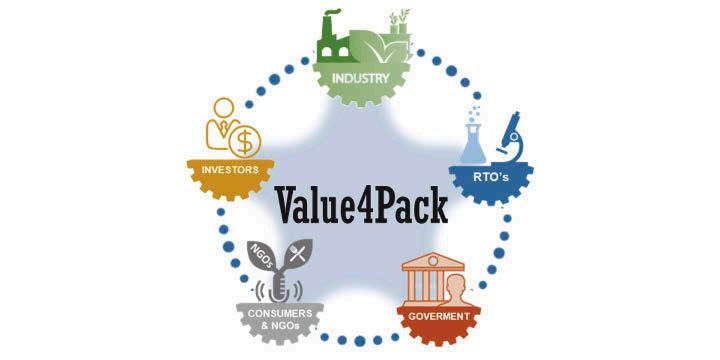
Value4Pack - Unir las oportunidades de inversión para lograr una cadena de valor europea de envasado resistente de alimentos
Value4Pack pretende reforzar las colaboraciones interregionales, apoyar la innovación y salvar las distancias entre las distintas partes interesadas mediante la creación de un ecosistema inclusivo y la prestación de asistencia específica, con el fin de impulsar la innovación y la capacidad de inversión en la cadena de valor europea del envasado alimentario. Es un proyecto de inversión en Innovación Interregional (I3), que tiene su origen en la Asociación Europea S3 de Envasado de Alimentos.
Value4Pack - Uniting investment opportunities to achieve a European resilient food packaging value chain
Value4Pack aims to strengthen cross-regional collaborations, support innovation and bridge gaps between different stakeholders by creating an inclusive ecosystem and providing targeted assistance, in order to boost innovation and investment capacity in the value chain European food packaging.
It is an investment project in Interregional Innovation (I3), which has its origin in the European S3 Food Packaging Association.
45 CLÚSTER DEL PACKAGING
www online
Barcelona Centre de Disseny celebra su 50 aniversario celebrates its 50th anniversary
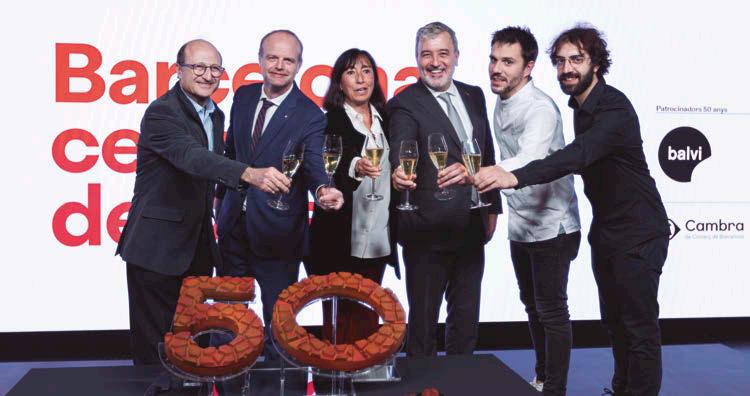
01.
Barcelona Centre de Disseny (BcD) ha conmemorado sus 50 años impulsando la creatividad y el diseño con una celebración en el Roca Barcelona Gallery. El evento reunió a unas 200 personas, incluyendo diseñadores, representantes empresariales y destacados miembros de instituciones que han contribuido a forjar la historia de esta entidad desde su fundación en 1973.
Entre los asistentes se contó con la presencia del alcalde de Barcelona, Jaume Collboni, quien elogió el valor que el diseño aporta a la imagen de la ciudad y expresó su apoyo incondicional a la tarea innovadora del Barcelona Centre de Disseny. Por otro lado, también asistió al evento el secretario de Empresa y Competitividad de la Generalitat de Catalunya, Albert Castellanos, quien destacó la relevancia del diseño como factor clave para la competitividad empresarial. Makeat, empresa del Clúster Diseño, ideó una experiencia gastronómica para la ocasión.
ADG-FAD cambia su nombre. Después de una votación de sus socios, la hasta ahora Asociación de Directores de Arte y Diseñadores Gráficos pasa a ser la Asociación de Diseño Gráfico y Comunicación Visual, aunque las siglas seguirán siendo ADG-FAD.
Barcelona Center de Disseny (BcD) has commemorated its 50 years of promoting creativity and design with a celebration at the Roca Barcelona Gallery. The event brought together about 200 people, including designers, business representatives and prominent members of institutions that have contributed to forging the history of this entity since its founding in 1973.
Among the attendees was the presence of the mayor of Barcelona, Jaume Collboni, who praised the value that design brings to the image of the city and expressed his unconditional support for the innovative work of the Barcelona Design Center. On the other hand, the Secretary of Business and Competitiveness of the Generalitat of Catalonia, Albert Castellanos, also attended the event, who highlighted the relevance of design as a key factor for business competitiveness. Makeat, a company from the Design Cluster, created a gastronomic experience for the occasion.
ADG-FAD changes its name. After a vote of its members, the until now Association of Art Directors and Graphic Designers becomes the Association of Graphic Design and Visual Communication, although the acronym will continue to be ADG-FAD.

02.
Nueva gama de barras de labios de Quadpack
New range of lipsticks from Quadpack
Quadpack presenta una gama completa de barras de labios monomateriales fabricadas con materiales reciclables. Estos cinco productos, con diseños en aluminio, polipropileno (PP) y polietileno (PET) y dos formatos de recarga, poseen un nivel avanzado de sostenibilidad conforme al sistema de calificación de packaging con impacto positivo (PIP) de Quadpack. Esta gama incluye:
Oculus: barra de labios de aluminio recargable con un lujoso diseño estriado, una proporción de 50/50 y barra de recarga de PET. Menara: barra de labios con un cierre hermético para evitar que se sequen las fórmulas. Fabricada en PP y disponible con hasta un 50 % de PCR PP.
Kouros: con proporciones de 90/10, está fabricado íntegramente con PET y puede incluir hasta un 50 % de PCR PET.
Reforma: ideal para fórmulas cremosas, presenta una proporción de 50/50 y una punta oblicua para una aplicación precisa. Fabricada con PET, puede incluir hasta un 50 % de PCR PET.
Emerald: barra de labios cilíndrica en PET, ahora disponible con un exclusivo mecanismo de recarga de giro y bloqueo.
Quadpack presents a complete range of monomaterial lipsticks made from recyclable materials. These five products, with designs in aluminum, polypropylene (PP) and polyethylene (PET) and two refill formats, have an advanced level of sustainability according to Quadpack's positive impact packaging (PIP) rating system. This range includes:
Oculus: refillable aluminum lipstick with a luxurious fluted design, 50/50 ratio and PET refill stick.

Menara: lipstick with an airtight seal to prevent formulas from drying out. Made of PP and available with up to 50% PCR PP.
Kouros: with ratios of 90/10, it is made entirely of PET and can include up to 50% PCR PET.
Reform: ideal for creamy formulas, features a 50/50 ratio and an oblique tip for precise application. Made from PET, it can include up to 50% PCR PET.
Emerald: PET cylindrical lipstick, now available with a unique twist-and-lock refill mechanism.
Lumson lanza una línea para el cuidado del cabello
Lumson launches hair care line
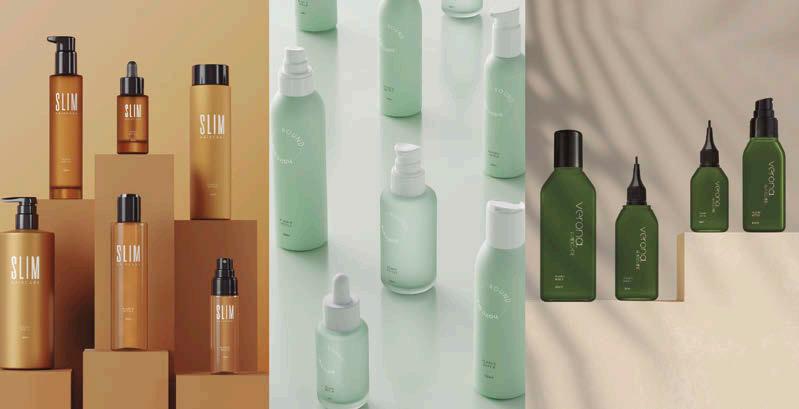
03.
Lumson amplía su portfolio con tres líneas dedicadas al mundo del cuidado del cabello, ofreciendo un servicio completo 'llave en mano' que incluye frascos, sistemas dosificadores, decoración y accesorios. Slim, Verona y Round son tres colecciones integrales para el cuidado del cabello, con 19 soluciones disponibles en varios tamaños. Slim se compone de 9 botellas diferentes de 30 a 400ml y disponibles en varios materiales (vidrio, PET, PE). Con soluciones inspiradas en el minimalismo en tamaños que van de 50 a 200ml, Verona es la línea para el cuidado del cabello compuesta por botellas de PETG combinadas con sistemas de dosificación tradicionales y de precisión para aplicaciones profesionales en el cuero cabelludo. Round es la línea vinculada a la naturaleza, con acabado suave al tacto, perfiles redondeados y una amplia gama de sistemas de dosificación y materiales a elegir (vidrio y PE). Los frascos, que van de 50 a 250ml, están diseñados para productos que se aplican directamente sobre el cabello o el cuero cabelludo.
Lumson expands its portfolio with three lines dedicated to the hair care world and to do it by providing a complete 'turnkey' service including bottles, dispensing systems, decoration and accessories.
Slim, Verona and Round are three comprehensive hair care collections, with 19 solutions available in various sizes. Slim comprises 9 different bottles ranging from 30 to 400ml and available in various materials (glass, PET, PE). Featured minimalism-inspired solutions in sizes ranging from 50 to 200ml, Verona is the hair care line consisting of PETG bottles to be paired with both traditional and precision dispensing systems for professional applications focused on the scalp.Round is the line dedicated to products more closely linked to nature, with a soft-touch finish, rounded profiles and a wide range of dispensing systems and materials to choose from (glass and PE). The bottles, ranging from 50 to 250ml, are designed for products that are applied directly to the hair or scalp.
47 NOTICIAS I NEWS
04.
Coverpla y Estal sellan una alianza comercial Coverpla and Estal seal a commercial alliance
Coverpla y Estal unen fuerzas para compartir sus experiencia en marketing y comercial. En el marco de su enfoque selectivo, Coverpla, que ofrece una amplia gama de botellas y tapones, ha optado por trabajar con Estal.
Coverpla mejora su colección de fragancias para el hogar con una gama de difusores en varios tamaños (de 100 a 750ml) y accesorios asociados. Los tarros para velas de base gruesa con un tacto premium completan la colección. En cuanto a cosmética, tres nuevos productos se incorporan al catálogo de Coverpla: dos tarros

MALA es is Bericap Aluminium GmbH

Tres años después de la adquisición por parte de Bericap, MALA, especialista en cierres de aluminio con sede en Turingia, cambia su nombre.
MALA VerschlussSysteme GmbH es ahora Bericap Aluminium GmbH. El nuevo nombre aclara la afiliación e integración de la empresa con el Grupo Bericap, fabricante líder mundial de cierres de plástico y aluminio. Con MALA, Bericap complementó su gama de productos con tapones de aluminio para bebidas y aceite de cocina.
de 50ml y una botella de 30ml. Por último, la oferta olfativa se enriquece con el concepto Doble Alto de Estal.
Coverpla también mejora su propuesta con tres botellas ligeras. Bandeau, Tote y Cloche se basan en Concept Bubble, con una base dentada tomada de la de las botellas de champán.
Coverpla and Estal join forces to share their marketing and commercial experience. As part of its selective approach, Coverpla, which offers a wide range of bottles and caps, has chosen to work with Estal.
Coverpla enhances its home fragrance collection with a range of diffusers in various sizes (from 100 to 750ml) and associated accessories. Thick-bottomed candle jars with a premium feel complete the collection. In terms of cosmetics, three new products have been added to the Coverpla catalogue: two 50ml jars and a 30ml bottle. Finally, the olfactory offering is enriched with Estal's Double Alto concept.
Coverpla also improves its proposal with three light bottles. Bandeau, Tote and Cloche are based on Concept Bubble, with a serrated base taken from that of champagne bottles.
06.
Berlin Packaging adquiere acquires Alpack Limited & Nest-Filler
Berlin Packaging ha adquirido Alpack Limited, una empresa familiar de packaging para el sector de la alimentación ubicada en Dublín (Irlanda). Alpack suministra una amplia gama de productos de packaging para alimentos, como botellas y tarros de vidrio, tapas de rosca, cajas de cartón y envases ecológicos.
Berlin Packaging también ha comprado Nest-Filler PKG Co., Ltd., una empresa proveedora de packaging en plástico y cristal, para productos de belleza y cosméticos, fundada en 2003 por Steve Shim y situada cerca de Seúl (Corea del Sur).
Berlin Packaging has acquired Alpack Limited, a family-owned food packaging company located in Dublin (Ireland). Alpack supplies a wide range of food packaging products, such as glass bottles and jars, screw caps, cardboard boxes and eco-friendly packaging.
05.
Three years after the acquisition by Bericap, MALA, a specialist in aluminum closures based in Thuringia, changes its name. MALA Verschluss-Systeme GmbH is now Bericap Aluminum GmbH. The new name clarifies the company's affiliation and integration with the Bericap Group, the world's leading manufacturer of plastic and aluminum closures. With MALA, Bericap complemented its product range with aluminum closures fordrinks and cooking oil.
Berlin Packaging has also purchased Nest-Filler PKG Co., Ltd., a plastic and glass packaging supplier focused on beauty and cosmetics products, founded in 2003 by Steve Shim and located near Seoul, South Korea. ).
48 NOTICIAS I NEWS
Más de 250 empresas en el encuentro con SCRAPs
More than 250 companies at the meeting with SCRAPs
Aprovechar las sinergias entre los diferentes sistemas de gestión de envases industriales y comerciales, así como garantizar el cumplimiento de la ley de forma eficiente por parte de las empresas que pongan envases en el mercado, han sido algunas de las principales conclusiones del primer encuentro empresarial con la presencia de todos los Sistemas Colectivos de Responsabilidad Ampliada del Productor (SCRAPs) centrados en envases, celebrado en Valencia.
Un encuentro clave con más de 250 asistentes, coorganizado por el Clúster de Innovación de Envase y Embalaje junto con la Confederación Empresarial de la Comunitat Valenciana (CEV), que ha servido para aclarar dudas sobre estos sistemas y las obligaciones que tienen las empresas para cumplir con las nuevas regulaciones de la gestión de residuos de envases industriales y comerciales establecidas por el Real Decreto de Envases.
Los representantes de los SCRAPs ENVALORA, ECOVIDRIO, GENCI, IMPLICA, PROCIRCULAR, ECOLEC ENVASES, PUNTO GRETA, RECYCLIA, AEVAE, CARTÓN CIRCULAR, SIGFITO y ECOEMBES presentaron sus propuestas en una interesante jornada.
En la apertura, Inmaculada García, directora general de la CEV, explicó que el papel de la Confederación es ayudar a las empresas en sus reivindicaciones y en cumplir las nuevas obligaciones. Amaya Fernández, presidenta del Clúster, destacó la oportunidad de contar con todos los SCRAPs especializados en envase de España en una misma sesión y reivindicó la importancia del sector del packaging en la economía circular. Por su parte, Javier Sendra, de la Generalitat Valenciana, enfatizó el papel fundamental de los SCRAPs en la gestión sostenible de residuos.
Diálogo Intraclúster
Establecer de forma clara de quién es la responsabilidad sobre las certificaciones y los marcados de los materiales reciclados ante la nueva normativa europea sobre el plástico es una de las grandes peticiones que profesionales
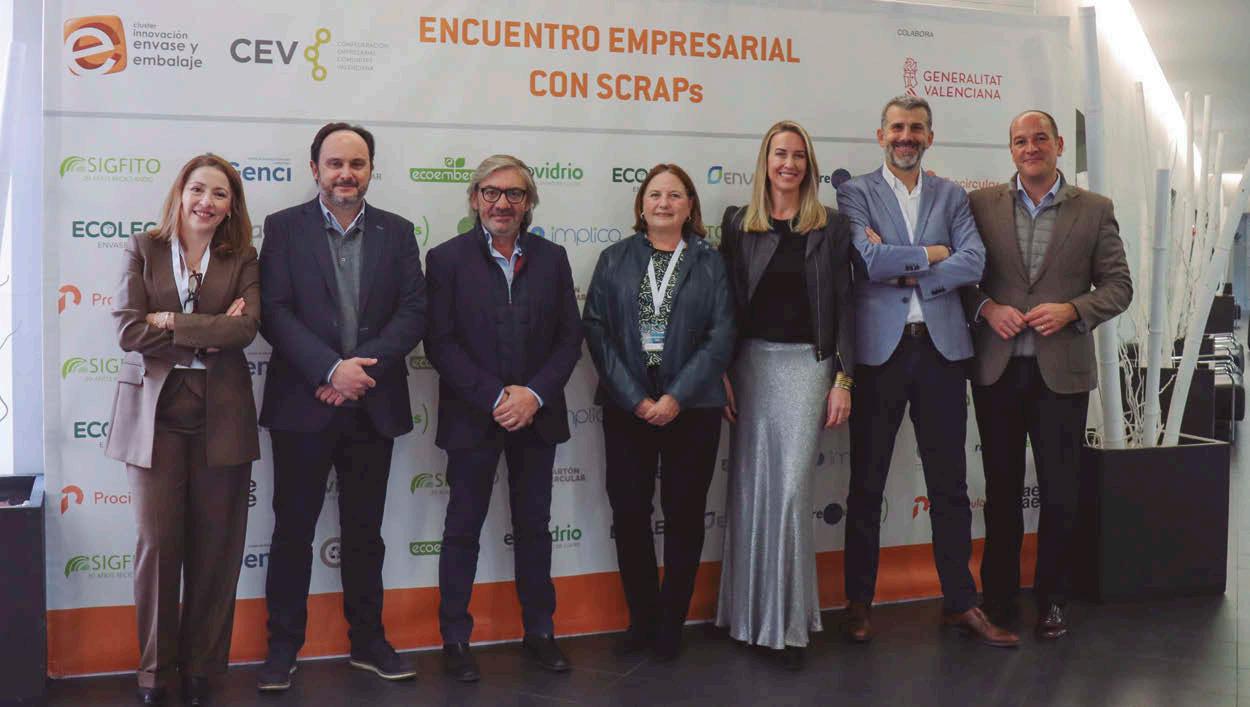
del sector del packaging han reclamado en el trascurso del último Diálogo Intraclúster de 2023 organizado por el Clúster de Innovación en Envase y Embalaje.
En esta ocasión, en la cita participaron María Rodríguez, Global Sustainability Manager del Grupo Lantero, y Sandra Ramos, investigadora y técnico de reciclado mecánico en Aimplas, además de Jesús Pérez, director del Clúster de Envase.
Taking advantage of the synergies between the different industrial and commercial packaging management systems, as well as guaranteeing efficient compliance with the law by companies that put packaging on the market, have been some of the main conclusions of the first business meeting with the presence of all the Collective Systems of Extended Producer Responsibility (SCRAPs) focused on packaging, held in Valencia.
A key meeting with more than 250 attendees, co-organized by the Packaging Innovation Cluster together with the Business Confederation of the Valencian Community (CEV), which has served to clarify doubts about these systems and the obligations that companies have to comply with. with the new regulations for the management of industrial and commercial packaging waste established by the Royal Packaging Decree.
The representatives of the SCRAPs ENVALORA, ECOVIDRIO, GENCI, IMPLICA, PROCIRCULAR,
ECOLEC ENVASES, PUNTO GRETA, RECYCLIA, AEVAE, CARTÓN CIRCULAR, SIGFITO and ECO-
EMBES presented their proposals in an interesting day.
At the opening, Inmaculada García, general director of the CEV, explained that the role of the Confederation is to help companies in their demands and in complying with the new obligations. Amaya Fernández, president of the Cluster, highlighted the opportunity to have all the SCRAPs specialized in packaging in Spain in the same session and claimed the importance of the packaging sector in the circular economy. For his part, Javier Sendra, from the Generalitat Valenciana, emphasized the fundamental role of SCRAPs in sustainable waste management.
Intracluster Dialogue
Clearly establishing who is responsible for the certifications and marking of recycled materials in light of the new European regulations on plastic is one of the great requests that professionals in the packaging sector have demanded during the last Intra-Cluster Dialogue in 2023. organized by the Container and Packaging Innovation Cluster.
On this occasion, María Rodríguez, Global Sustainability Manager of the Lantero Group, participated in the event; and Sandra Ramos, researcher and mechanical recycling technician at Aimplas, as well as Jesús Pérez, director of the Packaging Cluster.
49 NOTICIAS I NEWS
07.
08.
Rafesa presenta presents Zen y and Mystic
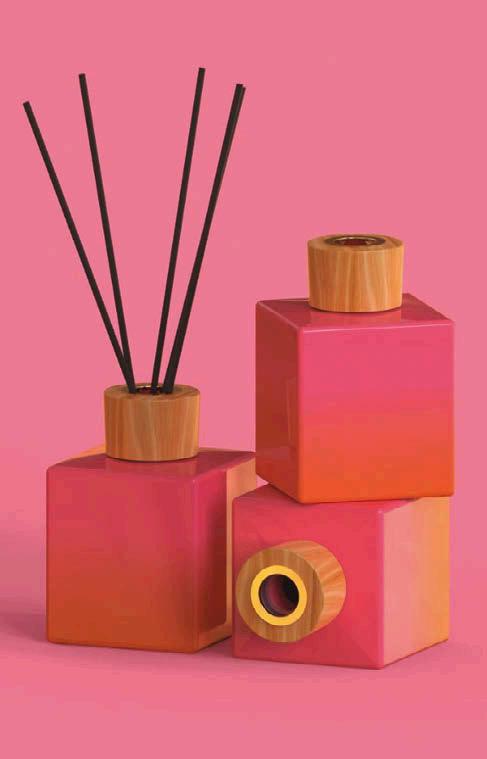
Estos frascos de vidrio representan una fusión armoniosa de sofisticación y versatilidad. These glass jars represent a harmonious fusion of sophistication and versatility.

Zen y Mystic de Rafesa se han diseñado para elevar las experiencias sensoriales en el hogar.
Zen: «donde la sofisticación encuentra su forma zen», con su silueta cilíndrica y una línea recta en el hombro, encarna la expresión de la sofisticación. Disponible en tamaños de 100ml, 250ml y 500ml, en este frasco de vidrio cada detalle ha sido considerado para realzar la singular belleza de las fragancias que alberga.
Mystic: «fuerza y versatilidad en cada ángulo Mystic», con su forma cúbica perfectamente esculpida, aporta una presencia distintiva y una fuerza sutil a las fragancias del hogar. De gran versatilidad, está disponible en tamaños que van desde 100ml hasta 1.000ml, representando la colección más completa de fragancias para el hogar de Rafesa hasta la fecha.
Rafesa ofrece opciones de personalización con tapones difusores de madera o aluminio, diseñados para integrarse perfectamente con la estética de Zen o resaltar la fuerza de Mystic.
Zen and Mystic by Rafesa have been designed to elevate sensory experiences in the home.
Zen: “where sophistication finds its Zen form”, with its cylindrical silhouette and a straight line on the shoulder, it embodies the expression of sophistication. Available in 100ml, 250ml and 500ml sizes, every detail in this glass bottle has been considered to enhance the unique beauty of the fragrances it houses.
Mystic: “strength and versatility at every angle Mystic,” with its perfectly sculpted cubic shape, brings a distinctive presence and subtle strength to home fragrances. Highly versatile, it is available in sizes ranging from 100ml to 1,000ml, representing Rafesa's most complete collection of home fragrances to date.
Rafesa offers customization options with wooden or aluminum diffuser caps, designed to perfectly integrate with the aesthetics of Zen or highlight the strength of Mystic.
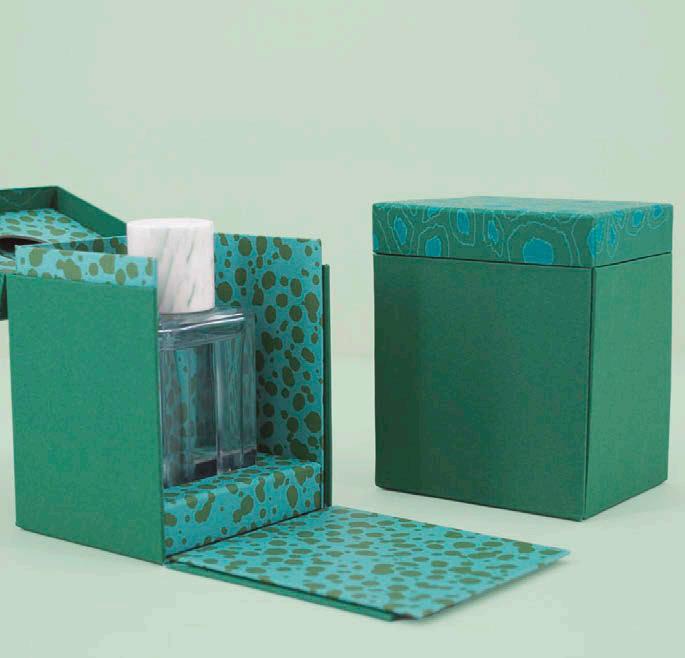
Flip-Lid-Box se puede reciclar.
Flip-Lid-Box can be recycled.
Rissmann Flip-Lid-Box
La caja Flip-Lid-Box, fabricada en papel y cartón FSC, sin imán, fue diseñada por Rissmann DesignLab para ofrecer una experiencia de unboxing memorable. Al abrirse, la tapa, que está conectada a la base, libera el panel frontal de la caja, dejando al descubierto el producto, también resaltado por la configuración interior decorada, que incluye una cuña extraíble. El contraste de los patrones de la parte frontal se consigue mediante un proceso de grabado láser. Su color depende del papel seleccionado. La decoración interior se imprime sin aceite mineral mediante un barniz al agua.
Flip-Lid-Box se puede producir tanto en Europa como en Asia. La calidad de su fabricación la convierte en una caja para conservar durante mucho tiempo. The Flip-Lid-Box, made of FSC paper and cardboard, without magnet, was designed by Rissmann DesignLab to offer a memorable unboxing experience. When opened, the lid, which is connected to the base, releases the front panel of the box, revealing the product, also highlighted by the decorated interior configuration, which includes a removable wedge.
The contrast of the patterns on the front is achieved through a laser engraving process. Its color depends on the paper selected. The interior decoration is printed without mineral oil using a water-based varnish.
Flip-Lid-Box can be produced in both Europe and Asia. The quality of its manufacturing makes it a box to keep for a long time.
09.
50 NOTICIAS I NEWS
10. 11.
La gama de envases blíster sostenibles kpNext® se amplía
The range of kpNext® sustainable blister packaging expands
Elaborado en polietileno, kpNext® RB2 de Klöckner Pentaplast (kp) es un avance en películas de blíster farmacéutico sostenibles y reciclables. Diseñado como una alternativa más ecológica, garantiza la seguridad de los medicamentos y minimiza el impacto ambiental, ya que la reciclabilidad del polietileno reduce los residuos plásticos y contribuye a una economía circular.
Entre los beneficios de la película blíster farmacéutica kpNext® RB2, destaca que ha sido diseñada para ser reciclable en la corriente RIC 2. Además, es una solución “plug and play” que no ralentizará las líneas de producción y tiene tanto más claridad óptica como mayores capacidades de termoformado en comparación con otras soluciones de poliolefina. Su barrera de humedad equivale a 90g de PVdC. Made from polyethylene, kpNext® RB2
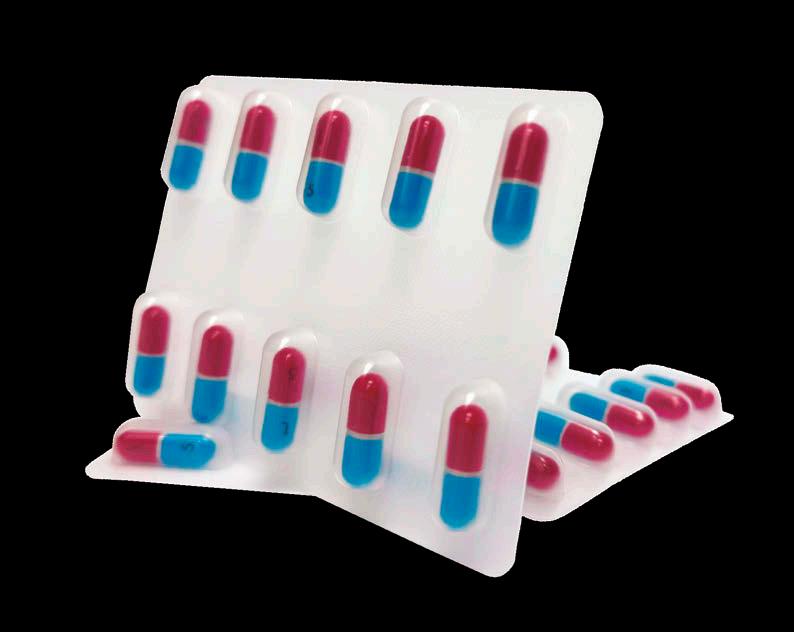
from Klöckner Pentaplast (kp) is a breakthrough in sustainable and recyclable pharmaceutical blister films. Designed as a greener alternative, it guarantees the safety of medications and minimizes the environmental impact, since the recyclability of polyethylene reduces plastic waste and contributes to a circular economy.
Among the benefits of kpNext® RB2 pharmaceutical blister film, it stands out that it has been designed to be recyclable in the RIC 2 stream. In addition, it is a “plug and play” solution that will not slow down production lines and has both more optical clarity and Higher thermoforming capabilities compared to other polyolefin solutions. Its moisture barrier is equivalent to 90g of PVdC.
TMI y Tecnotrans Bonfiglioli, nuevo socio y partner tecnológico de Barcelona Packaging Hub TMI and Tecnotrans Bonfiglioli, new partner and technological partner of Barcelona Packaging Hub

Barcelona Packaging Hub ha anunciado la incorporación de TMI como nuevo socio y Tecnotrans Bonfiglioli como partner tecnológico, ampliando así su alcance y capacidad para ofrecer soluciones innovadoras en el sector del envase y embalaje. La red de empresas líderes en maquinaria y tecnología sigue trabajando de forma conjunta para proporcionar una solución global a las necesidades de la industria del packaging.
TMI se distingue como fabricante de maquinaria de ensacado, paletizado y enfardado, desde la fase de diseño de final de línea hasta su puesta en marcha. Su enfoque se dirige hacia proyectos tailor made, que se ajustan a las necesidades particulares de cada empresa. Además, con un firme compromiso hacia la innovación, TMI incorpora los últimos avances en automatización industrial para fortalecer las líneas de ensacado.
Por su parte, Tecnotrans Bonfiglioli, con más de 60 años de experiencia, se especializa en el diseño, fabricación y distribución de una amplia gama de motorreductores, sistemas de accionamiento y reductores planetarios. Su enfoque se orienta hacia soluciones personalizadas y versátiles, que no solo optimizan la instalación, sino que también garantizan eficiencia y seguridad en los procesos industriales.
Barcelona Packaging Hub has announced the incorporation of TMI as a new partner and Tecnotrans Bonfiglioli as a technological partner, thus expanding its reach and capacity to offer innovative solutions in the packaging sector. The network of leading companies in machiner y and technology continues to work together to provide a global solution to the needs of the packaging industry.
TMI distinguishes itself as a manufacturer of bagging, palletizing and wrapping machinery, from the end-of-line design phase to commissioning. Its focus is directed towards tailor-made projects, which adjust to the particular needs of each company. Additionally, with a firm commitment to innovation, TMI incorporates the latest advances in industrial automation to strengthen bagging lines.
For its part, Tecnotrans Bonfiglioli, with more than 60 years of experience, specializes in the design, manufacture and distribution of a wide range of gearmotors, drive systems and planetary reducers. Its approach is oriented towards personalized and versatile solutions, which not only optimize the installation, but also guarantee efficiency and safety in industrial processes.
kpNext® RB2 de Klöckner Pentaplast (kp).
51 NOTICIAS I NEWS
Berlin Packaging presenta nuevas propuestas Spirits
Berlin Packaging
presents
Berlin Packaging presenta sus novedades de 2024 para licores, soluciones diseñadas con el apoyo de Studio One Eleven, la división de diseño e innovación de la empresa.
Expresión del eslogan «Modern classic reinterpreting timeless shapes», las 4 nuevas botellas Seraphine, Stone, Lumiere y Alchemist exaltan los destilados con formas innovadoras, que reinterpretan algunas de las propuestas clásicas del packaging para este sector.
Con un diseño elegante, Seraphine reinterpreta las formas clásicas dedicadas al ron y al whisky con una silueta renovada. Con una forma retro y con un toque inesperado que anima a usar el producto, Stone se caracteriza por un cuello extremadamente corto que hace que su estructura sea única.


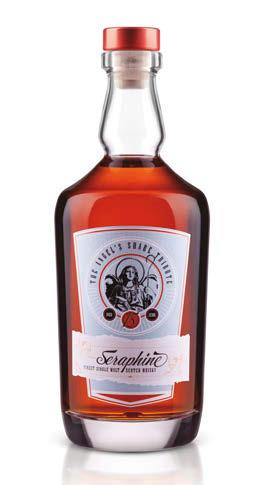
Eviosys presenta su centro de I+D
Eviosys presents its R&D center
new Spirits proposals
Diseñada para muchas variedades de whisky, ron y otros destilados, Lumiere es una botella versátil, compuesta por un cuello llamativo y un cuerpo cilíndrico que ofrece un amplio espacio para colocar la etiqueta. Cierra la nueva colección la elegancia atemporal de Alchemist, cuya forma se inspira en los recipientes químicos.
Berlin Packaging presents its 2024 innovations for the world of spirits solutions designed with the support of Studio One Eleven, the company's design and innovation division.
Expression of the slogan "Modern classic reinterpreting timeless shapes", the 4 new bottles Seraphine, Stone, Lumiere and Alchemist exalt the spirits with innovative shapes, which reinterpret some of the classic packaging proposals for this sector.

Eviosys ha presentado su centro de investigación y desarrollo (I+D) de Wantage (Reino Unido). El centro se sitúa a la vanguardia de la investigación, el desarrollo tecnológico y el diseño de sostenibles. Cuenta con un laboratorio de ensayo de materiales y componentes de última generación, una zona dedicada al procesado de alimentos y una planta piloto de fabricación.
Eviosys has presented its research and development (R&D) center in Wantage (United Kingdom). The center is at the forefront of research, technological development and sustainable design. It has a state-of-the-art materials and components testing laboratory, an area dedicated to food processing and a pilot manufacturing plant.
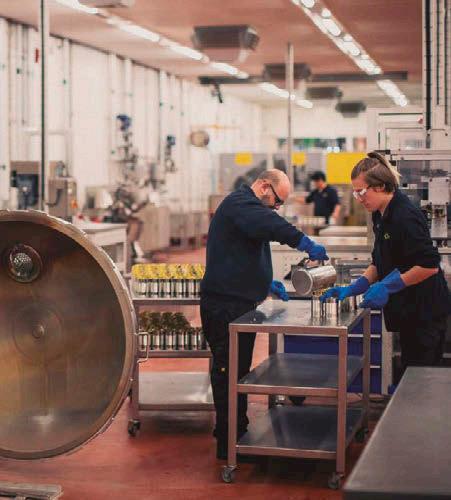
With an elegant design, Seraphine reinterprets the classic shapes dedicated to rum and whiskey with a renewed silhouette. With a retro shape and an unexpected touch that encourages using the product, Stone is characterized by an extremely short neck that makes its structure unique.
Designed for many varieties of whiskey, rum and other spirits, Lumiere is a versatile bottle, composed of a striking neck and a cylindrical body that offers ample space for label placement. The new collection closes with the timeless elegance of Alchemist, whose shape is inspired by chemical containers.
14.
Heidelberg & Salinas Packaging Group

Roland Krapp y Raul Blanco, CEO y Key Account Manager de Heidelberg Spain respectivamente, hicieron entrega a Roberto López, Carmen Yago y Sara Colomina, COO, directora de Marketing y Manager Assistant de Salinas Packaging Group, de tres certificados de compensación de CO2 que correspondían a la nueva Speedmaster XL106-8+LYY-1+L, la Supreasetter 106 y el Dual Cassette Loader 106. Roland Krapp and Raul Blanco, CEO and Key Account Manager of Heidelberg Spain respectively, presented Roberto López, Carmen Yago and Sara Colomina, COO, Marketing Director and Assistant Manager of Salinas Packaging Group, with three CO2 compensation certificates that corresponded to the new Speedmaster XL106-8+LYY-1+L, the Supreasetter 106 and the Dual Cassette Loader 106.
12. 13.
52 NOTICIAS I NEWS
Vidrala gives the 'Master Glass Design Contest' Awards
15. Vidrala entrega los Premios ‘Master Glass Design Contest’
Vidrala, empresa líder en la fabricación de envases de vidrio, llevó a cabo la entrega de premios del concurso Master Glass Design Contest en el Museo Nacional de Artes Decorativas (MNAD) el 17 de enero. MasterGlass Design Contest fue creado en 2015, con el propósito de fomentar el talento y las nuevas ideas en el ámbito del diseño de envases de vidrio. En su octava edición el jurado ha nombrado ganador al proyecto AURUM de Sara Díez, destacando el resultado del producto final, sabiendo representar claramente dos elementos, la almazara y la oliva, dejando claro que se trata de un envase de aceite de oliva. También resaltaron la correcta elección de la paleta de colores así como el esfuerzo realizado en la fabricación de varios prototipos haciendo uso de la impresión 3D. A este le siguen los diferentes accésits otorgados en 2023, siendo los destinatarios del reconocimiento los proyectos ORO LÍQUIDO de Raquel Luna, LUMBRE de Tania Moreno, SEGNA 71 de Alberto Mora y GOTOIL de Ana Carvalho.
Previamente a la entrega de premios, tuvo lugar una mesa redonda titulada «Los concursos de diseño como parte de la formación académica». Durante la celebración del acto también se anunció la apertura de la convocatoria para la novena edición del concurso, que renueva su imagen apostando por un concepto limpio y sostenible de diseño industrial. Todos los estudiantes que quieran participar tendrán hasta el próximo 14 de junio de 2024 para presentar las candidaturas de sus proyectos.
Vidrala adquiere Vidroporto Grupo Vidrala ha comunicado la adquisición de la totalidad del capital social de Vidroporto S.A. por un valor de 384 millones de euros. Esta cifra incluye la participación minoritaria adquirida a comienzos de año, la restante participación mayoritaria adquirida ahora y la deuda asumida en la compañía brasileña.
Vidroporto, con su filial Indústria Vidreira do Nordeste, es un productor brasileño de envases de vidrio. Opera dos plantas de alta calidad tecnológica ubicadas en Porto Ferreira, estado de São Paulo, y Estância, estado de Sergipe.
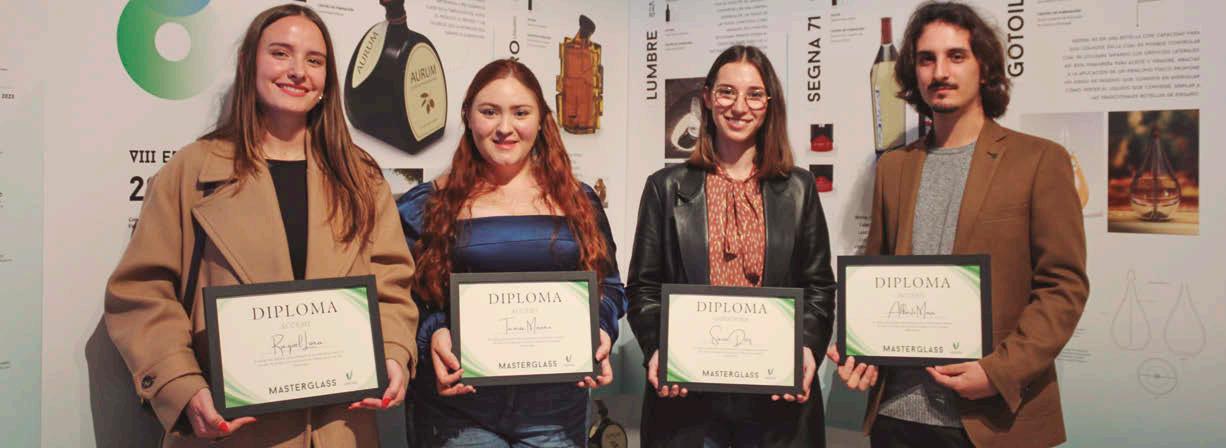
Vidrala, a leading company in the manufacturing of glass containers, held the awards ceremony for the “Master Glass Design Contest” at the National Museum of Decorative Arts (MNAD) on January 17. “MasterGlass Design Contest” was created in 2015, with the purpose of promoting talent and skills. new ideas in the field of glass container design.
The projects presented in this competition stand out for their focus on design, sustainability and innovation.
In its eighth edition, the jury has named the “AURUM” project by Sara Díez the winner, highlighting the result of the final product, knowing how to clearly represent two elements, the oil mill and the olive, making it clear that it is an olive oil container. They also highlighted the correct choice of the color palette as well as the effort made in the manufacture of several prototypes using 3D printing. This is followed by the different second prizes awarded in 2023, with the recipients of the recognition being the projects “ORO LÍQUIDO” by Raquel Luna, “LUMBRE” by Tania Moreno, “SEGNA 71” by Alberto Mora and “GOTOIL” by Ana Carvalho.
Prior to the awards ceremony, a round table entitled “Design competitions as part of academic training” took place. During the event, the opening of the call for entries for the ninth edition of the competition was also announced, which renews its image by betting on a clean and sustainable concept of industrial design. All students who want to participate will have until June 14, 2024 to submit applications for their projects.
Vidrala acquires Vidroporto
Vidrala Group has announced the acquisition of

the entire share capital of Vidroporto S.A. worth 384 million euros. This figure includes the minority stake acquired at the beginning of the year, the remaining majority stake acquired now and the debt assumed in the Brazilian company. Vidroporto, with its subsidiary Indústria Vidreira do Nordeste, is a Brazilian producer of glass containers. It operates two high-quality technological plants located in Porto Ferreira, state of São Paulo, and Estância, state of Sergipe.

53 NOTICIAS I NEWS
Instalaciones productivas de Vidroporto en Vidroporto production facilities in Porto Ferreria.
16.
Cómo reducir la huella de carbono de los envases
How to reduce the carbon footprint of packaging

El revestimiento superficial de la caja puede ser kraftliner blanco estucado o sin estucar. The surface coating of the box can be coated or uncoated white kraftliner..
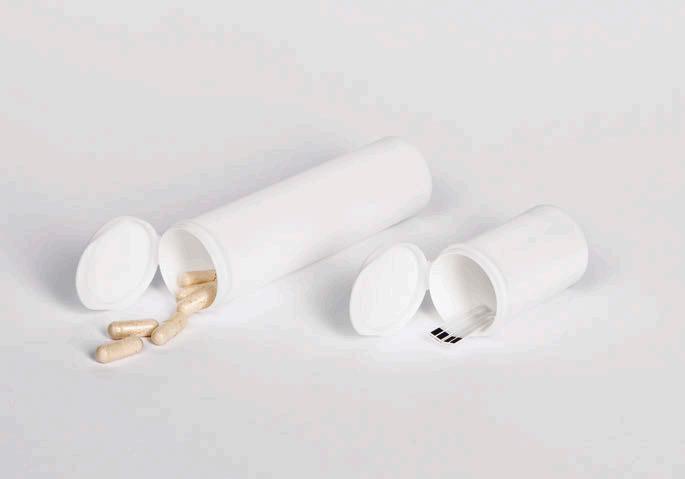
HAT®-B Handy Active Tube, diseñado para reducir el uso de plástico designed to reduce plastic use.
Innovación Colorcon innovation
Colorcon, líder mundial en el desarrollo y suministro de sistemas de recubrimiento de películas, excipientes especiales y envases funcionales para las industrias de la salud, muestra su última innovación.
Metsä Board presenta una nueva solución de caja de regalo que utiliza menos material y tiene una menor huella de carbono que las cajas rígidas tradicionales. El envase consta de una base y una tapa independientes hechas de microcanal.
También mostró la solución de envasado de fibra Muoto™ 3D, que puede prensarse para obtener formas complejas redondeadas, con un prototipo de envase diseñado conjuntamente por Metsä Spring y Fiskars Group y que ha encontrado su forma en el Centro de Excelencia de Metsä Board, combinando el envase interior 3D con una envoltura de cartón.
Metsä Group invierte en la startup FineCell. Metsä Group ha realizado su segunda inversión sueca en FineCell (FineCellOx AB), desarrollador de la tecnología FineCell y productor de polvo de celulosa seca CellOx. La tecnología FineCell puede convertir la pulpa en un biomaterial de valor agregado que puede usarse tanto en polvo como en solución acuosa, es decir, un hidrogel. Estos pueden reemplazar a los químicos de origen fósil en productos de belleza y atención médica, así como en pinturas. Filial del KTH Royal Institute of Technology en Estocolmo, Suecia, FineCel prevé tener el diseño de su planta de demostración a finales de 2024, una producción de prueba a mayor escala durante 2025 y una producción comercial completa en 2027.
Metsä Board introduces a new gift box solution that uses less material and has a lower carbon footprint than traditional rigid boxes. The packaging consists of a separate base and lid made of microchannel. It also showcased the Muoto™ 3D fiber packaging solution, which can be pressed into complex rounded shapes, with a packaging prototype co-designed by Metsä Spring and Fiskars Group and which has found its form at the Metsä Board Center of Excellence, combining The 3D inner packaging with a cardboard wrapper.
Metsä Group invests in the startup FineCell. Metsä Group has made its second Swedish investment in FineCell (FineCellOx AB), developer of FineCell technology and producer of CellOx dry cellulose powder. FineCell technology can convert pulp into a value-added biomaterial that can be used in both powder and aqueous solution, i.e. a hydrogel. These can replace fossil-based chemicals in beauty and healthcare products, as well as paints. A subsidiary of the KTH Royal Institute of Technology in Stockholm, Sweden, FineCel plans to have its demonstration plant designed by the end of 2024, larger-scale trial production during 2025 and full commercial production in 2027.
HAT®-B Handy Active Tube es un envase diseñado para controlar eficazmente la transmisión de vapor de humedad (MVTR), centrándose en aplicaciones de diagnóstico donde la precisión de uso es fundamental. Las áreas de aplicación específicas incluyen tiras diagnósticas, suplementos dietéticos como probióticos, medicamentos sensibles a la humedad y dispositivos de inhalación.
Incorpora un sistema absorbente ajustable. La tapa abatible ofrece fácil acceso y mantiene un sello hermético para salvaguardar la integridad del producto, con la ubicación estratégica del desecante en la base del tubo para que permanezca más cerca de los componentes reactivos de las tiras reactivas. Colorcon, a global leader in the development and supply of film coating systems, specialty excipients and functional packaging for the healthcare industries, showcases its latest innovation.
HAT®-B Handy Active Tube is a container designed to effectively control moisture vapor transmission (MVTR), focusing on diagnostic applications where precision of use is essential. Specific application areas include diagnostic strips, dietary supplements such as probiotics, moisture-sensitive medications, and inhalation devices. It incorporates an adjustable absorbent system. The flip-top cap offers easy access and maintains an airtight seal to safeguard product integrity, with the desiccant strategically placed at the base of the tube so it remains closer to the reagent components of the test strips.
17.
54 NOTICIAS I NEWS
18.
Nuevos productos de Cosmogen New Cosmogen products
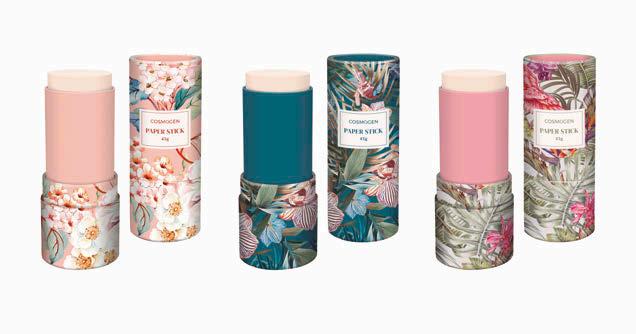
Cosmogen ha presentado sus novedades en Paris Packaging Week. Paper Stick 5ml: compuesto por un 77 % de papel, destaca por su patentado sistema de rotación que consiste en girar la parte inferior del tubo para revelar la fórmula en barra, sin contacto con los dedos. El tubo baja, no la fórmula sube. Personalizable y reciclable.
Tuft Tube ⌀ 19mm: este tubo ofrece una aplicación suave en áreas específicas. Se adapta especialmente a fórmulas de maquillaje y para el cuidado de la piel como contorno de ojos.
Baby Roller: rodillo de bolsillo para el automasaje según demanda. Bola de Acero Inoxidable 316 L ⌀15 mm. Cuerpo y asa en PP. Oro amarillo y oro rosa para Squeeze’n Fresh removible: aplicador para ojos que destaca por su su diseño, su punta extraíble, reemplazable con una recarga y separable al final de su vida, su sistema de cierre on/off patentado que permite la distribución (on), la aplicación y la limpieza (off). El tubo y el tapón están disponibles en plástico reciclado. La novedad en PCD son los 3 acabados: plata, oro amarillo y oro rosa. Recambio Maxi Squeeze: los packs de la gama Maxi Squeeze’n ahora tienen su recambio, adaptable a todos los aplicadores.
Cosmogen has presented its new products at Paris Packaging Week. Paper Stick 5ml: composed of 77% paper, it stands out for its patented rotation system that consists of rotating the bottom of the tube to reveal the stick formula, without contact with your fingers. The tube goes down, not the formula goes up. Customizable and recyclable.
Tuft Tube ⌀ 19mm: This tube offers smooth application to targeted areas. It is especially suited to makeup and skin care formulas such as eye contour.
Baby Roller: pocket roller for on-demand self-massage. 316 L Stainless Steel Ball ⌀15 mm. Body and handle in PP.
Yellow gold and rose gold for removable Squeeze'n Fresh, eye applicator: stands out for its design, its removable tip, replaceable with a refill and separable at the end of its life, its patented on/off closure system that allows distribution (on), application and cleaning (off). The tube and cap are available in recycled plastic. New in PCD are the 3 finishes: silver, yellow gold and rose gold.
Maxi Squeeze Refill: The Maxi Squeeze'n range packs now have their refill, adaptable to all applicators.
El Clúster Disseny canaliza 3 proyectos innovadores colaborativos
The Design Cluster channels 3 innovative collaborative projects

Barcelona centre de Disseny, a través del Clúster Disseny, moviliza 664.000 euros de la línea de ayudas para Agrupaciones Empresariales Innovadoras (AEI) para proyectos de innovación. La fundación liderará uno de los proyectos, Long Life Textiles, y participará en otros dos, In-caf y Vivarium.
Long Life Textiles es un proyecto de investigación industrial para el diseño, desarrollo y prototipado de un modelo que permita alargar la vida útil de los productos textiles para el hogar, en concreto de alfombras, gracias al uso de tecnologías disruptivas de la industria 4.0 y IoT. Vivarium nace como proyecto de investigación para analizar el impacto y la afectación de la calidad del ambiente interior en los espacios educativos.
In-caf es un proyecto de investigación industrial que nace para ser el punto de partida de una nueva disrupción en el sector de cafeteras automáticas como electrodoméstico del hogar, aplicando los principios del ecodiseño y la economía circular. Además de generar conocimientos para crear la cafetera automática libre de cápsulas con dimensiones más reducidas del mercado, la idea es desarrollar una plataforma de predicción de demandas a través de tecnología de Inteligencia Artificial y Machine Learning que permita ofrecer siempre café fresco. Barcelona Centre de Diseny, through the Design Cluster, mobilizes 664,000 euros from the aid line for Innovative Business Groups (AEI) for innovation projects. The foundation will lead one of the projects, Long Life Textiles, and will participate in two others, In-caf and Vivarium. Long Life Textiles is an industrial research project for the design, development and prototyping of a model that allows extending the useful life of home textile products, specifically carpets, thanks to the use of disruptive technologies from industry 4.0 and IoT. Vivarium was born as a research project to analyze the impact and affectation of the quality of the indoor environment in educational spaces.
In-caf is an industrial research project that was created to be the starting point of a new disruption in the automatic coffee machine sector as a home appliance by applying the principles of ecodesign and the circular economy. In addition to generating knowledge to create the smallest capsule-free automatic coffee machine on the market, the idea is to develop a demand prediction platform through Artificial Intelligence and Machine Learning technology that allows us to always offer fresh coffee.
19. 55 NOTICIAS I NEWS
20.
Fedrigoni adquiere una participación en SharpEnd / io.tt
Fedrigoni acquires a stake in SharpEnd / io.tt
El Grupo Fedrigoni ha anunciado la adquisición, a través de una ampliación de capital, de una participación minoritaria en SharpEnd / io.tt, la empresa de consultoría y soluciones IoT dirigida por Cameron Worth, CEO y fundador. Esta operación consiste en una inversión inicial, con recorrido para adquirir la totalidad del capital en el largo plazo, y se enmarca en el nuevo programa de capital de riesgo corporativo que Fedrigoni ha puesto en marcha para identificar startups con las que acelerar su proceso de innovación y adquisición de nuevas tecnologías.
SharpEnd se fundó en 2015 como la primera agencia de Internet de las cosas (IoT) del mundo, con la misión de ayudar a las marcas a desarrollar sus productos, el packaging y el compromiso de los clientes a través de soluciones conectadas, aprovechando una plataforma propia SaaS (software as a service) lanzada en 2019, llamada io.tt, que hoy gestiona miles de millones de puntos de contacto a través del packaging y la venta al por menor.
El Grupo Fedrigoni ha anunciado también la adquisición de Arjowiggins China, fabricante de papeles translúcidos empleados como sustitutos del plástico.
The Fedrigoni Group has announced the acquisition, through a capital increase, of a minority stake in SharpEnd / io.tt, the IoT solutions and consulting company led by Cameron Worth, CEO and founder. This operation consists of an initial investment, with a path to acquiring all the capital in the long term, and is part of the new corporate venture capital program that Fedrigoni has launched to identify startups with which to accelerate their innovation process. and acquisition of new technologies.
SharpEnd was founded in 2015 as the world's first Internet of Things (IoT) agency, with a mission to help brands develop their products, packaging and customer engagement through connected solutions, leveraging a platform own SaaS (software as a service) launched in 2019, called io.tt, which today manages billions of touchpoints across packaging and retail.

Koenig & Bauer y and Durst Group
se unen en una joint venture join forces in
joint venture
Koenig & Bauer y Durst Group se han comprometido a desarrollar aún más su capacidad de I+D en la empresa conjunta que establecieron hace casi cinco años para aprovechar las importantes oportunidades en los segmentos del cartón plegable y el cartón ondulado. Las empresas matrices de Koenig & Bauer Durst GmbH ampliarán sus operaciones en Radebeul, Alemania. Koenig & Bauer and Durst Group have committed to further developing their R&D capabilities in the joint venture they established almost five years ago to capitalize on significant opportunities in the folding carton and corrugated carton segments. The parent companies of Koenig & Bauer Durst GmbH will expand their operations in Radebeul, Germany.

21.
22.
The Fedrigoni Group has also announced the acquisition of Arjowiggins China, a manufacturer of translucent papers used as plastic substitutes.
Sleever compra
la mayoría del capital de buys the majority of the capital of Helios Packaging
La empresa familiar Helios Packaging, hasta ahora dirigida por su fundador Frédéric Boehlen, está especializada en sleeves retráctiles y estirables, máquinas para aplicarlos en los envases y decoración de sleeves para los mercados de alimentación, bebidas, limpieza y cosmética. Con sede en Wommelgem, en las afueras de Amberes (Bélgica), esta empresa familiar creada en 2009 factura 5 millones de euros y emplea a veinte personas. La adquisición forma parte de la estrategia de Sleever® y completa sus operaciones europeas, ofreciendo nuevas perspectivas en la zona del Benelux.
The family business Helios Packaging, until now run by its founder Frédéric Boehlen, specializes in shrink and stretchable sleeves, machines for applying them to packaging and sleeve decoration for the food, beverage, cleaning and cosmetics markets. Based in Wommelgem, on the outskirts of Antwerp (Belgium), this family business created in 2009 has a turnover of 5 million euros and employs twenty people. The acquisition is part of Sleever®'s strategy and completes its European operations, offering new perspectives in the Benelux area.
Instalaciones en Radebeul. Facilities in Radebeul.
56 NOTICIAS I NEWS
23. Ocho envases y embalajes españoles ganan los WorldStar Awards 2024 Eight Spanish packaging win the WorldStar Awards 2024
Con ocho galardones, España se mantiene, un año más, entre los diez países con más trofeos en los WorldStar Awards 2024, el concurso mundial de packaging que organiza anualmente la World Packaging Organisation (WPO). Este certamen ha premiado un total de 214 trabajos de 38 países. En esta edición de los WorldStar Awards han participado un total de 435 trabajos de 41 países, que antes habían sido galardonados en certámenes reconocidos por la WPO que, en el caso de España, son los Premios Liderpack convocados por Graphispack Asociación y el salón Hispack de Fira de Barcelona. El país que más premios WorldStar ha obtenido ha sido Japón (28) seguido de Alemania (21) Australia y Nueva Zelanda (ANZ) –que se han presentado de forma conjunta– (16), Estados Unidos (12), Brasil y Austria (ambos con 11 cada uno), China, India, y República Checa junto a Eslovaquia (10) y Corea del Sur (9). El packaging español, igual que el pasado año, se mantiene en el octavo puesto en el ranking de distinciones. El top ten de la clasificación lo cierran Hungría (6), Líbano y Suráfrica (5).
Ganadores españoles
La empresa Smurfit Kappa ha sido la gran triunfadora con tres WorldStar por T9 E-Scooter Box un embalaje reutilizable para vehículos de movilidad personal enfocado al canal ecommerce; TUPack un estuche para la venta online de botelles de vino; y AgroLife® un papel 100 % biodegradable, reciclable y apto para el contacto con alimentos que se integra en las cajas y bandejas de cartón para el envasado
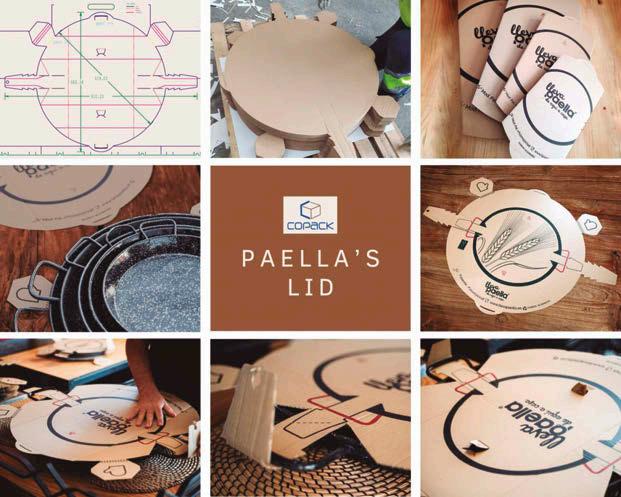
y transporte de frutas, retrasando su maduración y evitando mermas.
Han resultado ganadoras también la firma Copack por su tapa de cartón personalizable para el transporte de paellas; DS Smith Tecnicarton por un embalaje ligero de grandes dimensiones, 100 % de cartón, para chasis de vehículos como alternativa a otros metálicos o de madera; International Paper con Twin Pizza Box, un proyecto de optimización de la caja de pizza estándar para poder transportar dos pizzas en el mismo packaging; y Climesa, con su contenedor flexible reciclable rPET Vacsac fabricado a partir de 117 botellas de plástico reciclado.
Además, también ha sido galardonado GERnétic Case de Alzamora Carton Packaging, una lujosa y sostenible solución de embalaje esférico tridimensional realizada en cartón para la marca de belleza GERnétic y que participaba a través de los European Carton Excellence Awards, organizados por las asociaciones europeas Pro Carton y ECMA.
La entrega de trofeos tendrá lugar en Tailandia el 15 de junio de 2024 en ProPak Asia. With eight awards, Spain remains, once again, among the ten countries with the most trophies in the WorldStar Awards 2024, the global packaging competition organized annually by the World Packaging Organization (WPO). This contest has awarded a total of 214 works from 38 countries.
In this edition of the WorldStar Awards, a total of 435 works from 41 countries have participated, which had previously been awarded in competitions recognized by the WPO which, in the case of Spain, are the Liderpack Awards organized by the Graphispack Association and the Hispack show in Barcelona Fair.
The country that has obtained the most WorldStar awards has been Japan (28), followed by Germany (21), Australia and New Zealand (ANZ) – which have been presented jointly –(16), the United States (12), Brazil and Austria ( both with 11 each), China, India, and the Czech Republic along with Slovakia (10) and South Korea (9). Spanish packaging, like last year, remains in eighth place in the ranking of

distinctions. The top ten of the classification is closed by Hungary (6), Lebanon and South Africa (5).
Spanish winners
The company Smurfit Kappa has been the great winner with three WorldStars for T9 EScooter Box, a reusable packaging for personal mobility vehicles focused on the e-commerce channel; TUPack a case for the online sale of wine bottles; and AgroLife®, a 100% biodegradable, recyclable paper suitable for contact with food that is integrated into cardboard boxes and trays for packaging and transporting fruits, delaying their ripening and avoiding waste.
The company Copack has also won for its customizable cardboard lid for transporting paellas, DS Smith Tecnicarton for a large light packaging, 100% cardboard, for vehicle chassis as an alternative to other metal or wooden ones, International Paper with Twin Pizza Box, a project to optimize the standard pizza box to be able to transport two pizzas in the same packaging; and Climesa, with its Vacsac rPET recyclable flexible container made from 117 recycled plastic bottles.
In addition, Alzamora Carton Packaging's “GERnétic Case” has also been awarded, a luxurious and sustainable three-dimensional spherical packaging solution made of cardboard for the beauty brand GERnétic and which participated through the European Carton Excellence Awards organized by the European associations Pro Cardboard and ECMA.
The trophy presentation will take place in Thailand on June 15, 2024 at ProPak Asia.
57 NOTICIAS I NEWS
24.
Nace Mago - Linking Opportunities is born
Mago - Linking Opportunities es una nueva empresa especializada en facilitar maquinaria para la automatización de los procesos productivos, que busca soluciones a medida de cada cliente.
Fundada por Pol Marín y Álex González, ambos con experiencia en el sector del packaging tras su paso por el Packaging Cluster, MagoLinking Opportunities es una nueva iniciativa que busca «revolucionar el panorama industrial a través de un enfoque innovador en el modelo de negocio, dejando atrás la figura tradicional de intermediarios / representantes». Mago nace con la visión de representar los intereses y necesidades de sus clientes frente a los proveedores de soluciones de automatización, reimaginando el modelo de negocio tradicional, infundiendo un aire fresco y un enfoque más centrado en el cliente en cada paso de la cadena.
Sus servicios están diseñados para optimizar los flujos de trabajo, aumentar la productividad y brindar mayor flexibilidad a través de la implementación de tecnologías avanzadas.
Siguen una metodología personalizada para cada cliente, con un servicio integral. En resumen, Mago ofrece una solución completa y personalizada a las empresas
que buscan automatizar sus procesos productivos.
Mago - Linking Opportunities is a new company specialized in providing machinery for the automation of production processes, which seeks solutions tailored to each client.
Founded by Pol Marín and Álex González, both with experience in the packaging sector after their time in the Packaging Cluster, MagoLinking Opportunities is a new initiative that seeks to "revolutionize the industrial landscape through an innovative approach to the business model , leaving behind the traditional figure of intermediaries / representatives. Mago was born with the vision of representing the interests and needs of its clients in front of automation solution providers, reimagining the traditional business model, infusing a fresh air and a more customer-centric approach in each step of the chain.

Its services are designed to optimize workflows, increase productivity and provide greater flexibility through the implementation of advanced technologies. They follow a personalized methodology for each client, with a comprehensive service.
In summary, Mago offers a complete and personalized solution to companies seeking to automate their production processes.
Salinas Packaging Group adquiere la unidad productiva de acquires the production unit of Estuchería Plegable de Arteos S.L.

25.
Salinas Packaging Group ha formalizado la adquisición de la unidad productiva de Estuchería Plegable de Arteos Digital S. L. La incorporación supone un nuevo paso en su plan de reestructuración e inversiones que se prevé concluir a lo largo de 2024. Con sede en Torrejón de Ardoz (Madrid) y especializada en servicios de comunicación on y off line, Arteos consta de tres ramas de actividad; la unidad productiva de Estuchería Plegable se dedica al packaging.
Con esta integración, Salinas Packaging Group se abre a una nueva categoría de producto, el estuche plegable, un área que le permitirá acceder a mercados como el farmacéutico o el alimentario. La unidad de negocio está dotada de todos los procesos productivos necesarios para la producción de estuches plegables: impresión OffetUVI, troqueladoras, plastificadora y plegadoras. Asímismo, su sistema integral de gestión incluye las certificaciones ISO9001, ISO 14001, FSC y PEFC. Con esta operación, Salinas Packaging Group suma más de medio centenar de personas cualificadas, 3.000m2 de superficie productiva a los 35.000 ya existentes y 6M€ de facturación. Se estima que la facturación del grupo se sitúe en torno a los 50 millones a fin de 2024.
Salinas Packaging Group has formalized the acquisition of the Estuchería Plegable production unit of Arteos Digital S. L. The incorporation represents a new step in its restructuring and investment plan that is expected to be completed throughout 2024. Headquartered in Torrejón de Ardoz (Madrid) and specialized in on and off line communication services, Arteos consists of three branches of activity; The production unit of Estuchería Plegable is dedicated to packaging. With this integration, Salinas Packaging Group opens up to a new product category, the folding case, an area that will allow it to access markets such as pharmaceuticals or food. The business unit is equipped with all the production processes necessary for the production of folding cases: Offet-UVI printing, die-cutting machines, laminating machines and folding machines. Likewise, its comprehensive management system includes ISO9001, ISO 14001, FSC and PEFC certifications. With this operation, Salinas Packaging Group adds more than fifty qualified people, 3,000m2 of productive surface to the 35,000 already existing, and €6M in turnover. It is estimated that the group's turnover will be around 50 million by the end of 2024.
58 NOTICIAS I NEWS
Pol Marín y Álex González.
26.
Palmarés de la XXX edición del premio ANUARIA
Winners of the XXX edition of the ANUARIA award
El premio ANUARIA, con una trayectoria de 30 ediciones, se ha consolidado como el premio nacional de diseño gráfico de referencia en España, al que presentan sus mejores obras los principales estudios de diseño, diseñadores y agencias de toda la geografía. Es un estándar de excelencia certificado por la Fundación Veredictas Internacional.
The ANUARIA award, with a history of 30 editions, has established itself as the leading national graphic design award in Spain, to which the main design studios, designers and agencies from all over the country present their best works. It is a standard of excellence certified by the Veredictas International Foundation.
Premios ANUARIA de ORO ANUARIA GOLD Awards
1. Premio ANUARIA al mejor anuncio publicado en la prensa
25 añadas - por Lles para Bodegas Familiares de Rioja en La Rioja
2. Premio ANUARIA a la mejor campaña de publicidad comercial
Kolapso: Elegir el Mañana - por Gu Design /LLYC para BBK fundación en Bilbao
3. Premio ANUARIA a la mejor campaña de interés social ‘A mí no me va a hacer nada’por Estudio Paparajote para Ayuntamiento de Cartagena en Cartagena (Región de Murcia)
4. Premio ANUARIA al mejor cartel Jazz San Javier - por Casau Estudio para Festival de Jazz de San Javier en Región de Murcia
5. Premio ANUARIA al mejor folleto, postal, flyer, etc.
Políptico de comunicación didáctica - por Mimografico: Estudio de Diseño para Ayuntamiento de Arahal en Sevilla
6. Premio ANUARIA al mejor catálogo Carta de Valores - por Estudio Linea para Euskadi Gastronomika en Euskadi
7. Premio ANUARIA al mejor diseño de una pieza de autopromoción Work in progress 2023 - por Worköholics España para Worköholics en Bilbao
9. Premio ANUARIA al mejor diseño de una publicación periódica (revista, periódico, etc.) Revista Zaragoza Joven - por Detalier estudio
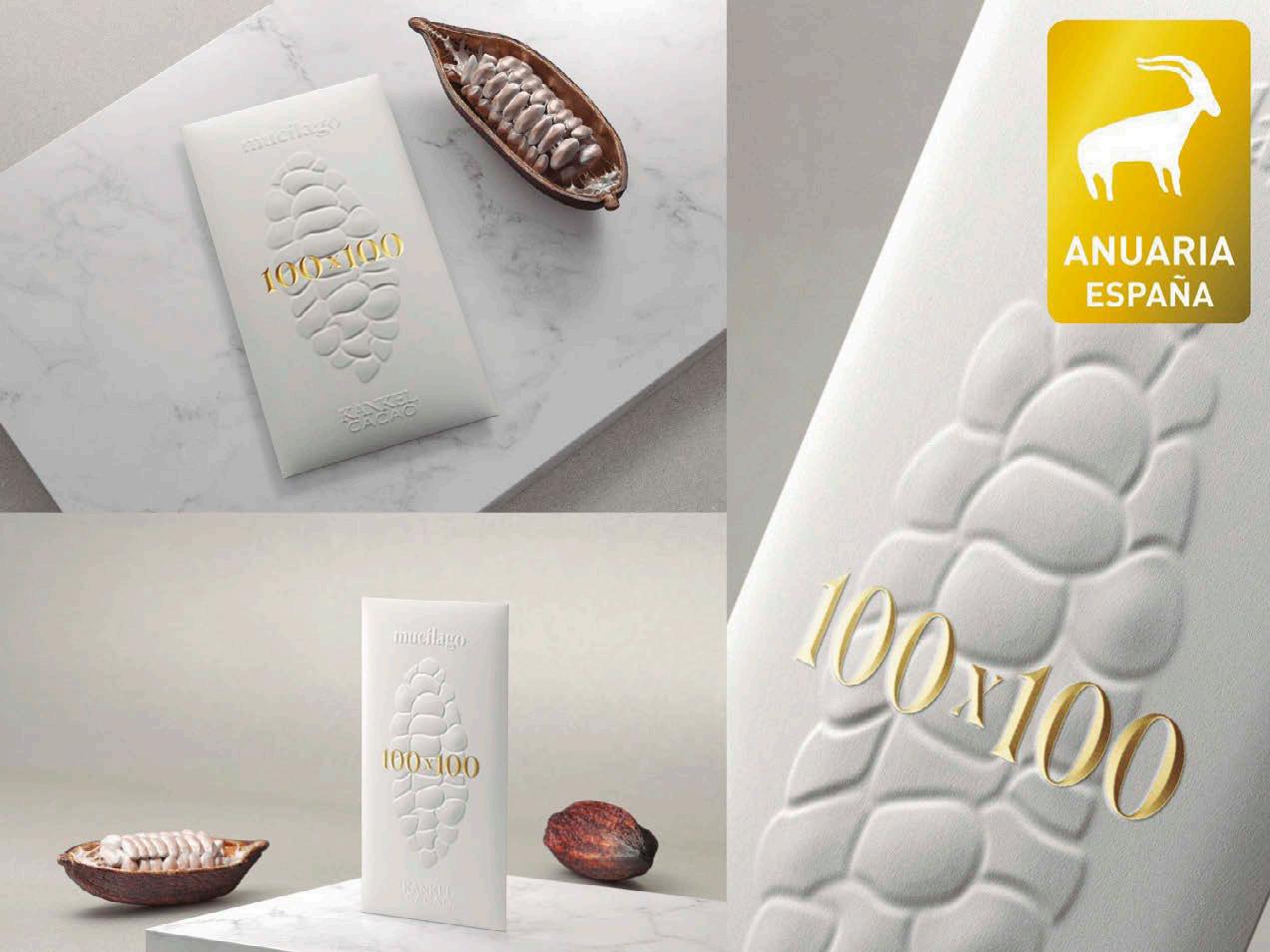
creativo para Ayuntamiento de Zaragoza
10. Premio ANUARIA al mejor diseño de una publicación editorial
Markus Linnenbrink. Flamigloveanddestiny por Dardo España para Fundación DIDAC en Santiago de Compostela
11. Premio ANUARIA a la mejor cubierta de un libro. Markus Linnenbrink. Flamigloveanddestiny - por Dardo España para Fundación DIDAC
12. Premio ANUARIA a la mejor memoria o balance. Memoria de Actividad 2022 R4 Banco por Mr Gutenberg para Renta4 Banco en España
13. Premio ANUARIA a la mejor ilustración Jazz San Javier por Casau Estudio
15. Premio ANUARIA a la mejor tipografía Altar Typeface por Alucina para Finausa en Barcelona
16. Premio ANUARIA al mejor logotipo de un producto o servicio.
Gamba Roja de Almería por Humad para ASOPESCA en Almería
17. Premio ANUARIA al mejor naming de un producto o servicio. Linatura por Clara Xarrié
Studio para Linatura
18. Premio ANUARIA al mejor Programa de Identidad Corporativa Hijos de Rivera por Atrevia Comunicacion, S.L.U. para Yarza Twins en Madrid
19. Premio ANUARIA al mejor packaging Mucílago, la pureza del cacao, por TSMGOThe show must go on
20. Premio ANUARIA al mejor sitio web Pinea por Microbio Comunicación para Pinea en Internacional
21. Premio ANUARIA al mejor diseño de una aplicación, APP ZEID Fest App por Worköholics para Guuk en Bilbao
22. Premio ANUARIA a la mejor campaña de publicidad en medios digitales Next Generation
Es tu momento por Mutta estudio España para Gobierno de Cantabria
23. Premio ANUARIA-Pro al mejor trabajo o proyecto de estudios realizado por un estudiante de último curso de diseño. (Incripción reducida) ‘Puntada i Creuada’ por Àngels Villegas
24. Premio ANUARIA en la Miscelánea Diex Design Fest por usuario.studio
59 NOTICIAS I NEWS
Premio ANUARIA al mejor packaging ANUARIA Award for the best packaging Mucílago, la pureza del cacao the purity of cocoa, TSMGO - The show must go on
27.
AINIA y and REDIT Ventures crean create FIBTRAY Solutions
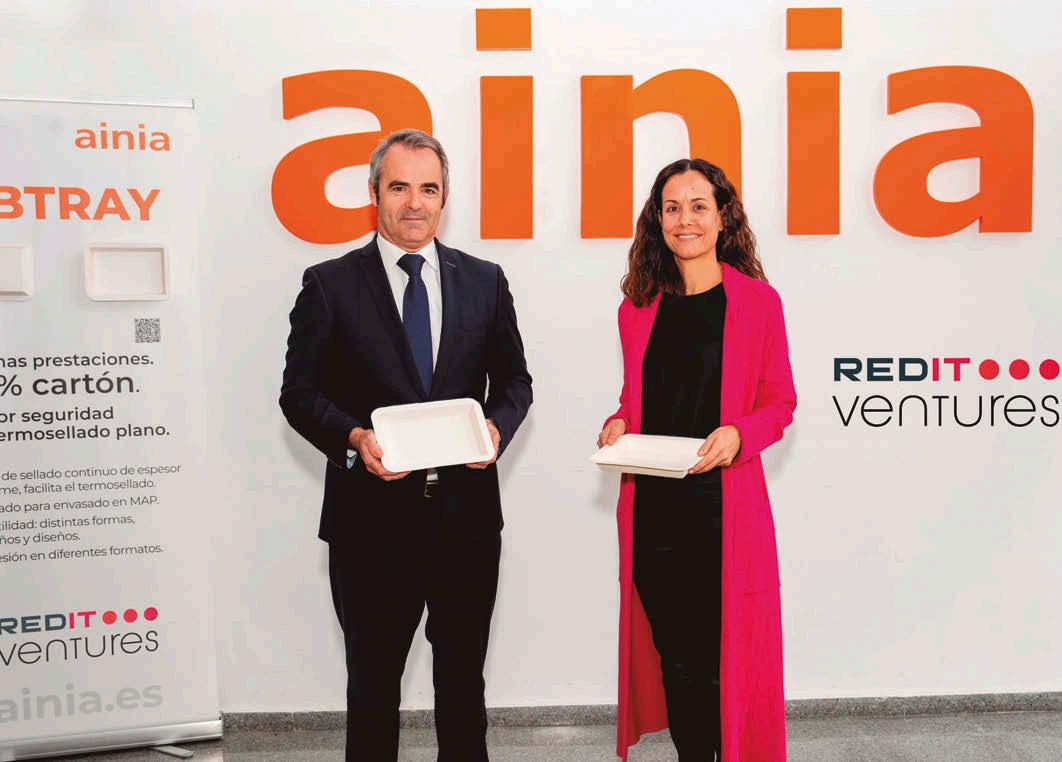
AINIA y REDIT Ventures, vehículo de inversión especializado promovido por los once institutos tecnológicos de REDIT (Red de Institutos Tecnológicos de Valencia), crean la nueva compañía de base tecnológica FIBTRAY Solutions.
La empresa diseñará y fabricará envases de cartón laminado que permiten su cierre hermético por termosellado, aptos para el envasado de alimentos en atmósferas modificadas. Esta solución tecnológica, desarrollada por AINIA, está protegida por una patente internacional del centro tecnológico.
Se trata de una alternativa a los envases de plástico, que permite mejorar las propiedades de soluciones similares basadas en consumibles celulósicos, así como su integración en líneas de producción preexistentes a un precio competitivo.
FIBTRAY es una solución en línea con las tendencias en el mercado del packaging, un ámbito marcado por la legislación europea sobre minimización del plástico de un solo uso, así como la búsqueda de reciclabilidad de los materiales y la creciente demanda de envases sostenibles.
AINIA and REDIT Ventures, a specialized investment vehicle promoted by the eleven technological institutes of REDIT (Network of Technological Institutes of Valencia), create the new technology-based company FIBTRAY Solutions. The company will design and manufacture laminated cardboard containers that allow their hermetic closure by heat sealing, suitable for food packaging in modified atmospheres. This technological solution, developed by AINIA, is protected by an international patent of the technological center.
It is an alternative to plastic packaging, which allows the properties of similar solutions based on cellulosic consumables to be improved, as well as its integration into pre-existing production lines at a competitive price. FIBTRAY is a solution in line with trends in the packaging market, an area marked by European legislation on the minimization of single-use plastic, as well as the search for recyclability of materials and the growing demand for sustainable packaging.

CCL y Henkel ganan el premio AWA por su tecnología sleeve sostenible CCL and Henkel win AWA Award for sustainable sleeve technology
CCL Label y Henkel ganaron el premio AWA (Alexander Watson Associates) al mejor diseño sostenible de su clase por la botella de suavizante Vernel de Henkel. El envase, realizado con materiales de botellas de PET 100 % reciclados y una funda de poliolefina de baja densidad, está diseñado para una fácil clasificación y reciclaje. Henkel se asoció con CCL, quien desarrolló una nueva generación de material de poliolefina flotante para sleeves retráctiles llamado EcoFloat®. Mientras que el material más pesado de la botella se hunde hasta el fondo de los baños de agua, el material ligero de la funda flota hasta la parte superior, incluso con diseños completamente impresos. Esto permite una separación limpia del PET y el material de la etiqueta.
CCL Label and Henkel won the AWA (Alexander Watson Associates) award for best-in-class sustainable design for Henkel's Vernel fabric softener bottle.
The packaging, made from 100% recycled PET bottle materials and a low-density polyolefin sleeve, is designed for easy sorting and recycling. Henkel partnered with CCL, who developed a new generation of floating polyolefin material for shrink sleeves called EcoFloat®. While the heavier bottle material sinks to the bottom of water baths, the lighter sleeve material floats to the top, even with fully printed designs. This allows for clean separation of the PET and label material.
Gonzalo Belenguer, consejero de REDIT Ventures, y Cristina Del Campo, directora general de AINIA. Gonzalo Belenguer, Director of REDIT Ventures, and Cristina Del Campo, General Manager of AINIA.
28. 60 NOTICIAS I NEWS
Best in Class Sustainable Packaging.
Laboratorios Forenqui traslada sus retos en envase al sector
Laboratorios Forenqui transfers its packaging challenges to the sector
En el 72 Desayuno del Clúster de Innovación en Envase y Embalaje, Laboratorios Forenqui, compañía con más de 30 años de experiencia en el sector de la higiene y la cosmética y propietaria de las marcas Anian y Foresan, destacó aspectos como la reducción del peso o de los colores y la sencillez como algunos de sus principales retos en materia de packaging.
Eva Martínez, directora de compras en Forenqui, señaló que sus retos se centran en la reciclabilidad de los envases, una oportunidad de mejorar la eficiencia en la compra y en el abastecimiento de sus clientes.
Sandra Piqueras, directora de marketing en Forenqui, explicó la trayectoria de la compañía y sus áreas de negocio, cuyos resultados les ha permitido contar con una capacidad de producción de 100 millones de productos anuales.
También intervino Joaquín Sánchez, Project Manager de Ângela Impact Economy, Grupo ATTRIM, y se presentó al nuevo socio simpatizante del Clúster, Tintas Arzubialde.
At the 72nd Breakfast of the Packaging In-
novation Cluster, Laboratorios Forenqui, a company with more than 30 years of experience in the hygiene and cosmetics sector and owner of the Anian and Foresan brands, highlighted aspects such as weight reduction or colors and simplicity as some of its main challenges in terms of packaging.
Eva Martínez, purchasing director at Forenqui, pointed that her challenges focus on the recyclability of packaging, an opportunity to improve efficiency in purchasing and supplying her clients.
Sandra Piqueras, marketing director at Forenqui, explained the company's history and its business areas, the results of which have allowed them to have a production capacity of 100 million products annually.

Ecogots duplica su facturación hasta 2,5M€
Ecogots doubles its turnover to €2.5M
Ecogots ha alcanzado en 2023 un volumen de ventas de 2,5 millones de euros, cifra que duplica la facturación del año pasado (1,2M €).
En el transcurso del año, Ecogots ha producido un total de 200 toneladas de vasos a partir de la cáscara de arroz del Delta de l’Ebre, material patentado por la propia compañía bajo el nombre Oryzite®. Gracias a esta fórmula, ha logrado ahorrar más de 120 toneladas de plástico en sus procesos de fabricación.
Ecogots ha colaborado con empresas organizadoras de eventos, como el Sónar 2023, el Festival de Sitges o el Mercat Medieval de Vic, y con cadenas de restauración y cafeterías que buscan opciones más sostenibles.
Joaquín Sánchez, Project Manager of Ângela Impact Economy, ATTRIM Group, also participated and introduced himself to the new sympathetic partner of the Cluster, Tintas Arzubialde.
29.
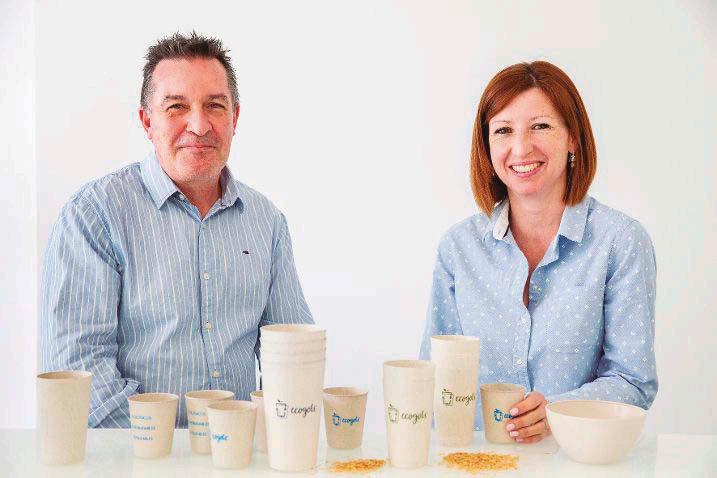
Tras 15 años de investigación, Ecogots vio la luz finalmente en 2020 y se sitúa como la única empresa en Europa en producir vasos a partir de Oryzite®. Los Ecogots incorporan un 60 % de cáscara de arroz en sustitución del polipropileno. Así, no solo se ahorra un elevado porcentaje de plástico, sino que los vasos son altamente reutilizables, incluso antes de su reciclado.
Ecogots has reached a sales volume of 2.5 million euros in 2023, a figure that doubles last year's turnover (€1.2M).
Over the course of the year, Ecogots has produced a total of 200 tons of glasses from rice husk from the Ebre Delta, a material patented by the company itself under the name Oryzite®. Thanks to this formula, it has managed to save more than 120 tons of plastic in its manufacturing processes. Ecogots has collaborated with companies organizing events, such as Sónar 2023, the Sitges Festival or the Mercat Medieval de Vic, and with restaurant chains and cafes that are looking for more sustainable options.
30.
After 15 years of research, Ecogots finally saw the light in 2020 and is the only company in Europe to produce glasses from Oryzite®. Ecogots incorporate 60% rice husk to replace polypropylene. Thus, not only is a high percentage of plastic saved, but the cups are highly reusable, even before recycling.
Joan Cristina y Elisabet Zaragoza son los artífices de Ecogots. Joan Cristina and Elisabet Zaragoza are the creators of Ecogots.
61 NOTICIAS I NEWS
31.
Aptar Beauty lanza su nuevo servicio integrado launches its new integrated service: Turnkey Solutions by Aptar™
Con esta oferta desplegada en Europa, Oriente Medio y África, Aptar Beauty apoya a las marcas de belleza desde el diseño del producto (incluida la formulación avanzada) hasta el lanzamiento. Con el lanzamiento de Turnkey Solutions, Aptar Beauty añade nuevas opciones a su experiencia en llenado y distribución: formulaciones avanzadas, respaldadas por un laboratorio interno de última generación y una red de socios, y embalaje de calidad.
New Dawn. La nueva colección se fabrica en Francia y cumple con los estándares de belleza responsables, siendo libres de crueldad animal, veganos y basados en ingredientes naturales. Incluye:
BOOST ME UP, con un gel limpiador lechoso y un suero iluminador de piel AHA.
DROP ME UP, con aceites de albaricoque, frambuesa y baobab para el cuidado de la piel, el cabello y la barba.
FACE ME UP, con mascarilla purificante e hidratante para el rostro.
HAIR ME U,P con mascarilla calmante e hidratante para el cabello.
BUBBLE ME UP, con un gel activador hidratante y reconfortante.
With this offering deployed across Europe, the Middle East and Africa, Aptar Beauty supports beauty brands from product design (including advanced formulation) to launch. With the launch of Turnkey Solutions, Aptar Beauty adds new options to its filling and distribution expertise: advanced formulations, supported by a state-of-the-art in-house laboratory and partner network, and quality packaging.
New Dawn. The new collection is manufactured in France and meets responsible beauty standards, being cruelty-free, vegan and based on natural ingredients. Includes:

Nuevo dispensador Greenis® de Coradin
New Greenis® dispenser from Coradin
El dispensador Greenis® de Coradin está hecho con alto contenido de resina PCR PP y es RecyReady©, es decir reciclable (96 % de contenido de PP), y es recargable. Su aplicación intuitiva lo hace idóneo para productos de dermofarmacia para el cuidado de la piel, del cabello y el maquillaje. Diseñado lo más ligero posible, utilizando resinas posconsumo o materiales reciclables, el cuerpo es mate y el capuchón, brillante.
Coradin's Greenis® dispenser is made with high PCR PP resin content and is RecyReady©, meaning recyclable (96% PP content), and is refillable. Its intuitive application makes it ideal for dermopharmacy products for skin care, hair care and makeup. Designed as light as possible, using post-consumer resins or recyclable materials, the body is matte and the cap is glossy.

32.
BOOST ME UP, with a milky cleansing gel and AHA skin brightening serum.
DROP ME UP, with apricot, raspberry and baobab oils for skin, hair and beard care.
FACE ME UP, with a purifying and moisturizing mask for the face.
HAIR ME U,P with soothing and moisturizing hair mask.
BUBBLE ME UP, with a hydrating and comforting activating gel.
33.
Nuevos asociados en New associates at ASPACK
Los dos nuevos asociados son Cañapack y Policolor Offset. Cañapackes una empresa fundada en 2020, conformada con un equipo de más de 25 años de experiencia en el sector de materias primas (papel y cartón) y del área logística. Ofrecen productos fabricados 100 % de bagazo de caña de azúcar, un residuo agroindustrial, 1material con menos químicos, reciclable y compostable. Policolor Offset es una empresa creada en 1961 dedicada al packaging farmáceutico. En el año 2003, la empresa fue adquirida por el grupo LGR y en 2012 se ubicó en Barberà del Vallés. The two new partners are Cañapack and Policolor Offset. Cañapack is a company founded in 2020, made up of a team with more than 25 years of experience in the raw materials sector (paper and cardboard) and the logistics area. They offer products made from 100% sugarcane bagasse, an agro-industrial waste, a material with fewer chemicals, recyclable and compostable.
Policolor Offset is a company created in 1961 dedicated to pharmaceutical packaging. In 2003, the company was acquired by the LGR group and in 2012 it was located in Barberà del Vallés.
62 NOTICIAS I NEWS
Merck apuesta por la energía solar en todas sus plantas en España
Merck is committed to solar energy in all its plants in Spain

Merck inaugura una nueva instalación de placas solares en su planta biotecnológica de Tres Cantos (Madrid), que ya está operativa y es una muestra más de la apuesta de la compañía por la energía renovable como fuente para cubrir parte de la demanda eléctrica necesaria para el funcionamiento de sus plantas en España. El nuevo parque fotovoltaico tiene 2.750 m2 de extensión, genera 800MWh/año de electricidad renovable y evitará la emisión de 218 toneladas de CO2 al año.
Esa instalación se suma a la ya puesta en marcha en septiembre de la planta que la compañía tiene en Mollet del Vallès (Barcelona) y que
El proyecto de innovación colaborativa R3TORNADO, con la participación del Clúster Empresas Innovadoras Valle del Juguete (CEIV), Asociación de Investigación de la industria del Juguete conexas y afines (AIJU), Fundación IDONIAL, Acteco Productos y Servicios, S.L., Promak Selling Solutions, S.L. y el Centro Español de Plásticos (CEP), se encuentra en ejecución, con el objetivo de investigar sobre el ecosistema de reciclaje de residuos termoplásticos para su revalorización, como materia prima, en procesos avanzados de impresión 3D de gran formato y alta productividad.
El proyecto R3TORNADO pretende mejorar la utilización de materiales plásticos reciclados en procesos de fabricación aditiva, en concreto en el proceso de impresión 3D de gran formato, puesto que existen equipos que no dependen del filamento y trabajan directamente con formatos de material en pellets o granza.
está completamente operativa. Con una superficie de 10.600 m2, genera 2.800 MWh/año de electricidad renovable.
La compañía espera que, combinadas ambas infraestructuras, se generen alrededor de 3.600 MWh/año de electricidad renovable.
Merck inaugurates a new installation of solar panels at its biotechnology plant in Tres Cantos (Madrid), which is already operational and is another example of the company's commitment to renewable energy as a source to cover part of the electrical demand necessary for the operation of its plants in Spain. The new photovoltaic park has an area of 2,750 m2, generates 800MWh/year of renewable electricity and will avoid the emission of 218 tons of CO2 per year.
This installation is in addition to the one already commissioned in September of the plant that the company has in Mollet del Vallès (Barcelona) and which is fully operational. With an area of 10,600 m2, it generates 2,800 MWh/year of renewable electricity.
The company expects that, combined, both infrastructures will generate around 3,600 MWh/year of renewable electricity.

The R3TORNADO collaborative innovation project, with the participation of the Toy Valley Innovative Companies Cluster (CEIV), Related Toy Industry Research Association (AIJU), IDONIAL Foundation, Acteco Productos y Servicios, S.L., Promak Selling Solutions, S.L. and the Spanish Center for Plastics (CEP), is underway, with the aim of researching the recycling ecosystem of thermoplastic waste for its revaluation, as raw material, in advanced large-format, high-productivity 3D printing processes.
The R3TORNADO project aims to improve the use of recycled plastic materials in additive manufacturing processes, specifically in the large format 3D printing process, since there is equipment that does not depend on filament and works directly with pellet or pellet material formats.
El proyecto R3TORNADO investiga la reciclabilidad de residuos termoplásticos
The R3TORNADO project investigates the recyclability of thermoplastic waste
63 SOSTENIBILIDAD I SUSTAINABILITY
UPM Raflatac ya ha conseguido la certificación de todos sus papeles
UPM Raflatac has already achieved certification for all its papers

Todos los papeles obtenidos por UPM Raflatac, tanto si se utilizan como papel frontal o como soporte antiadherente en sus materiales de etiquetado, ahora están certificados bajo un esquema creíble de certificación forestal de terceros. Tener todos los papeles certificados es uno de los objetivos climáticos y de abastecimiento responsable de UPM Raflatac para 2030, que se ha conseguido con seis años de antelación. El entorno regulatorio en rápida evolución ejerce una presión cada vez mayor sobre las empresas para que mejoren la trazabilidad de sus materias primas, así como las prácticas de abastecimiento responsable. Al tener todos sus papeles certificados según los sistemas de certificación forestal FSC™ (FSC C012530), PEFC (PEFC/02-31-196) o respaldados por PEFC, UPM Raflatac puede ayudar a sus clientes a alcanzar sus objetivos de abastecimiento responsable.
All papers sourced by UPM Raflatac, whether used as face paper or as a non-stick backing in its label materials, are now certified under a credible third-party forestry certification scheme. Having all papers certified is one of UPM Raflatac's climate and responsible sourcing objectives for 2030, which has already been achieved six years in advance. The rapidly evolving regulatory environment is putting increasing pressure on companies to improve the traceability of their raw materials as well as responsible sourcing practices. By having all of its papers certified to the FSC™ (FSC C012530), PEFC (PEFC/02-31-196) or PEFC-endorsed forestry certification systems, UPM Raflatac can help its customers achieve their responsible sourcing goals.
Transformar residuos de piña, naranja y arroz en precursores de materiales de packaging biodegradables Transform pineapple, orange and rice waste into precursors for biodegradable packaging materials
Quinquennalis umbraculi iocari parsimonia sabuyrtes am
El centro tecnológico ITENE ha desarrollado procesos biotecnológicos de valorización de residuos y subproductos agroalimentarios (naranja, piña y cascarilla de arroz) para obtener ácidos orgánicos, que pueden emplearse como aditivos en la industria alimentaria y cosmética y como monómeros en la producción de plásticos biodegradables para el sector del packaging.
Estas investigaciones se han logrado en el marco del proyecto ESENCIAL 2023. Se han establecido procesos avanzados para la valorización de subproductos agroalimentarios con el propósito de generar ácidos orgánicos de gran calidad, incluidos el ácido láctico y el ácido succínico. Estos ácidos encuentran aplicación en el sector del envase y embalaje y tienen relevancia en la industria cosmética. Específicamente, el ácido láctico y el ácido succínico sirven como materias primas para la producción de ácido poliláctico (PLA) y poli(butilen-succinato) (PBS).
The ITENE technology center has developed biotechnological processes for the recovery of agri-food waste and by-products (orange, pineapple and rice husk) to obtain organic acids, which can be used as additives in the food and cosmetics industry and as monomers in the production of biodegradable plastics for the packaging sector.
These investigations have been achieved within the framework of the ES-
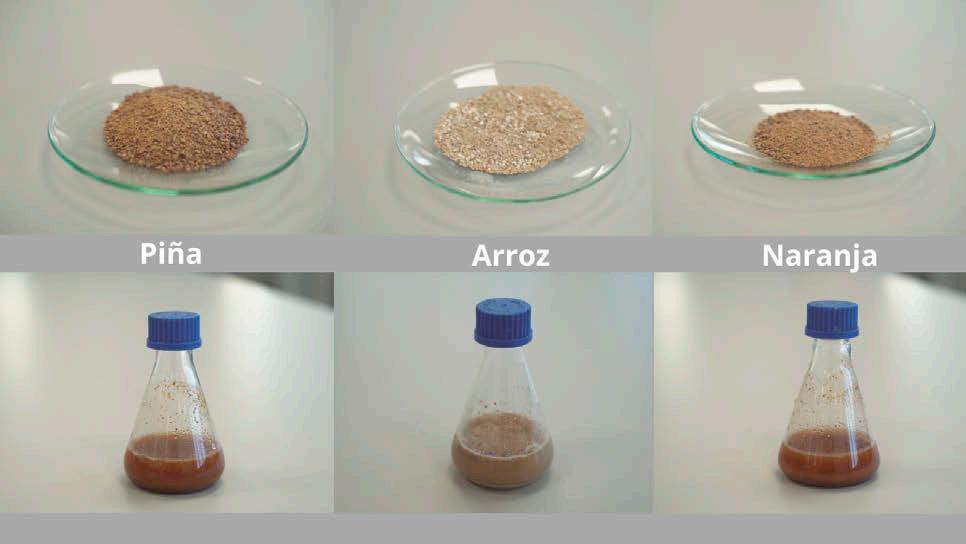
SENTIAL 2023 project. Advanced processes have been established for the valorization of agri-food by-products with the purpose of generating high quality organic acids, including lactic acid and succinic acid. These acids find application in the packaging sector and are relevant in the cosmetics industry. Specifically, lactic acid and succinic acid serve as raw materials for the production of polylactic acid (PLA) and poly(butylenesuccinate) (PBS).
00 SOSTENIBILIDAD I SUS- SOSTENIBILIDAD I SUSTAINABILITY
El MAPA y AINIA presentan las 10 startups de bioeconomía para su programa
StartBEC de aceleración tecnológica MAPA and AINIA present the 10 bioeconomy startups for their StartBEC technological acceleration program
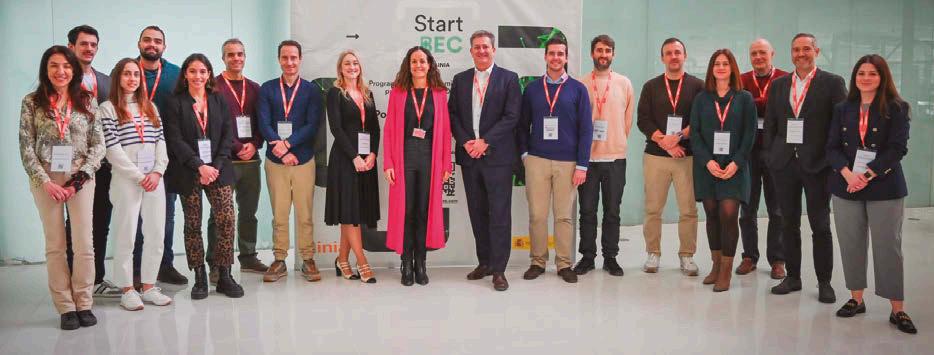
Bio2Coat, Bioprocesia Circular Solutions, Chlydro, Feltwood Ecomateriales, Galinsect, MolDrug AI Systems, Nature Biotechnology, Oscillum Biotechnology, Remolonas Foods y Väcka Queseria son las 10 startups seleccionadas, de entre las 52, que se han presentado al programa StartBEC. Un programa de impulso tecnológico a empresas emergentes españolas en el sector de la bioeconomía, fruto de la colaboración entre AINIA y el Ministerio de Agricultura, Pesca y Alimentación (MAPA). El programa proporcionará durante 6 meses a las 10 startup un servicio de mentorización y acompañamiento tecnológico individualizado y gratuito que incluye: la posibilidad de realizar ensayos o estudios piloto para el testado de procesos o productos; la realización de dinámicas de innovación con expertos para desarrollar aspectos tecnológicos de su modelo de negocio y bootcamp tecnológico en AINIA. Asimismo, las startup dispondrán de un servicio de vigilancia tecnológica personalizada y soporte en la identificación y participación en oportunidades de financiación a la I+D+i.
Las 10 startup seleccionadas por el programa StartBEC Bio2Coat lucha contra el desperdicio alimentario a través de su tecnología de recubrimientos y películas 100 % naturales y comestibles. El propósito de BioProcesia Circular Solutions es ayudar a las empresas de producción animal a alimentar a sus animales de una forma más natural y saludable a la vez que consciente y sostenible para el planeta.
Chlydroutiliza plantas acuáticas y microalgas para absorber CO2 atmosférico. La biomasa resultante se utiliza como materia prima para la producción de productos sostenibles, como biofertilizantes.
Feltwood Ecomateriales es una empresa creada para desarrollar e implementar un material de origen 100 % vegetal.
En Galinsect están especializados en la revalorización de residuos y subproductos mediante insectos.
MolDrug AI Systems está especializada en el campo de la química informática, la modelización molecular y la optimización computacional de compuestos químicos.
En Naturbec Biotechnology desarrollan formulaciones a partir de tres principios de origen natural: la microbiología, la botánica y las microalgas. Oscillum Biotechnology capitaliza la biotecnología para el desarrollo de sistemas de etiquetado inteligente.
Remolonas Foods conecta los excedentes desde el inicio de la cadena alimentaria con consumidores finales en cestas multiproducto. Finalmente, Väcka Quesería ofrece alternativas vegetales al queso.
Bio2Coat, Bioprocesia Circular Solutions, Chlydro, Feltwood Ecomateriales, Galinsect, MolDrug AI Systems, Nature Biotechnology, Oscillum Biotechnology, Remolonas Foods and Väcka Queseria are the 10 startups selected, among the 52, that have submitted to the StartBEC program. A technological promotion program for Spanish emerging companies in the bioeconomy sector, the result of collaboration between AINIA and the Ministry of Agriculture, Fisheries and Food (MAPA).
The program will provide the 10 startups with a free, individualized technological mentoring and support service for 6 months that includes: the possibility of carrying out trials or pilot studies to test processes or products; carrying out innovation dynamics with experts to develop technological aspects of its business model and technological bootcamp at AINIA. Likewise, startups will have a personalized technological surveillance service and support in identifying and participating in R&D&I financing opportunities.
Companies will also participate in technological missions to facilities, companies or projects highlighted in bioeconomy actions and in conferences for associated companies and AINIA clients.
The 10 startups selected by the StartBEC program
Bio2Coat fights food waste through its 100% natural and edible film and coating technology.
The purpose of BioProcesia Circular Solutions is to help animal production companies feed their animals in a more natural and healthy way that is conscious and sustainable for the planet.
Chlydrouses aquatic plants and microalgae to absorb atmospheric CO2. The resulting biomass is used as raw material for the production of sustainable products, such as biofertilizers.
Feltwood Ecomateriales is a company created to develop and implement a material of 100% plant origin.
At Galinsect they are specialized in the revaluation of waste and byproducts using insects.
MolDrug AI Systems is specialized in the field of computational chemistry, molecular modeling and computational optimization of chemical compounds.
At Naturbec Biotechnology they develop formulations based on three principles of natural origin: microbiology, botany and microalgae.
Oscillum Biotechnology capitalizes on biotechnology for the development of smart labeling systems.
Remolonas Foods connects surpluses from the beginning of the food chain with final consumers in multi-product baskets.
Finally, Väcka Quesería offers vegetable alternatives to cheese.
65 SOSTENIBILIDAD I SUSTAINABILITY
BIOPLAT lanza su spin-off BIOCIRC, Asociación Española de Biocircularidad
BIOPLAT launches its spin-off BIOCIRC, Spanish Association of Biocircularity
BIOPLAT, Plataforma Española Tecnológica y de Innovación en Biocircularidad, celebró el 2 de febrero su Asamblea anual, en la que se presentó la Asociación Española de Biocircularidad –BIOCIRC, spin-off de BIOPLAT, respaldada por administraciones públicas y el sector privado, y dedicada a trabajar en políticas, mercados y a fomentar la cooperación empresarial para fortalecer el desarrollo del sector en España.
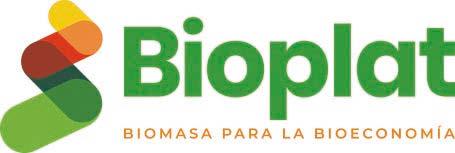
BIOPLAT, Spanish Technology and Innovation Platform in Biocircularity, held its annual Assembly on February 2, in which the Spanish Association of Biocircularity – BIOCIRC, spin-off of BIOPLAT, was presented, supported by public administrations and the private sector, and dedicated to working on policies, markets and promoting business cooperation to strengthen the development of the sector in Spain.
BIOPLAT se creó en 2006 como Plataforma Tecnológica Española de la Biomasa centrada en la bioenergía y los biocombustibles, se amplió a los bioproductos, la bioeconomía y, a partir de ahora, a todos los sectores relacionados con la biocircularidad.
Margarita de Gregorio, secretaria general de BIOPLAT, subrayó la importancia estratégica de la biocircularidad para una «transición ecológica real, equilibrada y justa». Explicó que cerrar los círculos productivos mediante la sustitución de moléculas fósiles por orgánicas beneficia al medio ambiente, a la economía y a la sociedad al abordar el reto demográfico.
Margarita de Gregorio avanzó que el espacio de colaboración entre BIOPLAT y BIOCIRC se articula mediante el Hub Biocircular Estatal.
BIOPLAT was created in 2006 as the Spanish Biomass Technology Platform focused on bioenergy and biofuels, it was expanded to bioproducts, the bioeconomy and, from now on, to all sectors related to biocircularity.
Margarita de Gregorio, general secretary of BIOPLAT, underlined the strategic importance of biocircularity for a “real, balanced and fair ecological transition.” She explained that closing productive circles by replacing fossil molecules with organic ones benefits the environment, the economy and society by addressing the the demographic challenge.
Margarita de Gregorio announced that the collaboration space between BIOPLAT and BIOCIRC is articulated through the State Biocircular Hub.
La startup catalana Bumerang presenta dos soluciones de economía circular: una máquina de retorno inteligente y ‘Bumerang Tap’. Fundada en 2020, Bumerang es el primer sistema en España de envases retornables para comida y bebida para llevar, sin depósito y gratis para el usuario, siempre y cuando devuelva el envase.
La primera máquina de retorno inteligente, mediante sistemas de reutilización con tecnología RFID, permite al usuario devolver el envase de forma autónoma. Bumerang Tap es el primer sistema de reutilización mediante tecnología NFC, que permite al usuario asignar un envase retornable sin necesidad de utilizar una aplicación móvil.
Bumerang cuenta con más de 30.000 usuarios registrados, de los cuales 5.500 participan activamente en su red de reutilización de envases.

The Catalan startup Bumerang presents two circular economy solutions: an intelligent return machine and 'Bumerang Tap'. Founded in 2020, Bumerang is the first system in Spain for returnable containers for takeaway food and drinks, without a deposit and free of charge for the user, as long as they return the container.
The first intelligent return machine using reuse systems with RFID technology allows the user to return the container autonomously. Bumerang Tap is the first reuse system using NFC technology, which allows the user to assign a returnable container without having to use a mobile application.
Bumerang has more than 30,000 registered users, of which 5,500 actively participate in its packaging reuse network.
Bumerang presenta dos soluciones de economía circular Bumerang presents two circular economy solutions
00 SOSTENIBILIDAD I SUS-
SOSTENIBILIDAD I SUSTAINABILITY
Cabka
recibe la calificación
Gold en la última
evaluación de sostenibilidad de EcoVadis Cabka receives Gold rating in latest EcoVadis sustainability assessment
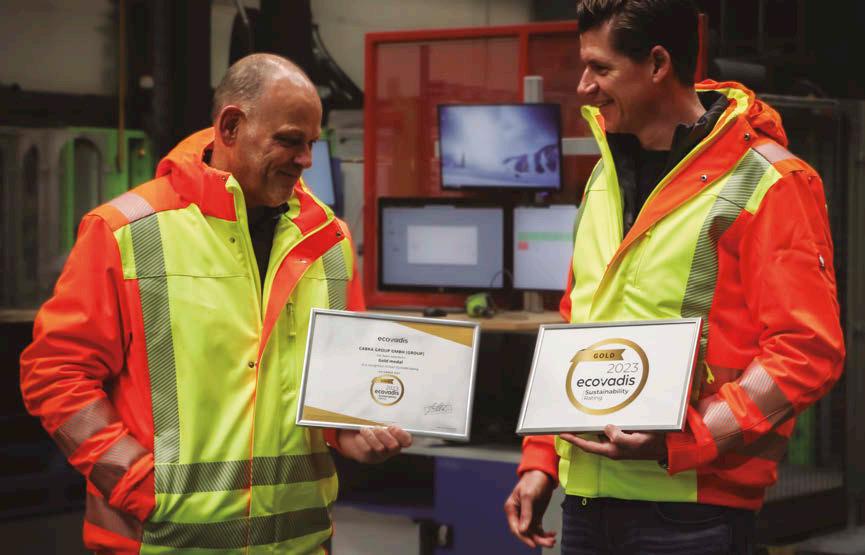
Cabka, especialista en envases de transporte reutilizables fabricados con plástico reciclado, ha sido reconocida con la medalla Oro en la calificación de sostenibilidad de EcoVadis. Este logro subraya el compromiso de Cabka con la economía circular, las prácticas sostenibles y la responsabilidad social en sus operaciones.
La dedicación de la empresa a la transformación de materiales al final de su vida útil en productos reutilizables y reciclables está en consonancia
con sus objetivos de sostenibilidad más amplios, como se indica en su primer informe de sostenibilidad de 2023.
Tim Litjens, consejero delegado de Cabka, expresó su compromiso con lograr un impacto positivo, afirmando: «Cabka se compromete a lograr un impacto positivo con sus propias operaciones y, en última instancia, con el producto que suministra al mercado. Este reconomiento es un testimonio de este compromiso y de la aplicación activa de nuestro marco ESG.»
Cabka, a specialist in reusable transport packaging made from recycled plastic, has been recognized with the Gold medal in the EcoVadis sustainability rating. This achievement underlines Cabka's commitment to the circular economy, sustainable practices and social responsibility in its operations.
The company's dedication to transforming end-of-life materials into reusable and recyclable products is in line with its broader sustainability goals, as outlined in its first 2023 sustainability report.
Tim Litjens, CEO of Cabka, expressed his commitment to making a positive impact, stating: “Cabka is committed to making a positive impact with its own operations and ultimately with the product it supplies to the market. This recognition is a testament to this commitment and the active application of our ESG framework.”
BASF e Inditex anuncian el lanzamiento de loopamid®, una poliamida 6 (PA6, también conocida como nailon 6) fabricada 100 % a partir de residuos textiles, BASF proporciona la primera solución circular para prendas de nailon fabricadas íntegramente a partir de residuos textiles. Zara ha convertido el material en una chaqueta hecha 100 % de loopamid, disponible ya en todo el mundo. Siguiendo un enfoque de ‘diseño para el reciclaje’, todas las piezas, incluidos los tejidos, los botones, el relleno, los ganchos y bucles y las cremalleras, están fabricados con loopamid.

Con loopamid, BASF ha desarrollado una solución para mejorar la circularidad en la industria de la moda y reciclar residuos textiles de poliamida 6. Al tolerar todas las mezclas de tejidos como PA6 y elastano, la tecnología de vanguardia detrás de loopamid permite el reciclaje textil a textil de residuos textiles postindustriales y postconsumo. Las características del material son idénticas a las de la poliamida virgen convencional.
BASF and Inditex announce the launch of loopamid®, a polyamide 6 (PA6, also known as nylon 6) made 100% from textile waste, BASF provides the first circular solution for nylon garments made entirely from textile waste. Zara has turned the material into a jacket made of 100% loopamid, available now worldwide. Following a ‘design for recycling’ approach, all parts, including fabrics, buttons, padding, hooks and loops and zippers, are made from loopamid.
With loopamid, BASF has developed a solution to improve circularity in the fashion industry and recycle polyamide 6 textile waste. By tolerating all fabric blends such as PA6 and elastane, the cutting-edge technology behind loopamid enables textile recycling at textile from post-industrial and post-consumer textile waste. The characteristics of the material are identical to those of conventional virgin polyamide.
BASF e Inditex avanzan en el reciclaje con loopamid, el primer nailon íntegramente basado en residuos textiles
BASF and Inditex advance recycling with loopamid, the first nylon entirely based on textile waste
67 SOSTENIBILIDAD I SUSTAINABILITY
Ganadores del concurso de ideas Renew Metsä Winners of the Renew Metsä ideas competition

Con el fin de encontrar ideas para seguir desarrollando operaciones sostenibles en bosques comerciales, Metsä Group organizó el concurso Renew Metsä en octubre y noviembre de 2023 para los miembros propietarios de su empresa matriz Metsäliitto Cooperative. El primer premio, dotado con 5.000 euros, fue para Antti Ylitalo de Kuopio. La idea ganadora se refiere a una red regional de sitios de demostración forestal. La red, que combina de una manera novedosa los mundos digital y físico, podría utilizarse para presentar métodos de gestión forestal y diferentes etapas de la silvicultura, así como ejemplos prácticos de medidas ecológicamente sostenibles. El segundo premio, dotado con 3.000 euros, fue para Ville Taipale de Lemi, cuya idea está relacionada con la visualización y medición de operaciones forestales. El tercer premio, dotado con 1.000 euros, fue para Matti Myllykoski de Siikalatva.
In order to find ideas to further develop sustainable operations in commercial forests, Metsä Group organized the Renew Metsä competition in October and November 2023 for member-owners of its parent company Metsäliitto Cooperative.
The first prize, worth 5,000 euros, went to Antti Ylitalo from Kuopio. The winning idea concerns a regional network of forestry demonstration sites. The network, which combines the digital and physical worlds in a novel way, could be used to present forest management methods and different stages of forestry, as well as practical examples of ecologically sustainable measures. The second prize, worth 3,000 euros, went to Ville Taipale de Lemi, whose idea is related to the visualization and measurement of forestry operations. The third prize, worth 1,000 euros, went to Matti Myllykoski from Siikalatva.
AIMPLAS da una segunda vida a residuos vegetales mediante la mecanoquímica
AIMPLAS gives a second life to plant waste through mechanochemistry
El Proyecto FUSTARISE, impulsado por AIMPLAS, Centro Tecnológico del Plástico, tiene como objetivo encontrar soluciones más sostenibles para la gestión y tratamiento de residuos lignocelulósicos, es decir, residuos vegetales procedentes de la agricultura y la silvicultura, mediante el uso de técnicas mecanoquímicas sin disolventes para darles una segunda vida en forma de productos sostenibles de base biológica, como cápsulas y adhesivos. Para ello, el centro tecnológico colabora con las empresas MIARCO, especializada en productos adhesivos y abrasivos, LISART, que trabaja en papel y embalajes de última generación en contacto con alimentos, y La Unió Llauradora i Ramadera, que representa a más de 20.000 agricultores. y ganaderos de la Comunidad Valenciana. Entre las ventajas de la mecanoquímica, está la reducción del consumo de disolventes y reactivos, algunos tóxicos y nocivos para el medio ambiente y la vida. La mecanoquímica también reduce el consumo de energía y agua, la emisión de gases a la atmósfera y la producción de residuos.
The FUSTARISE Project, promoted by AIMPLAS, the Plastics Technology Centre, aims to find more sustainable solutions for management and treatment of lignocellulosic waste, i.e. plant waste from agriculture and forestry, by using solvent-free mechanochemical techniques to give it a second life in the form of sustainable bio-based products such as capsules and adhesives. For this purpose, the technology centre is colla-
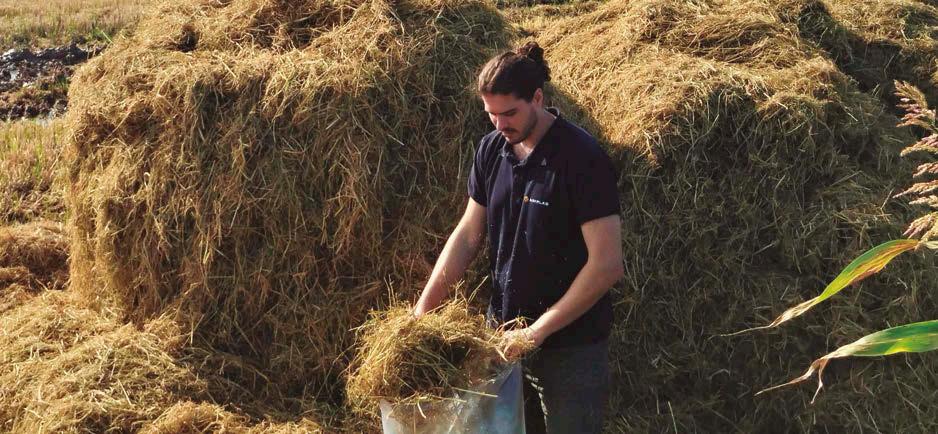
borating with the companies MIARCO, which specializes in adhesive and abrasive products, LISART, which works on cutting-edge food-contact paper and packaging, and La Unió Llauradora i Ramadera, which represents more than 20,000 farmers and livestock breeders in the Valencian Community.
Among the advantages of mechanochemistry, there is the reduction in the consumption of solvents and reagents, some of which are toxic and harmful to the environment and life. Mechanochemistry also reduces energy and water consumption, the emission of gases into the atmosphere, and waste production.
00 SOSTENIBILIDAD I SUS- SOSTENIBILIDAD I SUSTAINABILITY
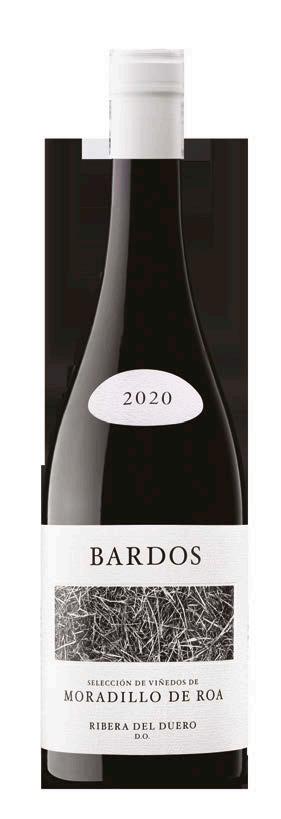

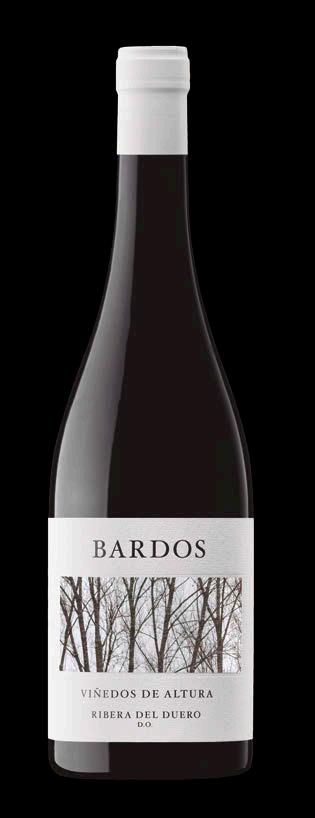
Bodega Bardos presenta sus nuevos vinos de zona y pueblo Bardos Winery presents its new local and town wines ’ 01
Tras 19 añadas elaborando vino en Ribera del Duero, Bodega Bardos, el proyecto de la compañía Vintae, presenta tres nuevos vinos que encarnan su apuesta por la diversidad. Su fascinación por los viñedos más altos y frescos de la D.O. ha dado lugar a un nuevo vino de zona nacido en Soria, Bardos Viñedos de Altura 2020, y dos nuevos vinos de municipio, el burgalés Bardos Moradillo de Roa 2020 y el soriano Bardos Villálvaro 2021.
After 19 vintages producing wine in Ribera del Duero, Bodega Bardos, the project of the Vintae company, presents three new wines that embody its commitment to diversity. His fascination with the highest and coolest vineyards of the D.O. has given rise to a new local wine born in Soria, Bardos Viñedos de Altura 2020, and two new municipal wines, the Bardos Moradillo de Roa 2020 from Burgos and the Bardos Villálvaro 2021 from Soria.
Di Oleo lanza sus primeros aceites de oliva virgen extra ecológicos Di Oleo launches its first organic extra virgin
olive oils
La firma gaditana de cosmética natural Di Oleo abre una nueva vía de negocio con la fabricación y venta de productos gourmet, empezando por el aceite de oliva virgen extra andaluz. Todos los aceites de esta primera colección son ecológicos, están macerados con hierbas provenzales, naranja, trufa negra, tomate y orégano, ajo, limón y eneldo, así como un séptimo sin aderezos. Vienen en botellas de 250ml. The Cádiz natural cosmetics firm Di Oleo opens a new business avenue with the manufacture and sale of gourmet products, starting with Andalusian extra virgin olive oil. All the oils in this first collection are organic, they are macerated with Provencal herbs, orange, black truffle, tomato and oregano, garlic, lemon and dill, as well as a seventh without seasonings. They come in 250ml bottles.
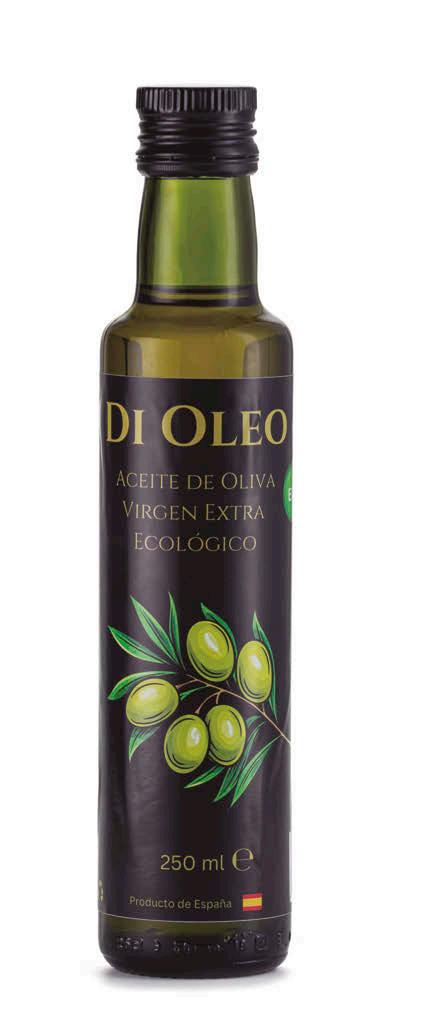

69 FOODIES I NEWS
NPFOOD
foodies ’Novedades en Alimentación
Bebidas New in Food and Beverages
’ 02
y
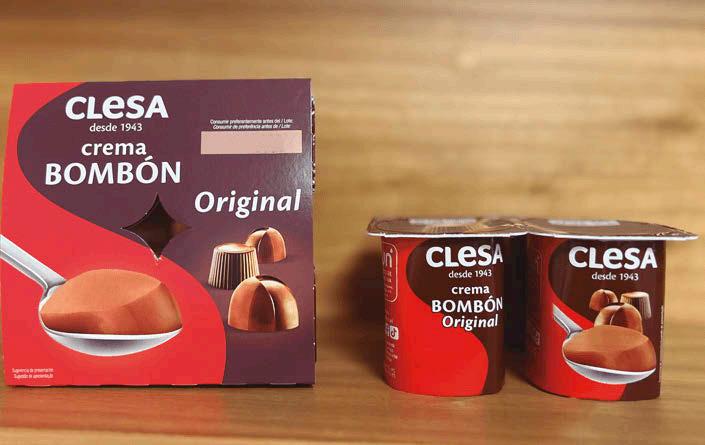
80 Aniversario de Clesa, nueva imagen y novedades 80th Anniversary of Clesa, new image and new products
La nueva imagen de Clesa, de líneas sencillas y colores suaves, abandona el óvalo, los brillos y los degradados. Cuenta con un sello que indica que es «producto de cooperativa». Clesa apuesta por el gran formato, con una línea especializada en el envasado de cubos de hasta 1kg. Ha desarrollado tres referencias de yogures griegos que ya se están comercializando con la nueva imagen. La referencia más exitosa de la marca es el yogur de chocolate Crema Bombón. Clesa's new image, with simple lines and soft colors, abandons the oval, brightness and gradients. It has a seal indicating that it is a "cooperative product." Clesa is committed to large format, with a line specialized in packaging cubes of up to 1kg. It has developed three references of Greek yogurts that are already being marketed with the new image. The most successful reference of the brand is the Crema Bombón chocolate yogurt.

’ 04
Pringles lanza un nuevo tubo de papel 'diseñado para el reciclaje' Pringles launches a new ‘designed for recycling’ paper-based tube
Junto con Sonoco, Kellanova Europe ha rediseñado el embalaje de Pringles para hacerlo reciclable sustituyendo el fondo de metal por un fondo a base de fibra de papel. El nuevo tubo de papel tiene en cuenta las directrices de ‘Circularidad por diseño’ de la cadena de valor europea de envases de fibra, la alianza 4Evergreen. Together with Sonoco, Kellanova Europe has redesigned its Pringles packaging to make it widely recyclable by replacing the metal bottom with a paper fibrebased bottom. The new paper-based tube takes into account “Circularity by Design” guidelines from the European fibre-based packaging value chain, the 4Evergreen alliance,.
70 FOODIES I NEWS
03
’Novedades en Alimentación y Bebidas New in Food and Beverages
’
foodies
’ 05


ColaCao lanza sus galletas ColaCao
Novedades en Alimentación y Bebidas New in Food and Beverages
Bañadas
ColaCao launches its ColaCao Bañadas cookies
ColaCao, marca de Idilia Foods, entra en una nueva categoría lanzando sus galletas ColaCao Bañadas. De masa crujiente, están bañadas con una cobertura de ColaCao, con un sabor que recuerda a los icónicos grumitos que forma el ColaCao en polvo en la leche, y pepitas de chocolate. Se presentan en dos variedades: Original, que contiene cinco bolsitas de tres
unidades, y Mini, con un tamaño más reducido.
ColaCao, a brand from Idilia Foods, enters a new category by launching its ColaCao Dipped cookies. Made of crispy dough, they are covered with a ColaCao coating, with a flavor reminiscent of the iconic lumps that ColaCao powder forms in milk, and chocolate chips. They come in two varieties: Original, which contains five bags of three units, and Mini, with a smaller size.

’ 06
Litoral presenta su primera receta plant-based en lata
Litoral presents its first plant-based recipe in a can
Litoral lanza al mercado su primera alternativa vegetal a las tradicionales albóndigas listas para consumir. Bajo la submarca Veg, Litoral presenta esta receta en su versión veggie. Elaboradas a partir de proteínas vegetales de soja y trigo, las albóndigas plant-based de Litoral son ricas en proteínas, fuente de fibra y no tienen colesterol. Las albóndigas Veg de Litoral, que ofrecen una textura jugosa y muy similar a la de las de carne, se guisan con guisantes y una salsa de tomate cultivado en las Vegas del Guadiana con prácticas de agricultura sostenible. Litoral launches its first vegetable alternative to traditional ready-to-eat meatballs on the market. Under the Veg sub-brand, Litoral presents this recipe in its veggie version. Made from soy and wheat vegetable proteins, Litoral's plant-based meatballs are rich in protein, a source of fiber and have no cholesterol. Litoral's Veg meatballs, which offer a juicy texture very similar to meat balls, are stewed with peas and a tomato sauce grown in Las Vegas del Guadiana with sustainable agriculture practices.
71 FOODIES I NEWS
NPFOOD
foodies ’
MATERIAL AUTOADHESIVO CON BAJA TENDENCIA A LA MIGRACIÓN
SELF-ADHESIVE MATERIAL WITH LOW MIGRATION TREND
Herma ofrece su adhesivo multicapa 62Dps con una tendencia a la migración extremadamente baja, para 16 materiales de etiquetas diferentes, muchos de los cuales están disponibles en el rango de ancho neto. Este adhesivo demuestra sus virtudes especialmente en láminas de embalaje: «incluso en aplicaciones críticas en condiciones frías y húmedas muestra muy buen rendimiento y es difícilmente superable desde el punto de vista económico», destaca Hendrik Kehl, jefe de producto de Herma.
El 62Dps puede estar en contacto directo con alimentos secos y húmedos. Además, es adecuado para alimentos grasos.
Herma offers its 62Dps multilayer adhesive with extremely low migration tendency, for 16 different label materials, many of which are available in the net width range. This adhesive demonstrates its virtues especially in packaging films: “even in critical applications in cold and humid conditions it shows very good performance and is difficult to beat from an economic point of view,” highlights Hendrik Kehl, product manager at Herma.
The 62Dps can be in direct contact with dry and moist foods. Furthermore, it is suitable for fatty foods.

LECTA PRESENTA LOS NUEVOS PAPELES
FUNCIONALES METALVAC
LECTA PRESENTS THE NEW METALVAC FUNCTIONAL PAPERS

Lecta ha desarrollado nuevos papeles metalizados con funcionalidades específicamente orientadas al embalaje flexible, una gama de productos reciclables cuyo objetivo es sustituir algunos de los materiales actualmente en uso que contienen plástico. Metalvac Barrier WV es adecuado para productos de alimentación, como confitería, café, té, productos en polvo, etc.
Los nuevos papeles Metalvac Seal y Metalvac Barrier WV tienen características adecuadas para aplicaciones específicas de embalaje flexible y, en ambos casos, son reciclables y, por tanto, más sostenibles.
Lecta has developed new metallized papers with functionalities specifically aimed at flexible packaging, a range of recyclable products whose objective is to replace some of the materials currently in use that contain plastic. Metalvac Barrier WV is suitable for food products, such as confectionery, coffee, tea, powder products, etc.
The new Metalvac Seal and Metalvac Barrier WV papers have characteristics suitable for specific flexible packaging applications and, in both cases, are recyclable and therefore more sustainable.
72 ACTUALIDAD I NEWS
EMBALAJE DE SMURFIT KAPPA PARA GRUPO LUCAS
SMURFIT KAPPA PACKAGING FOR LUCAS GROUP
Grupo Lucas, compañía líder del sector hortofrutícola, en colaboración con Smurfit Kappa, ha desarrollado un nuevo embalaje con una imagen renovada, que refuerza su marca en el punto de venta gracias a la impresión interior. Se ha utilizado la preimpresión en continuo, incluyendo en el interior un mensaje de sostenibilidad del Grupo Lucas. Un packaging que, además, cuenta con la certificación forestal FSC®, garantía de que su materia prima proviene de bosques gestionados de manera sostenible.
Lucas Group, a leading company in the fruit and vegetable sector, in collaboration with Smurfit Kappa, has developed a new packaging with a renewed image, which reinforces its brand at the point of sale thanks to the interior printing. Continuous pre-pressing has been used, including a sustainability message from the Lucas Group inside. A packaging that also has FSC® forestry certification, a guarantee that its raw materials come from sustainably managed forests.
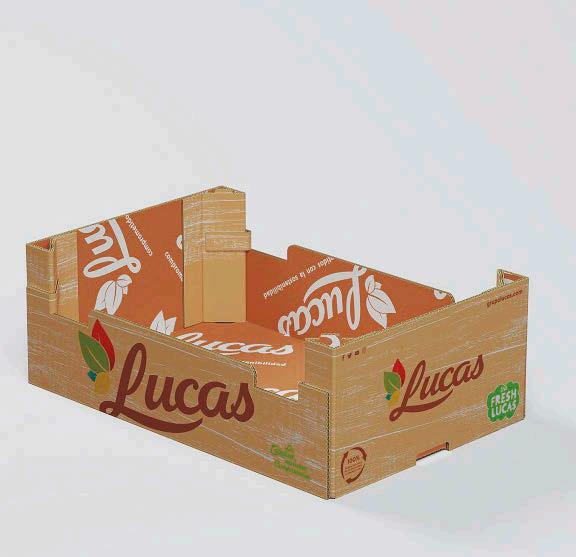
UPM OFRECE PAPELES DE EMBALAJE
CERTIFICADOS PARA COMPOSTAJE DOMÉSTICO UPM OFFERS CERTIFIED PACKAGING PAPERS FOR HOME COMPOSTING

UPM Specialty Papers ofrece ahora una amplia gama de papeles de embalaje diseñados para el compostaje doméstico. Seis papeles de embalaje de UPM ahora están certificados como compostables en el hogar, según la norma NFT51-800:2015. Estos papeles también están certificados como compostables industrialmente (EN13432:2000):
Papeles barrera: UPM PregoTM, UPM AsendoTM. Papeles estucados por una cara (C1S): UPM
FlexPackTM, UPM UniquePackTM, UPM
UniquePackTM Strong.
Papeles kraft especiales: UPM SolideTM Lucent.
UPM Specialty Papers now offers a wide range of packaging papers designed for home composting. Six UPM packaging papers are now certified as home compostable, according to the NFT51-800:2015 standard. These papers are also certified as industrially compostable (EN13432:2000):
Barrier papers: UPM PregoTM, UPM AsendoTM. Single-sided coated papers (C1S): UPM
FlexPackTM, UPM UniquePackTM, UPM
UniquePackTM Strong.
Specialty kraft papers: UPM SolideTM Lucent.
73 ACTUALIDAD I NEWS
NPFOOD
P.A.N. CUMPLE 63 AÑOS EN EL MERCADO CELEBRATES 63 YEARS IN THE MARKET
P.A.N., la marca pionera en harinas precocidas de maíz del mundo, nació en 1960, en Venezuela, gracias a Empresas Polar, para rescatar esa tradición y que la arepa se mantuviera en las mesas de todos. Hoy, P.A.N. está presente en 100 países y se ha convertido en una marca global que ofrece una variedad de productos que van desde harinas precocidas, hasta productos congelados, refrigerados, untables, ideales para consumir en casa, para eventos o restaurantes.
En España el portafolio de P.A.N. incluye harinas, frijoles, tequeños, quesos frescos, hummus, empanadas, arepas, cachapas, carnes preparadas, entre otros productos congelados y refrigerados.
P.A.N., the pioneer brand in pre-cooked corn flour in the world, was born in 1960, in Venezuela, thanks to Empresas Polar, to rescue that tradition and keep the arepa on everyone's tables.
Today, P.A.N. is present in 100 countries and has become a global brand that offers a variety of products ranging from pre-cooked flours to frozen, refrigerated, spreadable products, ideal for consumption at home, for events or restaurants.
In Spain, the P.A.N. portfolio includes flours, beans, tequeños, fresh cheeses, hummus, empanadas, arepas, cachapas, prepared meats, among other frozen and refrigerated products.

EMSUR DESARROLLA UNA TAPA DE PAPEL ANTIGRASA PARA UPFIELD
EMSUR DEVELOPS A GREASEPROOF PAPER LID FOR
UPFIELD
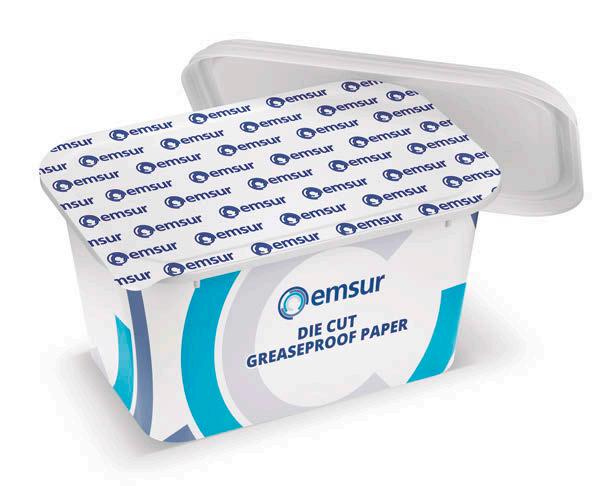
EMSUR ha presentado una tapa de papel antigrasa desarrollada en Innotech, el centro de innovación abierta del Grupo Lantero, para las cremas para untar y las mantequillas de origen vegetal de Upfield. Esta tapa garantiza la máxima protección del producto a lo largo de toda la cadena de suministro.
Las innovadoras tarrinas de papel, desarrolladas a partir de fibras de pulpa de papel, son impermeables, resistentes al aceite y reciclables dentro de los flujos locales de residuos de papel. Estas tarrinas, que cuentan con la certificación Conventional Plastic Free y utilizan papel con certificación PEFC, incorporan una tapa de papel antigrasa desarrollada por EMSUR, mejorando su sostenibilidad al ser monomaterial.
EMSUR has presented a greaseproof paper lid developed at Innotech, the Lantero Group's open innovation center, for Upfield's plantbased spreads and butters. This cap guarantees maximum product protection throughout the entire supply chain.
The innovative paper tubs, developed from paper pulp fibres, are waterproof, oil resistant and recyclable within local waste paper streams. These tubs, which are Conventional Plastic Free certified and use PEFC certified paper, incorporate a greaseproof paper lid developed by EMSUR, improving their sustainability as they are monomaterial.
74 ACTUALIDAD I NEWS
COVERIS PRESENTA ENVASES
FRESCOS Y SOSTENIBLES COVERIS UNVEILS FRESH, SUSTAINABLE PACKAGING
Coveris presenta sus soluciones de embalaje sostenible, como BarrierFresh MAP, películas MonoFlex y su gama de bolsas con fondo cuadrado. Al ofrecer una vida útil mejorada y una presentación en el punto de venta, responden a la creciente demanda del mercado alimentario de soluciones respetuosas con el medio ambiente.
El packaging para sandwiches con mayor vida útil de Coveris, lBarrierFresh MAP, mantiene los sándwiches frescos por más tiempo al controlar la atmósfera del pack, apoyando los objetivos de reducción de desperdicio de alimentos, con una óptima visibilidad del producto.
Coveris presents its sustainable packaging solutions, such as BarrierFresh MAP, MonoFlex films and its range of square bottom bags. By offering improved shelf life and presentation at the point of sale, they respond to the food market's growing demand for environmentally friendly solutions.
The packaging for sandwiches with the longest shelf life from Coveris, lBarrierFresh MAP, keeps sandwiches fresh for longer by controlling the atmosphere of the pack, supporting food waste reduction objectives, with optimal product visibility.

TREETOP BIOPAK PRESENTA BOLSAS COMPOSTABLES CASERAS PARA PAN FRESCO TREETOP BIOPAK INTRODUCES HOME COMPOSTABLE BAGS FOR FRESH BREAD
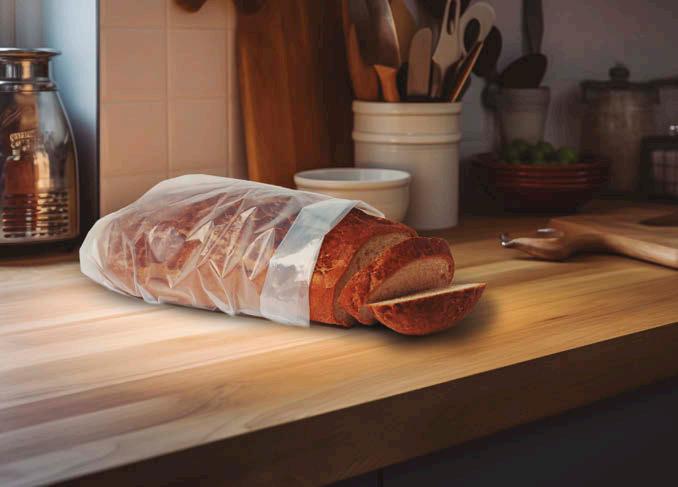
Treetop Biopak presenta sus nuevas bolsas compostables para el hogar. A diferencia de las bolsas de plástico convencionales, estas bolsas ofrecen una solución sostenible al final de su vida útil. Están diseñadas para hacer compost una vez desechadas correctamente, sin dejar microplásticos ni contaminantes. Uno de los desafíos de las bolsas compostables ha sido mantener la frescura del pan envasado. Treetop Biopak ha desarrollado un material monocapa con mayores propiedades de barrera, diseñado específicamente para productos de panadería. Este material innovador es sostenible y mantiene la vida útil de los productos de pan fresco. Treetop Biopak introduces nits ew home compostable bags. Unlike conventional plastic bags, these bags offer a sustainable end-of-life solution. They are designed to compost once disposed of correctly, without leaving microplastics or contaminants. One of the challenges of compostable bags has been maintaining the freshness of the packaged bread. Treetop Biopak has developed a single-layer material with higher barrier properties designed specifically for bakery products. This innovative material is sustainable and maintains the shelf life of fresh bread products.
75 ACTUALIDAD I NEWS NPFOOD
ALIANZA ENTRE SIERRA NORTE Y RAÍCES
IBÉRICAS ALLIANCE BETWEEN SIERRA NORTE AND RAÍCES IBÉRICAS
Tras 10 años de colaboración entre las familias detrás de ambas empresas, Raíces Ibéricas entra con un 30 % en el capital de Sierra Norte.
Desde su creación en 1999, Bodega Sierra Norte se ha enfocado, exclusivamente, en la producción de vino ecológico. La bodega cuenta con 410 ha de viñedo propio en Requena, Jumilla y La Roda, y 350 ha de contratos a largo plazo. La bodega está a punto de obtener la certificación Wineries for Climate Protection (WfCP), en plena reconversión hacia la viticultura regenerativa.
Raíces Ibéricas tiene su sede en Maluenda (Aragón), en el corazón dee Calatayud, donde vinifican el 12 % de la denominación de origen. La región es conocida por sus viñedos históricos de garnacha tinta.
After 10 years of collaboration between the families behind both companies, Raíces Ibéricas enters with 30% of the capital of Sierra Norte. Since its creation in 1999, Bodega Sierra Norte has focused exclusively on the production of organic wine. The winery has 410 hectares of its own vineyards in Requena, Jumilla and La Roda, and 350 hectares of long-term contracts. The winery is about to obtain the Wineries for Climate Protection (WfCP) certification, in full conversion towards regenerative viticulture.
Raíces Ibéricas has its headquarters in Maluenda (Aragón), in the heart of Calatayud, where they vinify 12% of the designation of origin. The region is known for its historic red Grenache vineyards.

CAFÉ DROMEDARIO OBTIENE EL SELLO 'COMPROMISO CON LA VALORIZACIÓN' DEL GRUPO SAICA OBTAINS THE 'COMMITMENT TO VALORIZATION' SEAL FROM THE SAICA GROUP
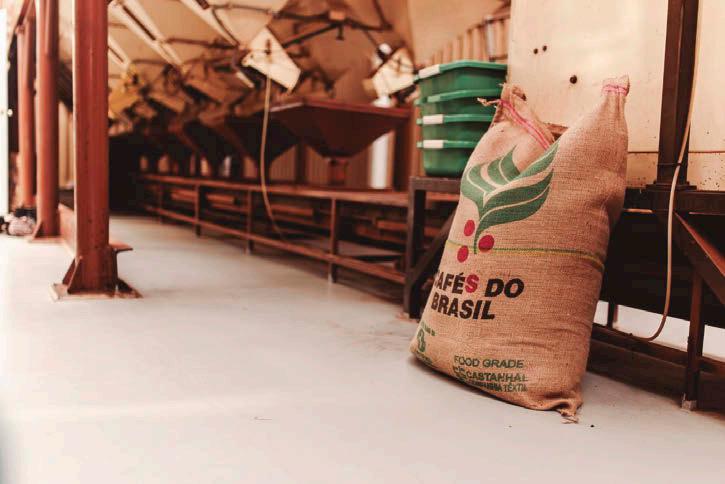
Café Dromedario ha obtenido el sello ‘De Residuos a Recursos: Compromiso con la Valorización’, de Saica Natur, división del Grupo Saica especializada en gestión de residuos y servicios medioambientales, tras superar la verificación independiente de la certificadora alemana TÜV SÜD. La empresa se convierte así en la primera de su sector en España en alcanzar este reconocimiento, al haber enviado en 2023, a operaciones de valorización material y energética, el 100 % de sus residuos durante junio y noviembre. Durante el último año, el grupo cafetero gestionó más de 63.000 kg de residuos.
Café Dromedario has obtained the seal 'From Waste to Resources: Commitment to Valorization', from Saica Natur, a division of the Saica Group specialized in waste management and environmental services, after passing the independent verification of the German certification company TÜV SÜD. The company thus becomes the first in its sector in Spain to achieve this recognition, having sent 100% of its waste during June and November to material and energy recovery operations in 2023. During the last year, the coffee group managed more than 63,000 kg of waste.
76 ACTUALIDAD I NEWS
Manuel Olmo (Sierra Norte) & Mark Schiettekat (Raíces Ibéricas).
SOSTENIBILIDAD/SUSTAINABILITY
HINOJOSA REVALIDA LA MEDALLA DE ORO DE ECOVADIS
HINOJOSA REVALIDATES THE ECOVADIS GOLD MEDAL
Un año más, Hinojosa Packaging Group obtiene la medalla de oro de EcoVadis por su impacto positivo en materia de sostenibilidad. Esto la sitúa, en relación con sus políticas medioambientales, sociales y de gobierno corporativo, en el 5 % de las empresas mejor valoradas por la plataforma.
En pleno proceso de expansión internacional, Hinojosa revalida su puntuación de 71 puntos sobre 100 posibles, volviendo a destacar en su impacto en el medioambiente gracias a la reducción de emisiones de carbono y a sus acciones sostenibles: la valorización del 93,6 % de sus residuos o el uso de más del 63 % de energías que provienen de fuentes renovables. Once again, Hinojosa Packaging Group obtains the EcoVadis gold medal for its positive impact on sustainability. This places it, in relation to its environmental, social and corporate governance policies, in the 5% of the companies best valued by the platform. The certification, endorsed internationally, In the process of international expansion, Hinojosa revalidates its score of 71 points out of a possible 100, once again highlighting its impact on the environment thanks to the reduction of carbon emissions and its sustainable actions: the recovery of 93.6% of its waste or the use of more than 63% of energy that comes from renewable sources.

NESTLÉ REAFIRMA SU COMPROMISO CON LOS RECURSOS HÍDRICOS Y LA BIODIVERSIDAD ACUÁTICA NESTLÉ REAFFIRMS ITS COMMITMENT TO WATER RESOURCES AND AQUATIC BIODIVERSITY

Impulsar la protección de los recursos hídricos y favorecer la diversidad de las especies. Con este fin, Nestlé España, en colaboración con la Junta de Extremadura, la Diputación de Badajoz, la Confederación Hidrográfica del Guadiana y la Reserva de la Biosfera La Siberia, avanza en su proyecto para recuperar y conservar las especies relacionadas con el medio acuático que desarrolla en los alrededores de su planta de Nestlé Aquarel en Herrera del Duque (Badajoz). Nestlé tiene previsto plantar 400 nuevos árboles a lo largo del arroyo Benazaire, afluente del Guadiana, en los próximos meses. Se unen a los más de 1.100 árboles que se trasplantaron la pasada primavera en esta zona.
Promote the protection of water resources and promote the diversity of species. To this end, Nestlé Spain, in collaboration with the Government of Extremadura, the Provincial Council of Badajoz, the Guadiana Hydrographic Confederation and the La Siberia Biosphere Reserve, is advancing its project to recover and conserve species related to the aquatic environment that develops in the surroundings of its Nestlé Aquarel plant in Herrera del Duque (Badajoz). Nestlé plans to plant 400 new trees along the Benazaire stream, a tributary of the Guadiana, in the coming months. They join the more than 1,100 trees that were transplanted last spring in this area.
77 ACTUALIDAD I NEWS NPFOOD
SOSTENIBILIDAD/SUSTAINABILITY
MATERIALES AUTOADHESIVOS PARA ETIQUETAS BIODEGRADABLES
SELF-ADHESIVE MATERIALS FOR BIODEGRADABLE LABELS
Dos materiales de etiquetas autoadhesivas de Hermaque se pueden convertir en abono también han superado la prueba crítica de toxicidad para lombrices según la norma australiana AS 5810. Es el estándar más reconocido cuando se trata del compostaje de materiales de embalaje en casa y en el jardín. La certificación se obtuvo a través del instituto DIN CERTCO, filial de TÜV Rheinland. La base para ello es el nuevo adhesivo 62Q de Herma. La certificación se aplica en combinación con los dos materiales de etiquetas HERMAextracoat (grado 242) y HERMAtherm Bio (grado 909).
Two compostable self-adhesive label materials from Herma have also passed the critical worm toxicity test according to Australian Standard AS 5810. It is the most recognized standard when it comes to composting packaging materials at home and in the garden. . The certification was obtained through the DIN CERTCO institute, a subsidiary of TÜV Rheinland. The basis for this is the new 62Q adhesive from Herma. The certification applies in combination with the two label materials HERMAextracoat (grade 242) and HERMAtherm Bio (grade 909).

LOUIS ROEDERER GANA EL PREMIO
EMBLEMA VERDE ROBERT PARKER
LOUIS ROEDERER WINS THE AWARD
ROBERT PARKER GREEN EMBLEM

Desde 2021, el Emblema
Verde Robert Parker se concede a las bodegas que demuestran un compromiso sobresaliente con la viticultura sostenible y la protección a largo plazo del medio ambiente y la biodiversidad. Louis Roederer, la reconocida ‘maison champagne’ y una de las bodegas más destacadas de la distribuidora Primeras Marcas, fue una de las primeras 24 bodegas en ser incluida en este listado a nivel mundial cuando se creó y ha sido premiada de nuevo.
La empresa familiar dirigida por Frédéric Rouzaud fue pionera en Champagne cuando, en 2018, se embarcó en el proceso de certificación de Agricultura Ecológica (AB por sus siglas en francés), tras el cual 115 hectáreas de sus viñedos históricos obtuvieron la certificación AB.
Since 2021, the Robert Parker Green Emblem has been awarded to wineries that demonstrate an outstanding commitment to sustainable viticulture and the long-term protection of the environment and biodiversity. Louis Roederer, the renowned Champagne House and one of the most prominent wineries of the Primera Marcas distributor, was one of the first 24 wineries to be included in this list worldwide when it was created, and has been awarded again.
The family business led by Frédéric Rouzaud was a pioneer in Champagne when, in 2018, it embarked on the Organic Agriculture (AB) certification process, after which 115 hectares of its historic vineyards obtained AB certification.
78 ACTUALIDAD I NEWS
Packaging Première & PCD Milan
Packaging Première & PCD Milan, que se celebrarán del 21 al 23 de mayo en Milán, reunirán a los principales actores de la industria del packaging (marcas, diseñadores, expertos y profesionales del sector del lujo, cosmética, perfumería, vinos y licores, gastronomía y moda) para explorar las últimas tendencias, potenciando el conocimiento de las innovaciones y ofreciendo la oportunidad de establecer networking.
La edición de 2024 será una experiencia inmersiva e interactiva, en torno al papel de los cinco sentidos y la multisensorialidad. El gusto se satisfará con un postre que estará disponible para degustar durante el evento, creado especialmente por el reconocido pastelero Gianluca Fusto de Fusto Milán; inspirándose en este postre, los alumnos del Instituto Italiano de Perfumería crearán una fragancia para el hogar. Además de su difusión en el vestíbulo y en la Galería de Arte, la fragancia se conservará en un precioso packaging, gracias a un grupo de expositores. La vista tendrá su punto culminante en la Galería de Arte, el centro creativo que sirve de prólogo al evento que explorará el tema del arte digital, gracias al proyecto del artista Vincenzo Marsiglia, quien creará una instalación con efectos visuales, acompañada de música compuesta para hacer que toda la experiencia sea aún más inmersiva. Finalmente, efectos impresos decorarán el papel y otros materiales utilizados para la portada del catálogo y para los envases.
Un interesante programa
«Además del espacio de exposición, Packaging Première acogerá importantes ponentes y mesas redondas con líderes y expertos que compartirán su visión sobre el futuro del
packaging», afirmó Pier Paolo Ponchia, fundador y director de Packaging Première. «Nuestro objetivo es potenciar la cultura del packaging, hoy impulsada por los últimos avances en tecnología, la innovación responsable y el diseño inteligente». Entre las conferencias, una protagonizada por Dom Pérignon, que presentará su botella de edición limitada de cincuenta piezas creadas por la artista Juliette Clovis. Además, habrá una ponencia dedicada al marketing sensorial; otra centrada en las principales tendencias del mercado del Lejano Oriente, con especial atención a la cosmética coreana; una conferencia sobre la innovación responsable de materiales en la industria de la moda, y otra de Pantone centrándose en el tema del color. En el área Avant-Garde, los visitantes podrán admirar los proyectos seleccionados por un jurado compuesto por expertos del sector. Los envases ganadores en cada categoría se presentarán el 23 de mayo.
Packaging Première también mostrará Design Hub, un espacio dentro del evento donde cinco agencias de primer nivel especializadas en diseño de packaging para vinos y licores (Advision, BasileADV, Officina Grafica, O,nice! Design Studio y Smith Lumen) presentarán sus proyectos.
Packaging Première & PCD Milan, which will be held from May 21 to 23 in Milan, will bring together the main players in the packaging industry (brands, designers, experts and professionals from the luxury sector, cosmetics, perfumery, wines and spirits, gastronomy and fashion) to explore the latest trends, enhancing knowledge of the latest innovations and offering the opportunity to network.

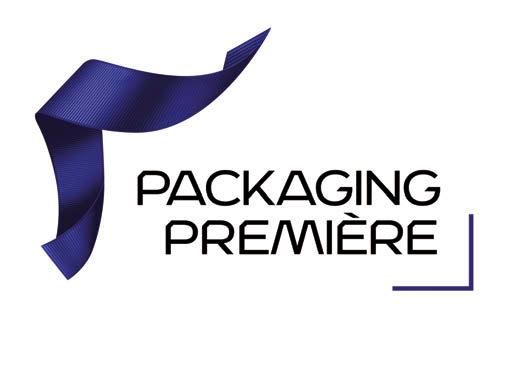
Milan; Inspired by this dessert, students from the Italian Institute of Perfumery will create a fragrance for the home. In addition to its diffusion in the lobby and the Art Gallery, the fragrance will be preserved in beautiful packaging, thanks to a group of exhibitors. The view will culminate in the Art Gallery, the creative center that serves as a prologue to the event that will explore the theme of digital art, thanks to the project of the artist Vincenzo Marsiglia, who will create an installation with visual effects, accompanied by music composed for making the whole experience even more immersive. Finally, printed effects will decorate the paper and other materials used for the catalog cover and packaging.
An interesting program
"In addition to the exhibition space, Packaging Première will host important speakers and round tables with leaders and experts who will share their vision on the future of packaging," said Pier Paolo Ponchia, founder and director of Packaging Première. "Our goal is to promote packaging culture, today driven by the latest advances in technology, responsible innovation and intelligent design."
The 2024 edition will be an immersive and interactive experience, around the role of the five senses and multisensory. The taste will be satisfied with a dessert that will be available to taste during the event, specially created by the renowned pastry chef Gianluca Fusto of Fusto
Among the conferences, one starring Dom Pérignon, who will present his limited edition bottle of fifty pieces created by the artist Juliette Clovis. In addition, there will be a conference dedicated to sensory marketing; another focused on the main trends in the Far East market, with special attention to Korean cosmetics; a presentation on responsible innovation of materials in the fashion industry, and another from Pantone focusing on the topic of color. In the Avant-Garde area, visitors will be able to admire the projects selected by a jury made up of sector experts. The winning packages in each category will be presented on May 23. Packaging Première will also show Design Hub, a space within the event where five top-level agencies specialized in packaging design for wines and spirits (Advision, BasileADV, Officina Grafica, O,nice! Design Studio and Smith Lumen) will present their projects.
79 FERIAS I TRADE FAIRS & EVENTS
Ganadores de los premios Award winners Pharmapack Europe 2024
Pharmapack Europe anunció los ganadores de los premios Pharmapack 2024, que abarcan cuatro categorías divididas en dos premios específicos. Pharmapack Europe, el evento central de la industria de la administración y el envasado de medicamentos, se celebró en enero y albergó 370 expositores de más de 80 países. Los premios Health Product Awards están abiertos a toda la industria farmacéutica, con ganadores en ecodiseño y diseño centrado en el paciente, mientras que los premios Exhibitor Awards celebran la excelencia en envases e innovación en start-ups. Los jueces también otorgaron una Mención Alta a dos trabajos que quedaron en segundo lugar.
Los premios
Una nueva tecnología de moldeo por inyección que utiliza pulpa en lugar de plásticos y un dispensador que revoluciona la forma en que se administran los medicamentos por vía intranasal fueron reconocidos en la ceremonia de premios Pharmapack. También se otorgaron dos premios más, uno por un sistema que permite una administración rápida y sencilla de combinaciones de fármacos inyectables liofilizados y el segundo por una barra monomaterial reciclable para productos farmacéuticos. Finalmente, un sistema de vial y tapón sin aguja y un dispensador que ofrece una dosificación más precisa fueron altamente elogiados.
En la sección Innovación en embalaje de la categoría Innovación del expositor, Nissha Europe fue seleccionada como ganadora por el desarrollo de un componente autoinyector de inyección de pulpa, una nueva tecnología de moldeo por inyección que utiliza pulpa en lugar de plásticos.
Pulp-Injection es adecuado tanto para componentes de dispositivos como para embalajes secundarios. Utiliza principalmente pulpa y almidón, lo que resulta en una reducción significativa del uso de plástico. Además, los componentes fabricados de esta manera se pueden


reciclar dentro de un sistema de reciclaje de papel estándar. Sin embargo, gracias a su rigidez, Pulp-Injection puede lograr un diseño complejo y una alta precisión dimensional. Los jueces elogiaron también a Coradin por su dispensador Greenis. Además de estar diseñado para facilitar la dosificación precisa de sueros y cremas, también está fabricado con un 75 % de plástico reciclado posconsumo.
El premio a la Innovación Start-Up fue para Capa Valve Ltd por un sistema que permite compartimentar una jeringa estándar en un dispositivo de doble cámara. Capa Valve implica la instalación de dos piezas pequeñas dentro de jeringas estándar existentes adecuadas para aplicaciones precargadas.
Actualmente, hay algunas empresas que ofrecen jeringas de doble cámara para líquidos de administración secuencial o para la premezcla de un diluyente y un fármaco liofilizado, en gran parte debido a su costo y complejidad percibida. Sin embargo, la característica clave del sistema Capa Valve es que se puede producir a un costo comparativamente bajo para cualquier jeringa de tamaño estándar utilizando una tecnología conocida de llenado/acabado para
proporcionar una gama de funcionalidades. El premio al Diseño Centrado en el Paciente fue para el Dr. Ferrer Biopharma, cuya empresa impresionó a los jueces con su tecnología GentleMist (GMT). Este dispositivo de administración de medicamentos de última generación revoluciona la forma en que se administran los medicamentos por vía intranasal, ofreciendo mayor comodidad, administración de medicamentos dirigida y beneficios terapéuticos. Las boquillas tradicionales suelen generar molestias y dolor debido a la presión ejercida durante la administración, lo que dificulta el cumplimiento del paciente y afecta negativamente a la experiencia general del tratamiento. GMT aborda este desafío utilizando principios avanzados de dinámica de fluidos y experiencia en ingeniería centrándose en una boquilla de pulverización nasal más suave y eficaz.
En la sección de Ecodiseño, el claro ganador fue Rotor Print por su desarrollo de una barra reciclable adecuada para una amplia gama de productos y aplicaciones farmacéuticas actuales.
La mayoría de las barras convencionales se componen de tres, cuatro o incluso cinco capas de diferentes materiales, normalmente
80 FERIAS I TRADE FAIRS & EVENTS
combinaciones de poliéster, aluminio, papel y polietileno. Este enfoque significa que estas estructuras no se pueden reciclar, ya que es imposible separar las diferentes capas. Rotor Print resolvió este problema creando una nueva barra compuesta por tres capas del mismo material, lo que la hace completamente reciclable. Además, este nuevo diseño se puede utilizar en los mismos procesos que las barras actuales no reciclables, lo que significa que los laboratorios pueden realizar un cambio beneficioso sin una gran inversión en maquinaria nueva.
Los jueces también elogiaron altamente a Klin-Loc Medical por su Needless Medical Vial, el único sistema de vial y tapa que se puede envasar durante el proceso de llenado/acabado y entregarse como un pack sin agujas. Su composición patentada presenta una tetina roscada de polímero de grado médico fijada a un tabique de elastómero. Solo requiere girar la tapa FlipOff y girar la jeringa Luer-Lock (roscada) para acceder al contenido.
Pharmapack Europe announced the winners of the Pharmapack 2024 awards, covering four categories divided into two specific awards. Pharmapack Europe, the central event for the pharmaceutical packaging and delivery industry, took place on 24 and 25 January, with 5,500 attendees and 370 exhibitors from over 80 countries.
The Health Product Awards are open to the entire pharmaceutical industry, with winners in eco-design and patient-centred design, while the Exhibitor Awards celebrate excellence in packaging and innovation in start-ups. The judges also awarded a High Mention to two second-place entries.
The awards
A new injection molding technology that uses pulp instead of plastics and a dispenser that revolutionizes the way medicines are administered intranasally were recognized at the Pharmapack awards ceremony. Two further prizes were also awarded, one for a system that enables rapid and easy administration of lyophilized injectable drug combinations and the second for a recyclable monomaterial stick for pharmaceuticals. Finally, a needleless vial and cap system and a dispenser that offers more precise dosing were highly praised.
In the Packaging Innovation section of the Exhibitor Innovation category, Nissha Europe was selected as the winner for the development of a pulp injection autoinjector component, a new injection molding technology that uses pulp instead of plastics. Pulp-Injection is suitable for both device components and secondary packaging. It mainly uses pulp and starch, resulting in a significant reduction in plastic use. Additionally, components manufactured in this way can be recycled within a standard paper recycling system. However, thanks to its rigidity, Pulp-Injection can achieve complex design and high dimensional accuracy.
The judges also praised Coradin for its Greenis dispenser. In addition to being designed to facilitate precise dosing of serums and creams, it is also made from 75% post-consumer recycled plastic.
The Start-Up Innovation award went to Capa Valve Ltd for a system that allows a standard syringe to be compartmentalized into a dualchamber device. Capa Valve involves the installation of two small parts inside existing standard syringes suitable for pre-filled applications.
Currently, there are a few companies that offer dual-chamber syringes for sequentially administered liquids or for premixing a diluent and a lyophilized drug, largely due to their cost and perceived complexity. However, the key feature of the Capa Valve system is that it can be produced at a comparatively low cost for any standard size syringe using known fill/finish technology to provide a range of functionality.
The Patient-Centered Design award went to Dr. Ferrer Biopharma, whose company impressed the judges with its GentleMist technology (GMT). This next-generation drug delivery device revolutionizes the way medications are administered intranasally, offering greater convenience, targeted drug delivery and therapeutic benefits. Traditional mouthpieces often cause discomfort and pain due to the pressure exerted during administration, making it difficult for the patient to comply and negatively impacting the overall treatment experience. GMT addresses this challenge using advanced fluid dynamics principles and engineering expertise focusing on a smoother, more effective nasal spray nozzle.
In the Ecodesign section, the clear winner was Rotor Print for its development of a recyclable bar suitable for a wide range of current pharmaceutical products and applications.
Most conventional bars are made up of three, four or even five layers of different materials, usually combinations of polyester, aluminum, paper and polyethylene. This approach means that these structures cannot be recycled as it is impossible to separate the different layers. Rotor Print solved this problem by creating a new bar made up of three layers of the same material, making it completely recyclable. Additionally, this new design can be used in the same processes as current non-recyclable bars, meaning laboratories can make a beneficial change without a large investment in new machinery. The judges also highly praised Klin-Loc Medical for its Needless Medical Vial, the only vial and cap system that can be packaged during the fill/finish process and delivered as a completely needle-free pack. Its patented composition features a medicalgrade polymer threaded nipple attached to an elastomer septum. Simply twist the FlipOff cap and twist the Luer-Lock (threaded) syringe to access the contents.
THE AWARDS
HEALTH PRODUCT AWARDS
ECO-DESIGN WINNER
Rotor Print for Recyclable Sticks
HIGHLY COMMENDED
Klim-Loc Medical, LLC for Klim-Loc Needleless Medical Vial
PATIENT-CENTRIC DESIGN WINNER
Dr. Ferrer Biopharma for GentleMist Technology
EXHIBITOR INNOVATION
PACKAGING INNOVATION WINNER
Nissha Europe GmbH for Pulp-Injection
Autoinjector Component
HIGHLY COMMENDED
CORADIN for the GREENIS Dispenser
START-UP INITIATIVE WINNER
Capa Valve Ltd for Capa Valve
81 FERIAS I TRADE FAIRS & EVENTS
Paris Packaging Week acoge más de 14.000
asistentes
welcomes more than 14,000 attendees
ADF, PCD, PLD y Packaging Première Paris reafirman su lugar en el centro de la innovación y el diseño de packaging para aerosoles, belleza y cuidado personal, bebidas premium y productos de lujo. Los organizadores de Paris Packaging Week, Easyfairs, han anunciado una edición récord del evento, con 14.077 profesionales del packaging asistentes los días 17 y 18 de enero, incluidos 9.923 visitantes en representación de unas 3.000 marcas y agencias de diseño, y 4.154 en representación de los 637 expositores. Las cifras de asistencia suponen un aumento del 10,4 % respecto a la edición anterior de enero de 2023. Estuvieron presentes marcas francesas e internacionales de los mercados de aerosoles, belleza, bebidas y lujo.
Además de los cientos de nuevos productos expuestos, representantes de una amplia gama de marcas, agencias de diseño, proveedores de envases y asociaciones se unieron a más de 100 ponentes en los cuatro escenarios de la conferencia, entre ellos The Smiley Company, L’Orèal, Guerlain, LVMH, Rèmy Cointreau, Pentawards, Le Rouge Francais, (RE)Set, Kao, Beiersdorf, Berry Global, FEA y Coty.
Ganadores de los PCD Innovation Awards
Estos premios reconocen los envases técnicamente más innovadores y bellos en perfumes, cosméticos, cuidado personal, cuidado del cabello y cuidado de la piel.
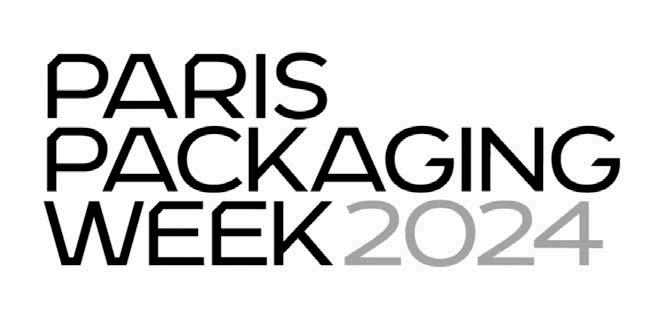

El jurado, que incluía representantes de marcas como Chanel, Cartier, Interparfums, L’Oréal, The Estée Lauder Companies y Groupe Clarins, entre otras, y encabezado por el presidente del jurado y experto en packaging Hervé Bouix, se reunió el 14 de diciembre de 2023, en Jujin, Nueva York, para seleccionar a los ganadores de un grupo inicial de más de 220 participantes.
En total, se entregaron 15 premios y 10 certificados en las nueve categorías. Los ganadores de los Premios PCD a la Innovación fueron los siguientes: (ver versión en inglés).
ADF, PCD, PLD and Packaging Première Paris reaffirm their place at the center of packaging innovation and design for aerosols, beauty and personal care, premium beverages and luxury products. Paris Packaging Week organizers
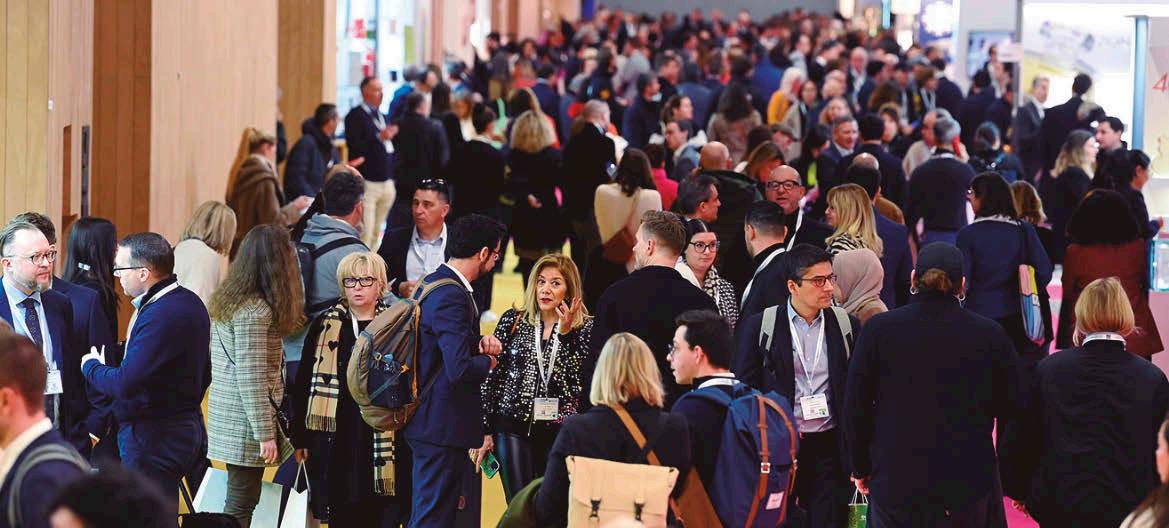


Easyfairs have announced a record edition of the event, with 14,077 packaging professionals attending on 17 and 18 January, including 9,923 visitors representing some 3,000 brands and design agencies, and 4,154 representing the 637 exhibitors. The attendance figures represent an increase of 10.4% compared to the previous edition in January 2023. French and international brands from the aerosol, beauty, beverage and luxury markets were present.
In addition to the hundreds of new products on display, representatives from a wide range of brands, design agencies, packaging suppliers and associations joined more than 100 speakers on the conference's four stages, including The Smiley Company, L'Orèal , Guerlain, LVMH, Rèmy Cointreau, Pentawards, Le Rouge Francais, (RE)Set, Kao, Beiersdorf, Berry Global, FEA and Coty.
Winners of the PCD Innovation Awards
These awards recognize the most technically innovative and beautiful packaging in perfumes,
82 FERIAS I TRADE FAIRS & EVENTS
cosmetics, personal care, hair care and skin care.
The jury, which included representatives from brands such as Chanel, Cartier, Interparfums, L'Oréal, The Estée Lauder Companies and Groupe Clarins, among others, and headed by jury president and packaging expert Hervé Bouix, met on December 14 2023, in Jujin, New York, to select winners from an initial pool of more than 220 entrants.
In total, 15 awards and 10 certificates were awarded in the nine categories.
The winners of the PCD Innovation Awards were the following:
Makeup Mass Market
Award: Covergirl Lash Blast Cleantopia
Mascara – Coty
Certificate: L’Oréal Paris Telescopic Lift
Mascara – L’Oréal
Premium makeup
Award: 31 Le Rouge – Chanel Parfums Beauté
Award: Rouge Premier – Parfums Christian
Dior
Certificate: Artist Face Powders – Make up For Ever SA
Personal care
Award: Recycled and Recyclable Ecorefill Bottle – L’Occitane en Provence
Award: Good Coloration – L’Oréal
Certificate: Oleor Color in shampoo-One Push –L’Oréal
Skincare mass market
Award: Dermalogica Clear Start Breakout
Clearing Booster x Greenis® Dispenser –Dermalogica
Certificate: Dermalogica Porescreen Mineral Sunscreen SPF40 – Dermalogica
Premium skincare
Award: Sublimage La Crème – Chanel Parfums Beauté
Award: Sublimage Night Extract – Chanel Parfums Beauté
Certificate: Dior Prestige Le Nectar Premier –Parfums Christian Dior
Certificate: The Ultimate Cream – Amorepacific / Verescence
Fragrance Women
Award: La Panthère Eau de Parfum – Cartier
Parfums
Award: Burberry Her Eau de Parfum – Coty
Certificate: Flower By Kenzo Ikebana Eau de Parfum – LVMH Fragrance Brands
Fragrance Men
Award: Penhaligon’s – Potions & Remedies –Penhaligon’s
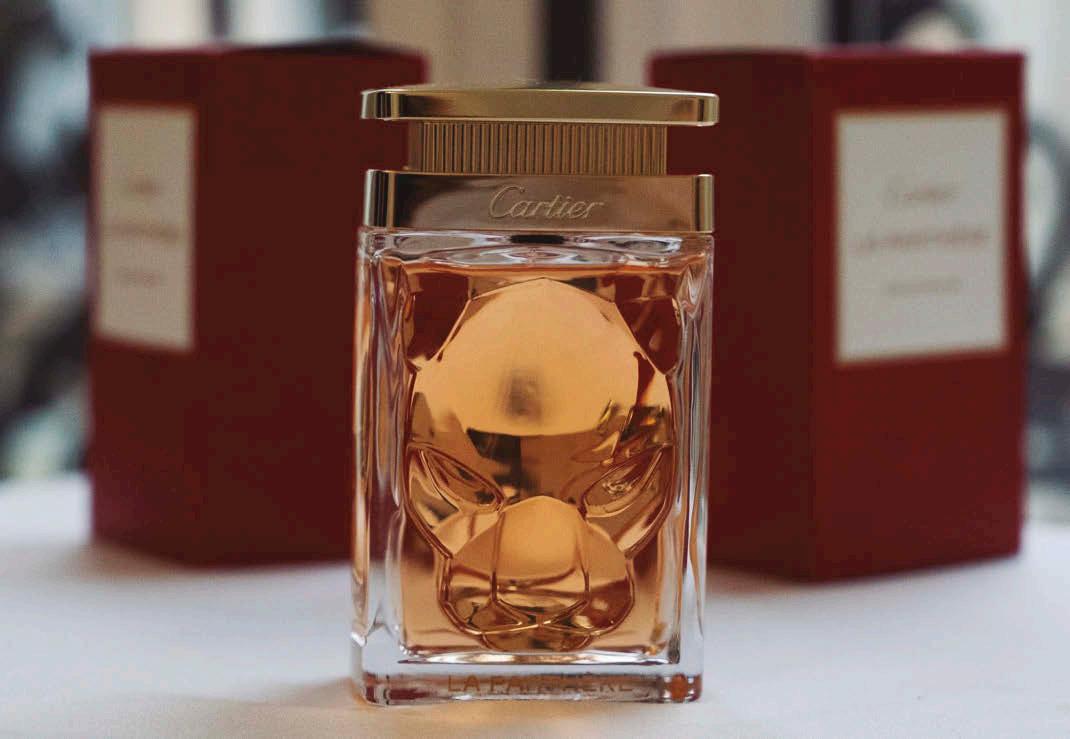
Certificate: JPG Le Male Elixir – Puig France New Limited Edition > 2000
Award: Perfumed cases – Cartier Parfums
Award: MM Replica Wooden Box – L’Oréal
Certificate: Christmas Makeup Minaudière 2023 – Parfums Christian Dior New Limited Edition < 2000
Award: L’Or de J’adore by Jean-Michel Othoniel – Parfums Christian Dior
Award: Temyris, the beauty minaudiere – Aurore & Paul – Temyris
Certificate: Lancôme
Absolue Soft Cream x Le Louvre – L’Oréal – Lancôme
PLD Innovation Awards
Los PLD Innovation Awards reconocen las mejores innovaciones y nuevos envases lanzados en el mercado internacional de bebidas premium y de lujo durante el año pasado. El jurado, compuesto por 12 personas (que representan a las empresas Moët Hennessy, Champagne Taittinger, Pernod Ricard, Bacardí, Rémy Cointreau y The Coca Cola Company), se reunió en las instalaciones de Jujin New York Luxury Packaging el 8 de diciembre
de 2023 para estudiar las solicitudes participantes. El presidente del jurado fue Christophe Mantoz de Eurostampa. En total, el jurado decidió conceder los siguientes 11 premios y 3 certificados: (ver versión en inglés).
PLD Innovation Awards
The PLD Innovation Awards recognize the best
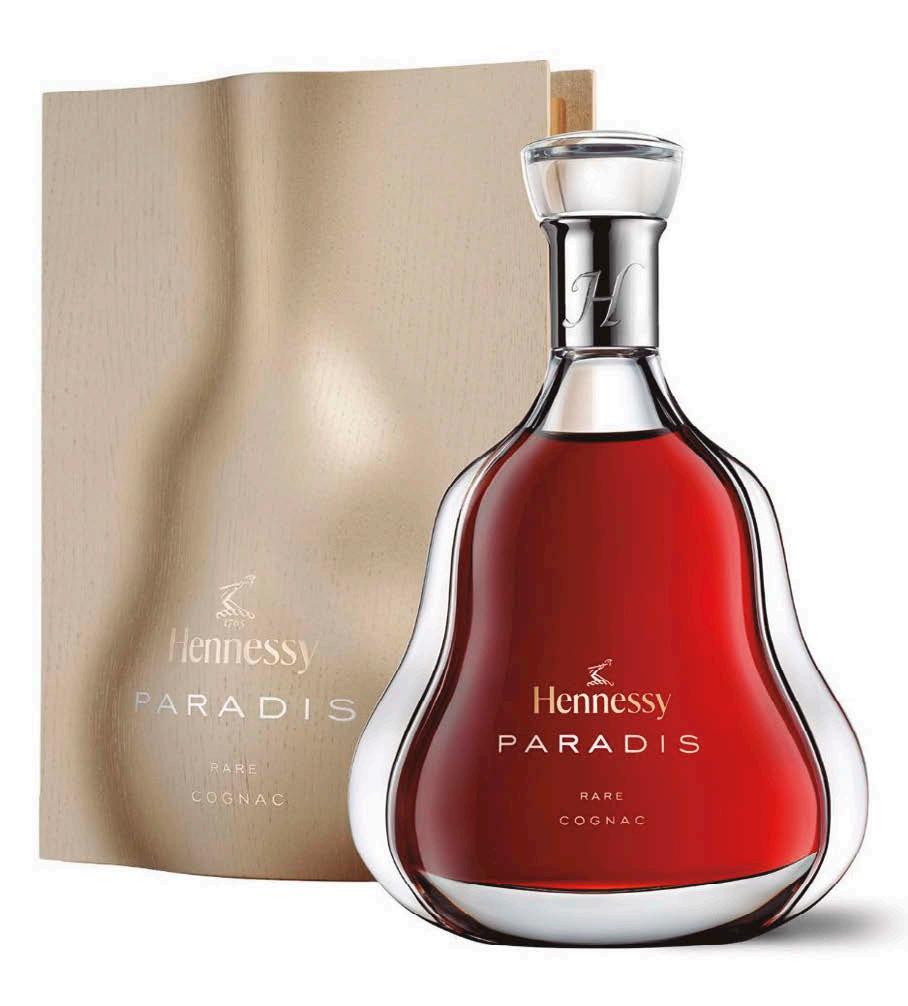
83 FERIAS I TRADE FAIRS & EVENTS
innovations and new packaging launched in the international premium and luxury beverage market over the past year. The jury, made up of 12 people (representing the companies Moët Hennessy, Champagne Taittinger, Pernod Ricard, Bacardi, Rémy Cointreau and The Coca Cola Company), met at the Jujin New York
Luxury Packaging facilities on December 8, 2023 to study participating applications. The president of the jury was Christophe Mantoz from Eurostampa.
In total, the jury decided to award the following 11 prizes and 3 certificates:
New category:
Mass Market Innovation (< 15 €)
Award: LatCub® Premium – Heineken
Certificate: Vodka – Stratus Packaging
New category:
Mass Market Innovation (entre 15 € – 30 €)
Award: On the Fringe – Denomination Super & Ultra Premium Innovation (entre 30 € – 100 €)
Award: Rhum J.M Canopée – Westrock
Certificate: Gray Goose Night Vision 2023 –Bacardi
Luxury Innovation (entre 100 € – 1000 €)
Award: Bouteille Tequila Barajas – Tequila
Barajas Sarl
Award: Horizon Single Cru – Martell
Hyper Luxe and Bespoke (> 1000 €)
Award: Hennessy Paradis – Hennessy/Pusterla
1880/Danzer
Certificate: Grand Marnier Quintessence –Ritual Ribbon Pourer – Grand Marnier/Chic
Special Jury Prize
Collection Dames Jeanne Martell – Martell et Cie – Packaging ultra prestige
PLD Sustainable Innovation
Award: Perrier-Jouët Belle Époque Cocoon –Limited Edition Fernando Laposse – Maison Perrier-Jouët (MMPJ, Pernod Ricard)
Award: Hautes de Glaces – Remy Cointreau
Packaging Redesign
Award: Emblematic Institutional Coffret Dom Pérignon – Dom Pérignon/Pusterla 1880
Value Added Packaging
Award: Dugas Advent Calendar
– La Bibliothèque du Whisky/Rhum – Dugas, Distributeur de spiritueux exceptionnels / MPO
ADF Innovation Awards
El jurado de los ADF Innovation Awards (compuesto por 19 personas que representan a L’Oréal, Unilever International, Procter & Gamble, Henkel y Coty) decidió conceder 6 premios y 6 certificados para premiar las mejores innovaciones y nuevos envases lanzados el año pasado en el mercado mundial de aerosoles y sistemas de dispensación. Alain D’Haesse fue el presidente del jurado. Los ganadores de las seis categorías son los siguientes: (ver versión en inglés).
The ADF Innovation Awards jury (made up of 19 people representing L'Oréal, Unilever International, Procter & Gamble, Henkel and Coty) decided to award 6 prizes and 6 certificates to reward the best innovations and new packaging launched last year in the
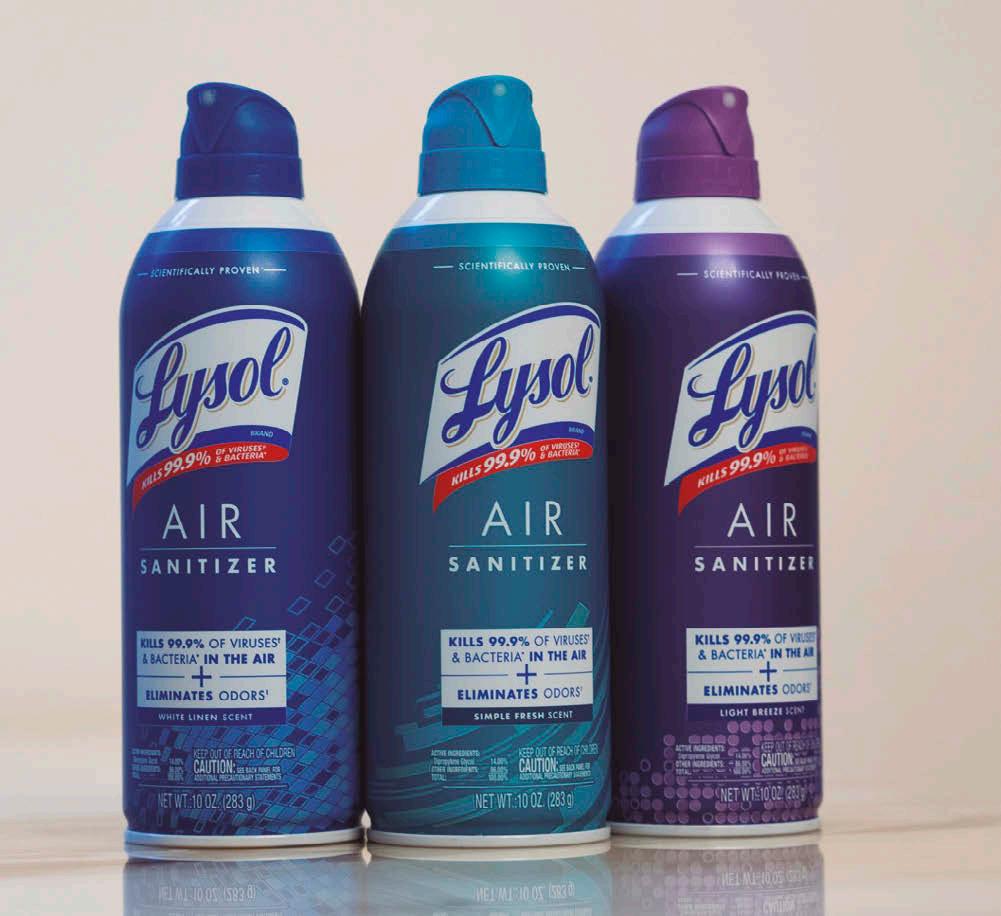
global market for aerosols and dispensing systems. Alain D'Haesse was the president of the jury.
The winners of the six categories are the following:
ADF Sustainable Innovation
Award: Minimalist – TUBEX GmbH
Certificate: Nivea Déo Spray +New aerosol production center in Leipzig – Beiersdorf AG
Certificate: Steel mounting cups with CFPA and BPA-NI coating – ArcelorMittal Flat Europe
Personal Care
Award: Creamy toothpaste PureOra 36500 –Kao Corporation
Certificate: SAGE® Azalea Flow Control – DTS Europe
Certificate: Recharging solution Respray
Solutions Kft – TUBEX GmbH
Certificate: Nivea Pearl & Beauty–TUBEX GmbH
Household
Award: Assainisseur d’air Lysol – Reckitt Industrial & Technical Application
Award: One-piece steel coil for Förch TF60 –xtracan GmbH
Concept of the year
Award: Kao Salon Color Wizard – Kao Germany
Certificate: Rainbow – TUBEX GmbH
New category: Award « FEA Aerosol Technology of the Year »
Award: Rabanne Shimmer Bomb – Groupe Envases
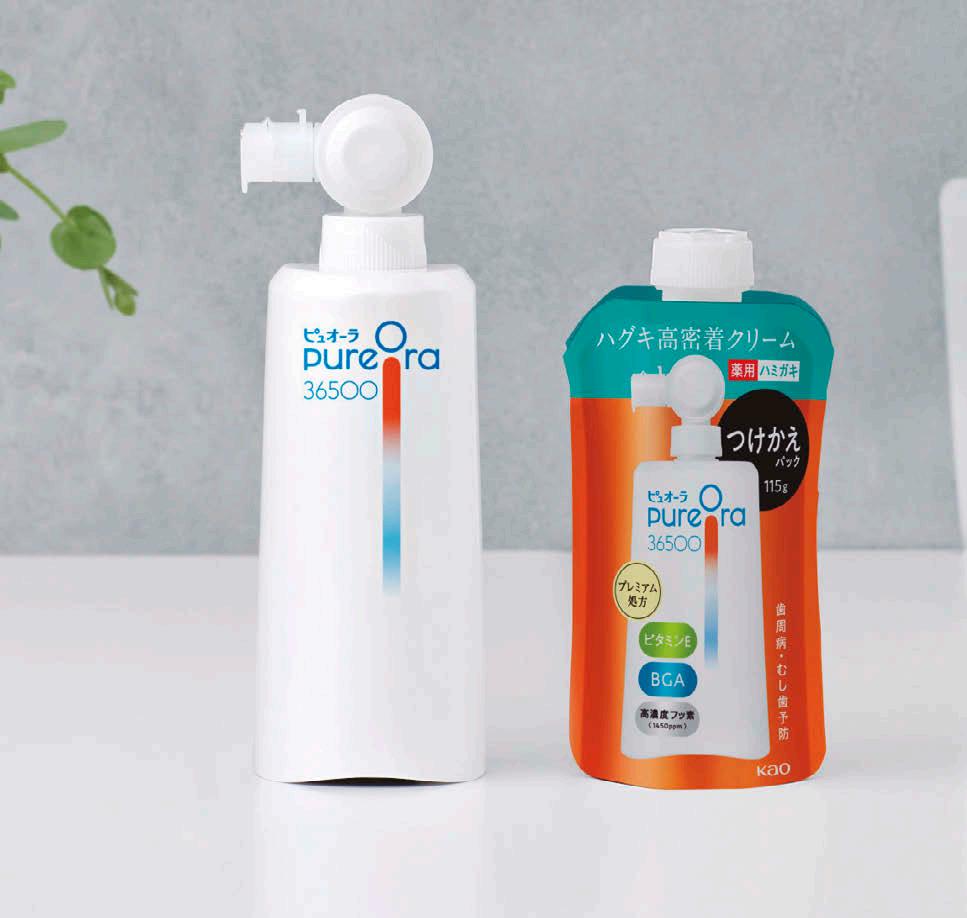
84 FERIAS I TRADE FAIRS & EVENTS





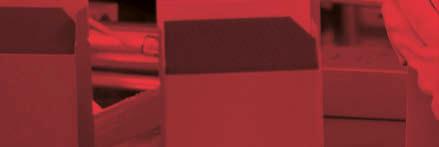


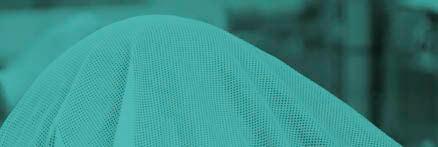




Nueva edición de New edition of Pick&Pack y and Food 4 Future-Expo Foodtech en in Bilbao
Pick&Pack for Food Industry desembarca en el BEC de Bilbao del 16 al 18 de abril de 2024, convertido en el evento de referencia en packaging y logística para la industria alimentaria y bebidas. La cita se celebra de forma simultánea con Food 4 Future - Expo Foodtech 2024. En el marco de Pick&Pack tendrán lugar el Congreso Nacional de Packaging 4.0, que aportará una nueva visión sobre las últimas innovaciones de la industria del packaging, y el European Logistics Summit 2024, donde se presentarán las novedades, tendencias, casos de éxito e ideas más disruptivas del momento para llevar los sistemas logísticos al siguiente nivel de productividad.
Asimismo, más de 180 firmas expositoras mostrarán en Pick&Pack sus últimas soluciones en sistemas de procesado, envases y embalajes, robótica, logística, transporte, rastreabilidad y trazabilidad, supply chain, etiquetaje y codificación, sistemas de embalaje y nuevos materiales para packaging; además de tecnologías como la Inteligencia Artificial, blockchain, IoT o Analítica de Datos.
Foodtech Startup Forum e Innovations Awards
Este año, como novedad, el Foodtech Startup Forum, que ya cuenta con tres ediciones celebradas en el marco de F4F – Expo Foodtech, acogerá también presentaciones de proyectos de logística y packaging para el sector alimentario. Se espera que más de 200 nuevas startups
participen en este foro, que busca desarrollar los ecosistemas de innovación en torno a la cadena de valor de la industria alimentaria. Del conjunto de candidaturas, un comité de expertos seleccionará las 60 más innovadoras, que podrán presentar su proyecto ante fondos de inversión y empresas líderes del sector durante los tres días del evento.
Además, en el marco de esta gran semana de la industria alimentaria, se dan cita también los Foodtech Innovations Awards 2024, los premios anuales que reconocen el liderazgo de aquellas empresas que están incrementando su reputación con las iniciativas más innovadoras en cuanto a tecnología, sostenibilidad, packaging circular y logística inteligente en la industria alimentaria. Los ganadores se darán a conocer el 17 de abril en una cena de gala celebrada en Bilbao en el marco de la feria.
Pick&Pack for Food Industry arrives at the BEC in
Bilbao from April 16 to 18, 2024, becoming the reference event in packaging and logistics for the food and beverage industry. The event is held simultaneously with Food 4 Future - Expo Foodtech 2024.
Within the framework of Pick&Pack, the National Packaging 4.0 Congress will take place, which will provide a new vision of the latest innovations in the packaging industry, and the European Logistics Summit 2024, where the latest developments, trends, success stories and ideas



will be presented. disruptive technologies of the moment to take logistics systems to the next level of productivity.
Likewise, more than 180 exhibiting companies will show at Pick&Pack their latest solutions in processing systems, containers and packaging, logistics robotics, transportation, traceability and traceability, supply chain, labeling and coding, packaging systems and new materials for packaging; in addition to technologies such as Artificial Intelligence, blockchain, IIoT or Data Analytics.
Foodtech Startup Forum and Innovations Awards
This year, as a novelty, the Foodtech Startup Forum, which already has three editions held within the framework of F4F – Expo Foodtech, will also host presentations of logistics and packaging projects for the food sector. More than 200 new startups are expected to participate in this forum, which seeks to develop innovation ecosystems around the food industry value chain. From the set of applications, a committee of experts will select the 60 most innovative, who will be able to present their project to investment funds and leading companies in the sector during the three days of the event.
Furthermore, within the framework of this great week for the food industry, the Foodtech Innovations Awards 2024 also take place, the annual awards that recognize the leadership of those companies that are increasing their reputation with the most innovative initiatives in terms of technology, sustainability , circular packaging and smart logistics in the food industry. The winners will be announced on April 17 at a gala dinner held in Bilbao as part of the fair.
86 FERIAS I TRADE FAIRS & EVENTS

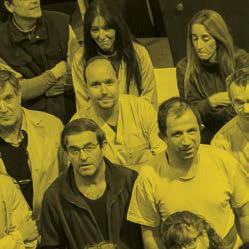


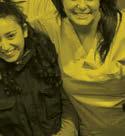





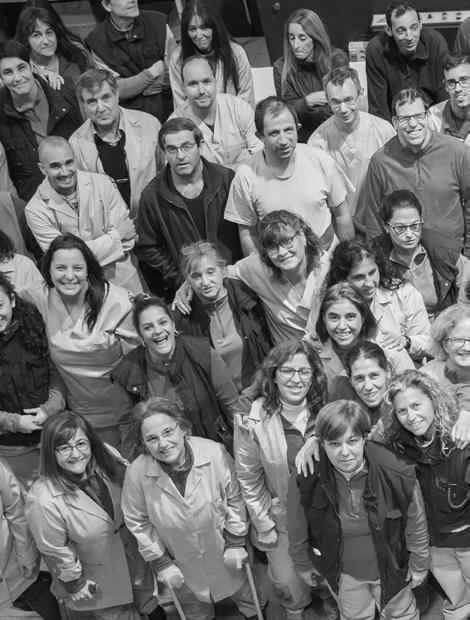
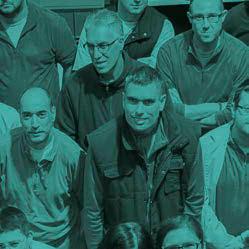
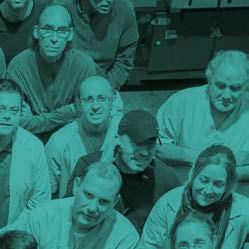





Congreso AIFEC 2024 en Lisboa AIFEC 2024 Congress in Lisbon
La próxima edición del congreso anual de la Asociación Ibérica de Fabricantes de Etiquetas en Continuo (AIFEC) será del 16 al 19 de mayo en el Hotel Crowne Plaza de Lisboa, Portugal. El congreso de este año conmemora el 25 aniversario de la creación de AIFEC. Además, se rendirá homenaje a la excelencia del sector con la entrega de los Premios AIFEC a las mejores etiquetas del año.
Con el lema «Un sector de futuro y sostenible», el congreso se centra en explorar y promover prácticas sostenibles en la industria de las etiquetas. Las ponencias destacadas abordarán temas cruciales como la sostenibilidad en el sector de las etiquetas, la integración de la inteligencia artificial y talleres dedicados a la sostenibilidad social.
25 Aniversario
La Asociación Ibérica de Fabricantes de Etiquetas en Continuo, AIFEC, celebra su 25 aniversario. Fundada en 1999, AIFEC tiene sus raíces en la Asociación de Fabricantes de
Etiquetas (AFE), gracias a la visión de Luis Gamundi, quien creó AFE, la que más tarde, en 1999, fue refundada por Iban Cid y José Merce bajo el nombre de Asociación Nacional de Fabricantes de Etiquetas (ANFEC). En 2018, ANFEC pasó a ser AIFEC, abriendo sus puertas a empresas de etiquetas en Portugal, y consolidándose como la Asociación Ibérica de Fabricantes de Etiquetas en Continuo, hasta hoy. Con más de 160 asociados, AIFEC se ha convertido en un referente para el sector.
The next edition of the annual congress of the Iberian Association of Continuous Label Manufacturers (AIFEC) will be from May 16 to 19 at the Crowne Plaza Hotel in Lisbon, Portugal. This year's congress commemorates the 25th anniversary of the creation of AIFEC. In addition, tribute will be paid to the excellence of the sector with the delivery of the AIFEC Awards to the best labels of the year.
With the motto "A sector of the future and sustainable", the congress focuses on exploring
Graphispag, la única feria gráfica en 2024 en España the only graphic fair in 2024 in Spain
Graphispag arranca máquinas para preparar la edición de 2024, que tendrá lugar del 1 al 3 de octubre próximo en el recinto de Gran Via de Fira de Barcelona. El emblemático salón volverá a reunir una amplia oferta de equipos y tecnología de impresión y acabados, así como materiales, consumibles y nuevas herramientas para crear productos gráficos que marquen la diferencia y que demuestren, a múltiples sectores usuarios, el valor de la impresión y sus posibilidades creativas y de negocio. Organizado por Fira de Barcelona en colaboración con Graphispack Asociación, Graphispag 2024 prevé reunir más de 140 empresas expositoras, entre ellas los suministradores líderes de equipos, maquinaria
y soportes de impresión, y 11.000 visitantes profesionales. El salón superará los 6.000 m2 netos de exposición comercial y de actividades en el pabellón 2 del recinto ferial.
Graphispag starts up machines to prepare for the 2024 edition, which will take place from October 1 to 3 at the Fira de Barcelona Gran Via venue. The emblematic show will once again bring together a wide range of printing and finishing equipment and technology, as well as materials, consumables and new tools to create graphic products that make a difference and that demonstrate, to multiple user sectors, the value of printing and its benefits. creative and business possibilities.

and promoting sustainable practices in the label industry. Featured presentations will address crucial topics such as sustainability in the label sector, the integration of artificial intelligence and workshops dedicated to social sustainability.
25th anniversary
The Iberian Association of Continuous Label Manufacturers, AIFEC, celebrates its 25th anniversary. Founded in 1999, AIFEC has its roots in the Association of Label Manufacturers (AFE), thanks to the vision of Luis Gamundi, who created AFE, which later in 1999 was refounded by Iban Cid and José Merce under the name of the National Association of Label Manufacturers (ANFEC). In 2018, ANFEC became AIFEC, opening its doors to label companies in Portugal, and consolidating itself as the Iberian Association of Continuous Label Manufacturers, until today.
With more than 160 associates, AIFEC has become a benchmark for the sector.
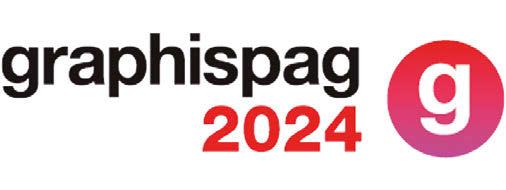

Organized by Fira de Barcelona in collaboration with Graphispack Association, Graphispag 2024 plans to bring together more than 140 exhibiting companies, including leading suppliers of equipment, machinery and printing media, and 11,000 professional visitors. The show will exceed 6,000m2 net of commercial exhibition and activities in pavilion 2 of the fairgrounds.
88 FERIAS I TRADE FAIRS & EVENTS
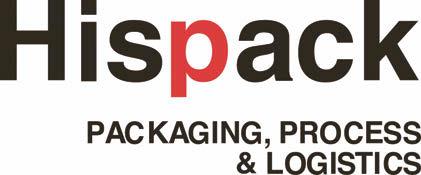
Todas las soluciones de packaging para la industria, en All packaging solutions for the industry, in Hispack 2024
Del 7 al 10 de mayo vuelve Hispack, la mayor feria de envase y embalaje del mercado ibérico y una de las primeras de Europa de su especialidad. En esta edición, el emblemático salón que organiza Fira de Barcelona crece en dimensión y participación de empresas y será mucho más representativo de toda la cadena de valor del packaging, incluyendo también el proceso y la logística. Su oferta superará los 720 expositores, de más 20 países, y 1.250 marcas representadas en los pabellones 2 y 3 del recinto ferial de Gran Via. Se espera la visita de más de 27.000 profesionales. El pabellón 2 será de visita obligada y concentrará en el sector de Brand Packaging la participación de empresas de todo tipo de materiales para packaging, diseños de envases que minimizan el uso de plásticos no reciclables, alternativas de reutilización y reciclaje, además de envases cosméticos recargables o soluciones de Smart packaging. También destaca el área “Premium Pack” con materiales, envases, estuchería y PLV para la transmisión de una sensación de lujo, exclusividad y calidad superior que no tiene que estar reñida con el cuidado del entorno y la circularidad. Por su parte, en el pabellón 3 se exhibirán equipos, maquinaria y tecnología para el proceso de envasado, etiquetado y trazabilidad de productos cosméticos, perfumería o higiene y cuidado personal.
Conocimiento y tendencias Como complemento de la oferta comercial, Hispack contará con el espacio de conocimiento “Unboxing” cuyas ponencias se centrarán en la sostenibilidad, como tema monográfico que cubre todo el ciclo de vida del packaging. Se hablará de materiales, diseños, estrategias, innovación y de la sostenibilidad del envase aplicada en industrias finales como la perfumería y cosmética. Relacionado con este último punto, se presentará el programa Best in class, que reconocerá a varias empresas clientes de los expositores de Hispack como ejemplo de buenas prácticas en la incorporación de soluciones de packaging con alto impacto innovador y transformador de sus productos y procesos, entre las cuales habrá casos de éxito del sector de la cosmética. También se incluirán otras jornadas y actividades convocadas por asociaciones como Aerce, el Packaging Cluster o el Beauty Cluster. De este modo, Hispack se convertirá en un ineludible foro sectorial para analizar tendencias, retos y problemáticas del sector cosmético en materiales reciclados y alternativos, reciclaje y reutilización de packaging y compartir experiencias.

From May 7 to 10, Hispack returns, the largest packaging fair in the Iberian market and one of the first in Europe of its specialty. In this edition, the emblematic show organized by Fira de Barcelona grows in size and participation of companies and will be much more representative of the entire packaging value chain, also including the process and logistics. Its offer will exceed 720 exhibitors, from more than 20 countries, and 1,250 brands represented in pavilions 2 and 3 of the Gran Via
exhibition center. More than 27,000 professionals are expected to visit. Hall 2 will be a must-see and will concentrate in the Brand Packaging sector the participation of companies from all types of packaging materials, packaging designs that minimize the use of non-recyclable plastics, reuse and recycling alternatives, as well as refillable cosmetic containers. or Smart packaging solutions. The “Premium Pack” area also stands out with materials, packaging, cases and POS for the transmission of a feeling of luxury, exclusivity and superior quality that does not have to be at odds with the care of the environment and circularity. For its part, pavilion 3 will display equipment, machinery and technology for the packaging, labeling and traceability process of cosmetic, perfumery or hygiene and personal care products.
Knowledge and trends
As a complement to the commercial offer, Hispack will have the “Unboxing” knowledge space whose presentations will focus on sustainability, as a monographic topic that covers the entire packaging life cycle. We will talk about materials, designs, strategies, innovation and the sustainability of packaging applied in final industries such as perfumery and cosmetics. Related to this last point, the Best in class program will be presented, which will recognize several client companies of Hispack exhibitors as an example of good practices in the incorporation of packaging solutions with a high innovative and transformative impact on their products and processes, among others. which there will be success stories from the cosmetics sector. Other conferences and activities organized by associations such as Aerce, the Packaging Cluster or the Beauty Cluster will also be included. In this way, Hispack will become an unavoidable sector forum to analyze trends, challenges and problems of the cosmetic sector in recycled and alternative materials, recycling and reuse ofrecycling and reusing packaging and sharing experiences.
89 FERIAS I TRADE FAIRS & EVENTS

2024
March
ProWein
Düsseldorf, Germany
10-12 March 2024
www.prowein.es
Alimentaria
Barcelona, Spain
18-21 March 2024
www.alimentaria.com
Cosmopack
Bologna, Italy
21-23 March 2024
www.cosmoprof.com/en/the-fair/cosmopack
April
Food 4 Future
Bilbao, Spain
16-18 April 2024
www.expofoodtech.com
Pick & Pack for Food Industry
Bilbao, Spain
16-18 April 2024
www.pickpackexpo.com
Empack Porto
Porto, Portugal
17-18 April 2024
www.empacklogisticsautomationporto.com
May
Hispack
Barcelona, Spain
7-10 May 2024
www.hispack.com
Luxe Pack New York
New York, USA
8-9 May 2024
www.luxepacknewyork.com
Packaging Première & PCD Milan
Milano, Italy
21-23 May 2024
www.packagingpremiere.it
Congreso AFCO
San Sebastián, Spain
22-24 May 2024
https://afco.es
Drupa
Düsseldorf, Germany
28 May-7 June 2024
www.drupa.com
Make Up in Paris
Paris, France
29-30 May 2024
www.makeup-in.com/paris
June
Édition Spéciale by Luxe Pack
Paris, France
4-5 June 2024
www.editionspeciale-luxepack.com
Cosmetic Business
Munich, Germany
5-6 June 2024
www.cosmetic-business.com
September
ECMA Congress
Berlin, Germany
19-20 September 2024
https://ecma.org/events-and-promotion/ annual-congress/
Fachpack
Nuremberg, Germany
24-26 September 2024
www.fachpack.de
Luxe Pack Monaco
Monaco
30 September-2 October 2024
www.luxepackmonaco.com
October
Graphispag
Barcelona, Spain
1-3 October 2024
www.graphispag.com
Sustainability in Packaging Europe
Barcelona, Spain
8-10 October 2024
www.sustainability-in-packaging.com/ sustainability-in-packaging-europe
November
Pack Expo
Chicago, USA
3-6 November 2024
www.packexpointernational.com
All4Pack
Paris, France
4-7 November 2024
www.all4pack.com
Empack
Logistic & Automation
Madrid, Spain
27-28 November 2024
www.empackmadrid.com
90 AGENDA I EVENTS
21-23 May 2024, Gate 4 - Allianz MiCo, Milan www.packagingpremiere.it Scan the QR-code and register online Register for free with code 1208






































































































































































































